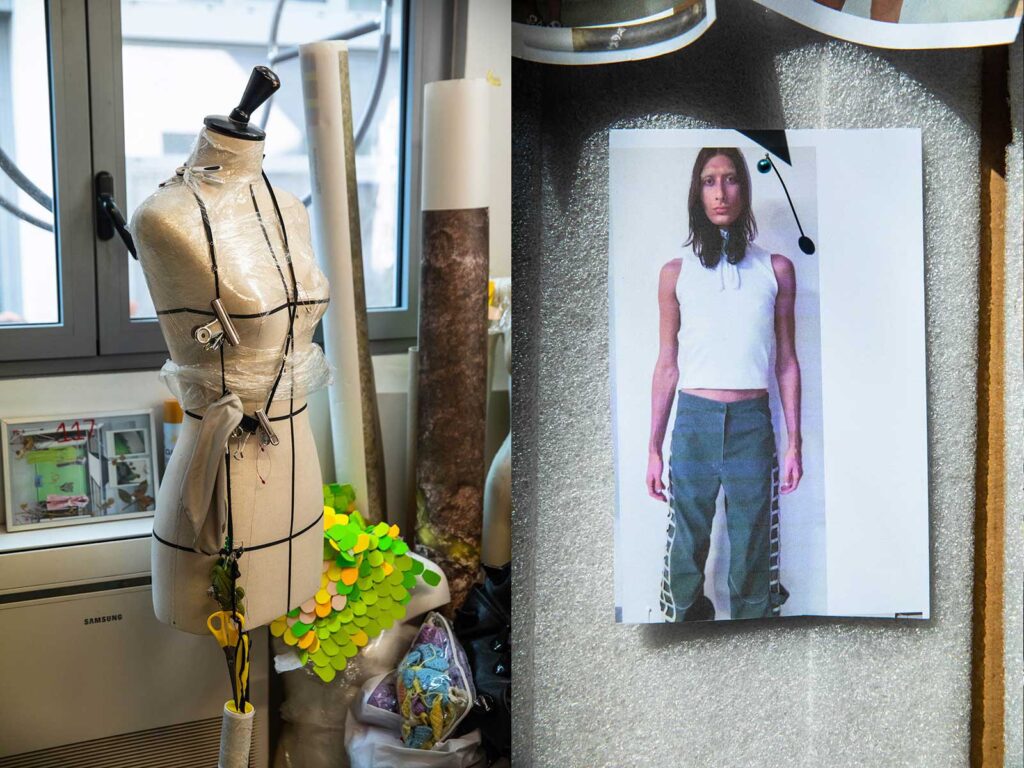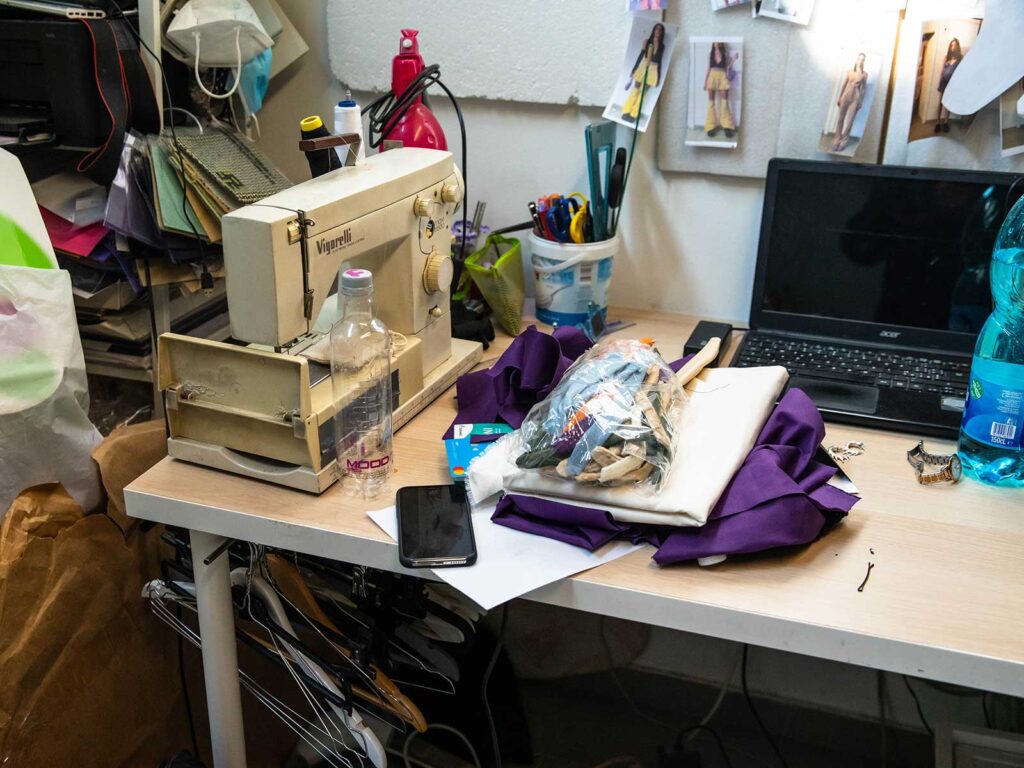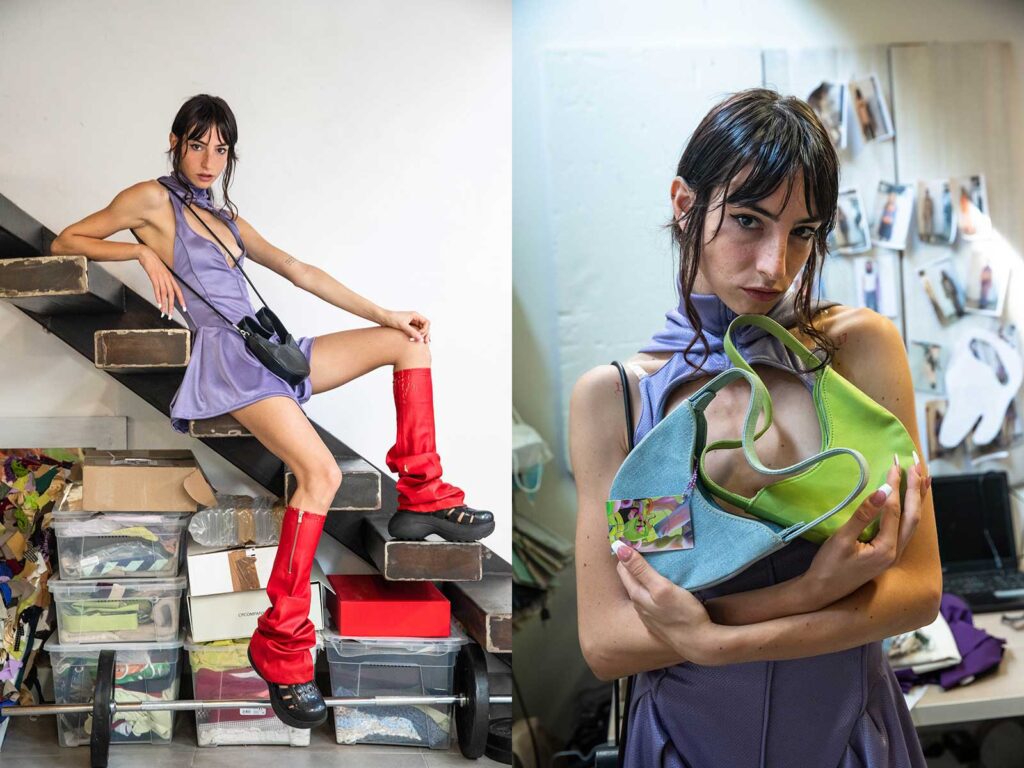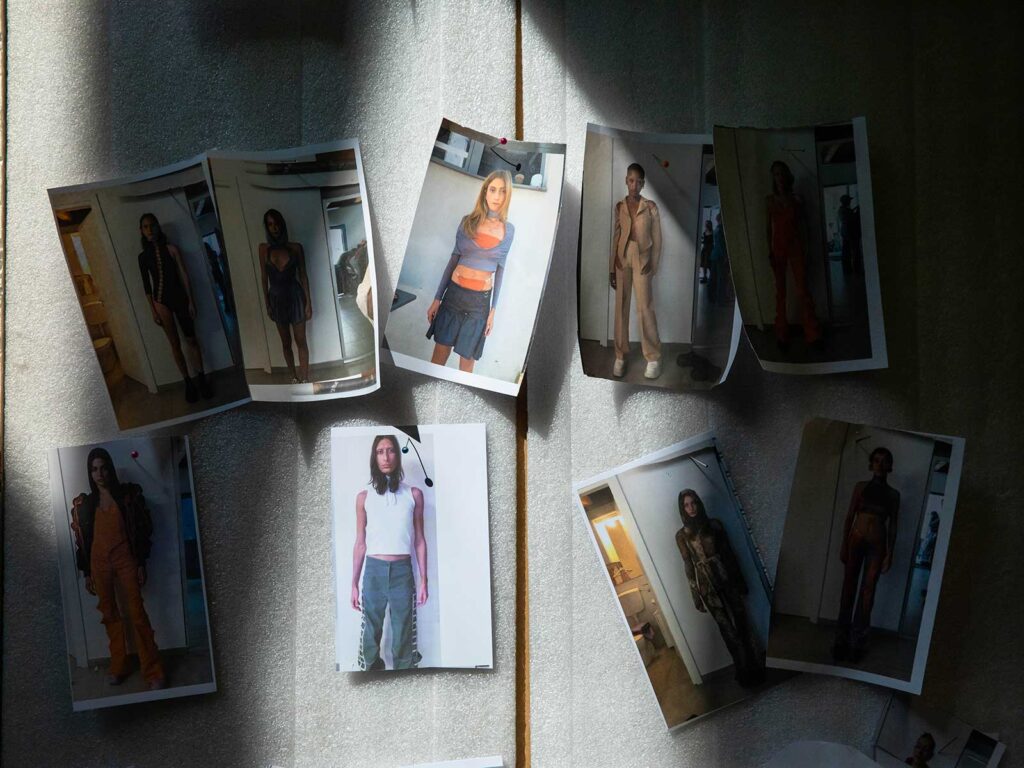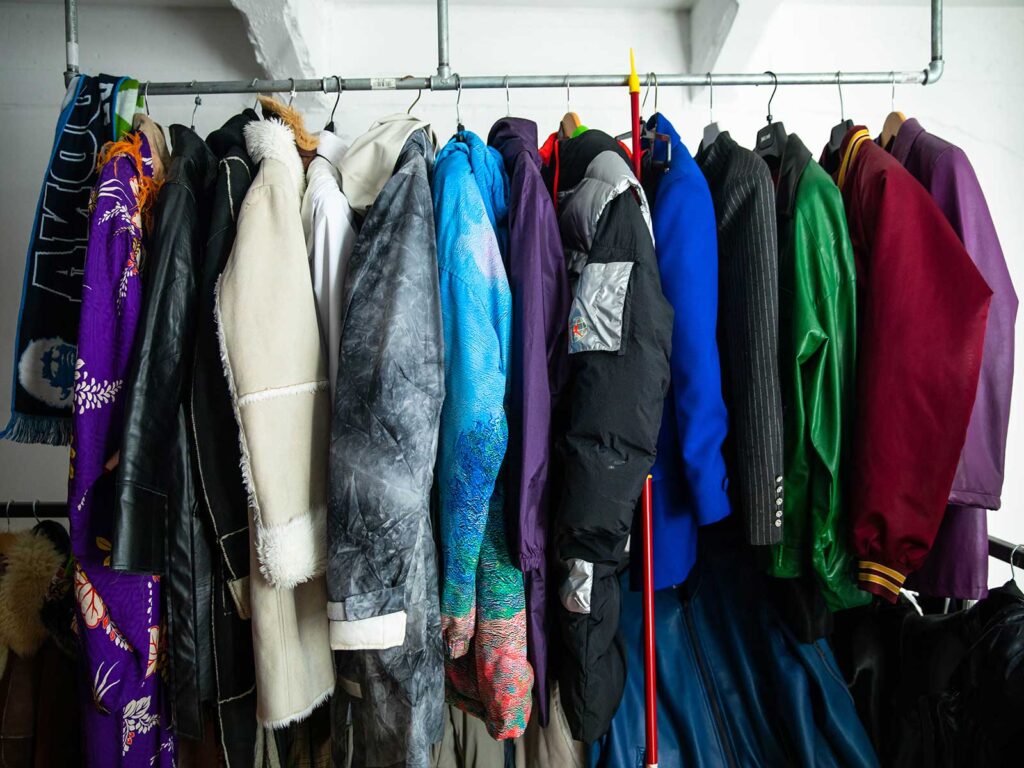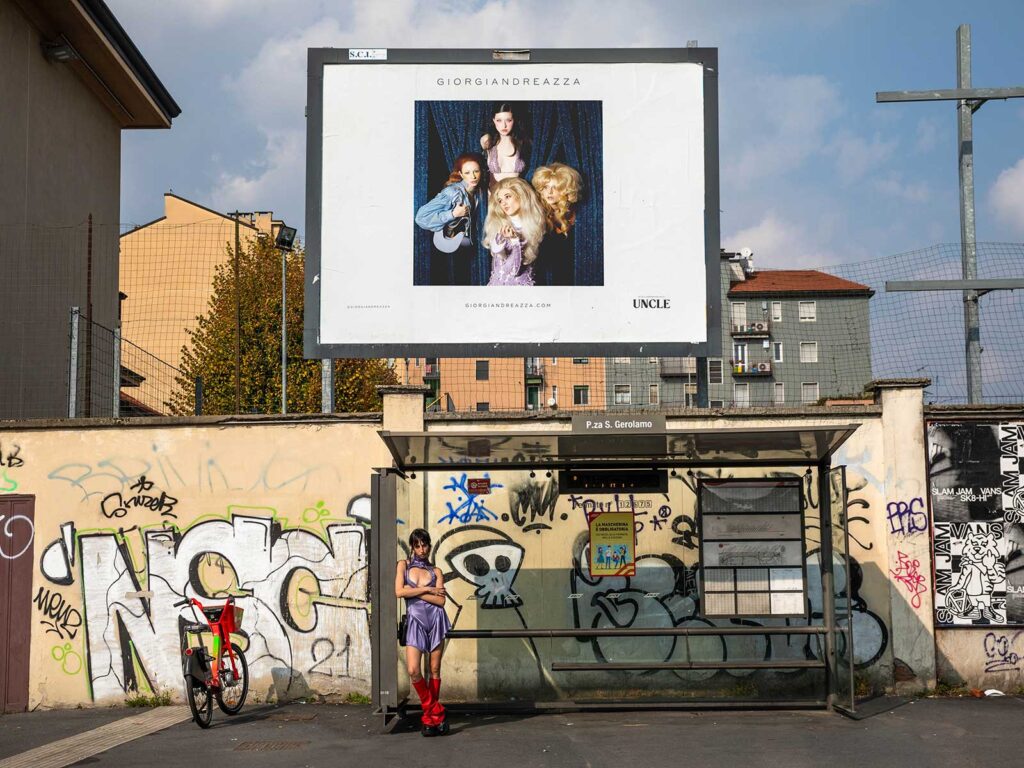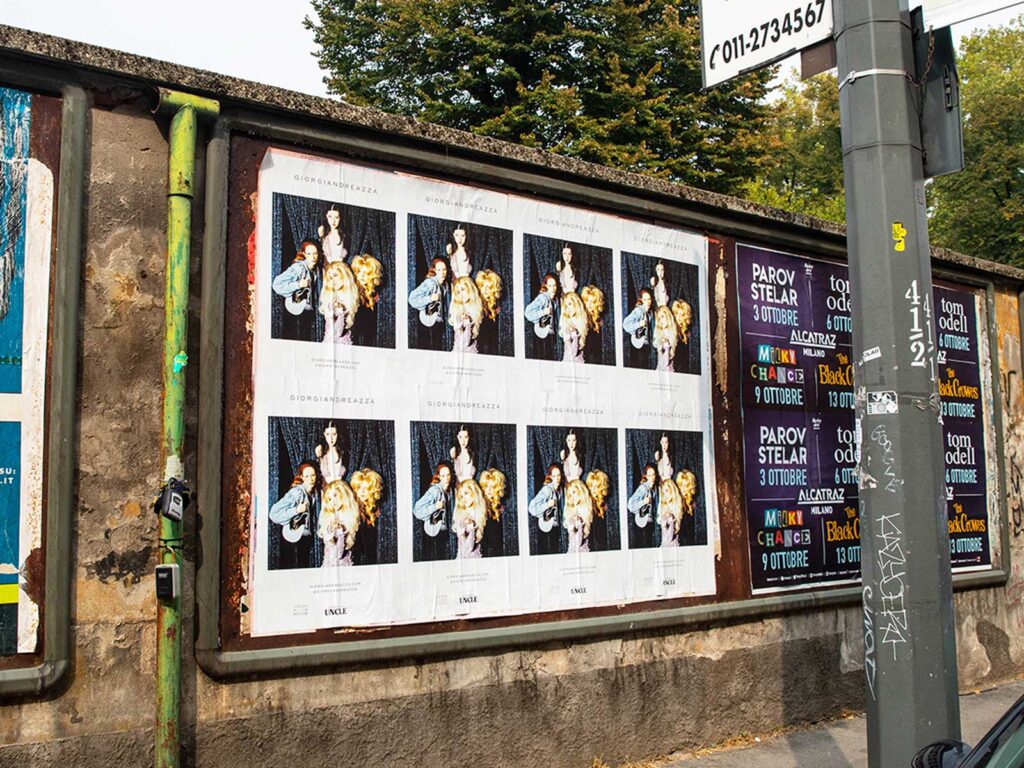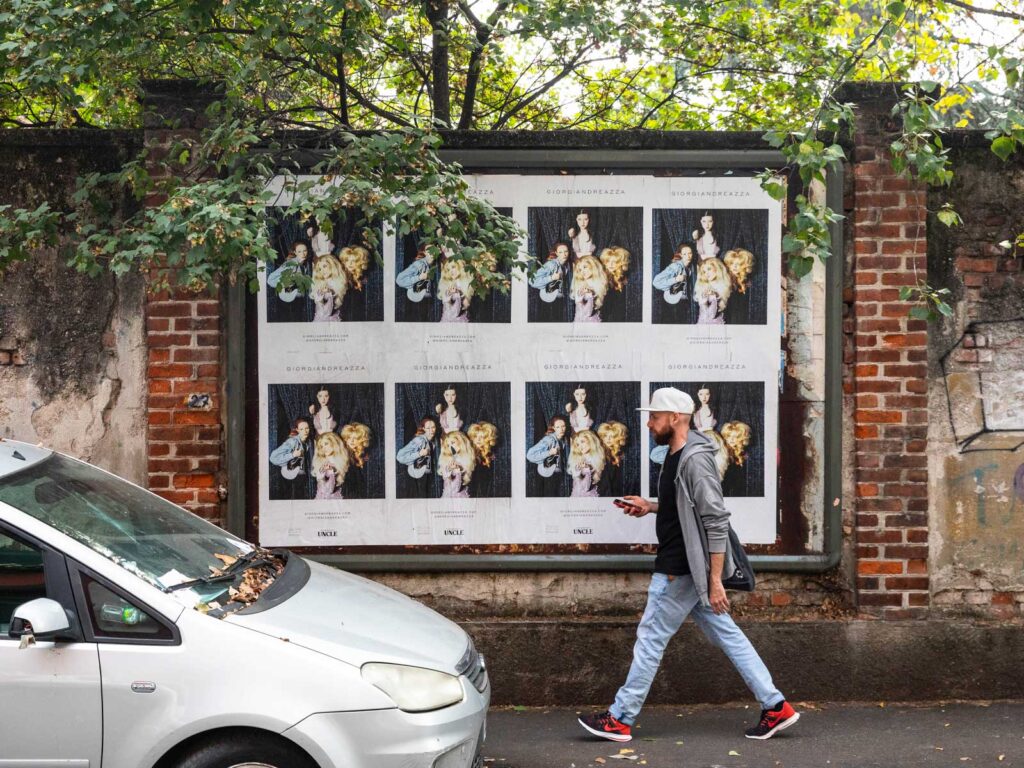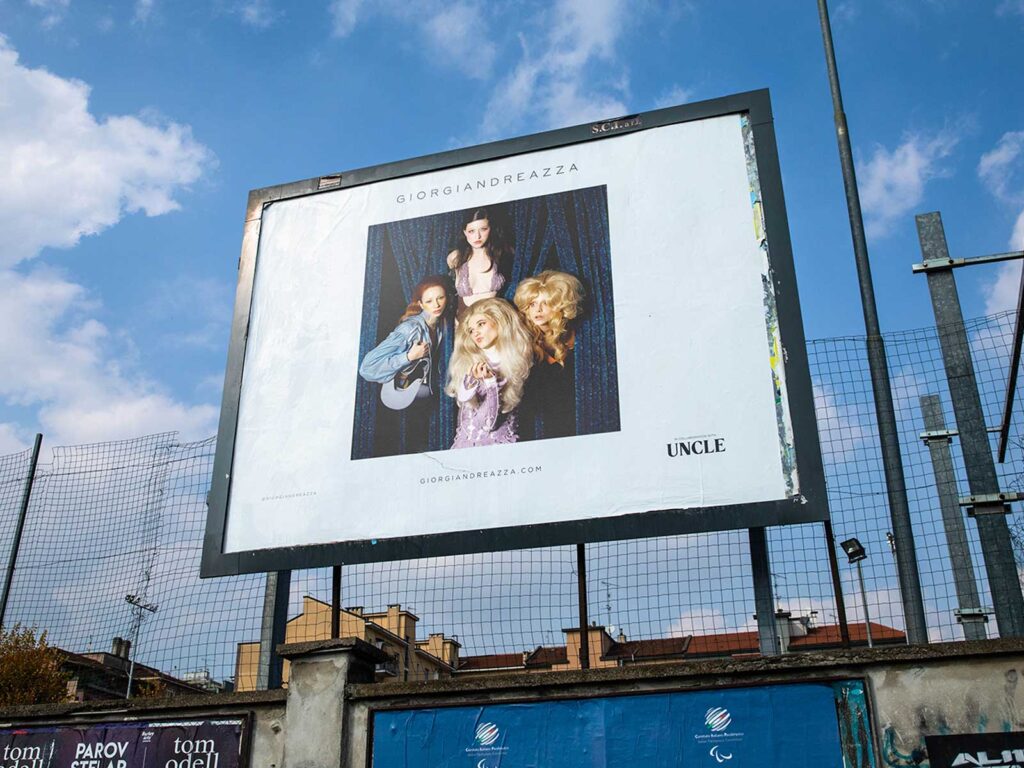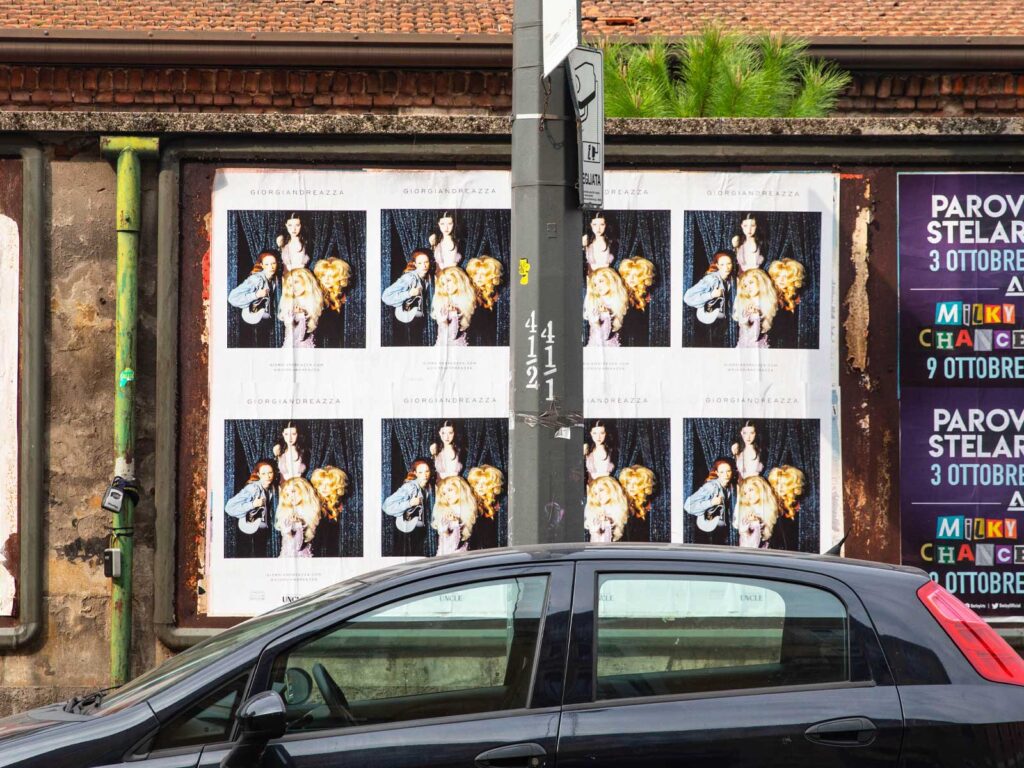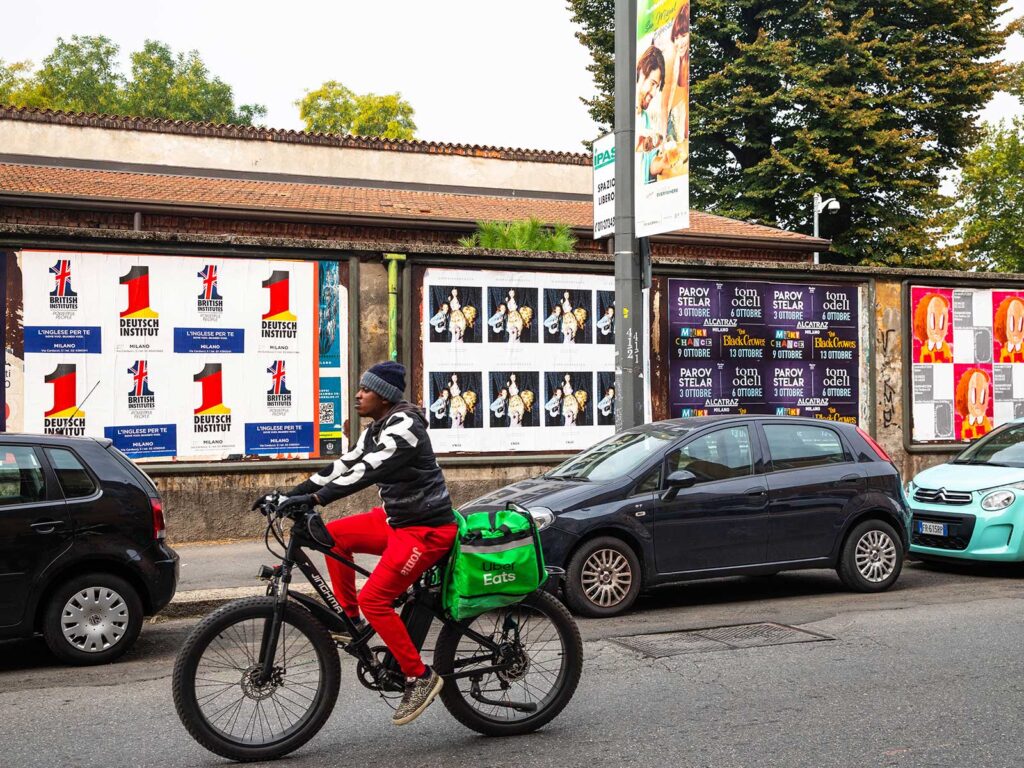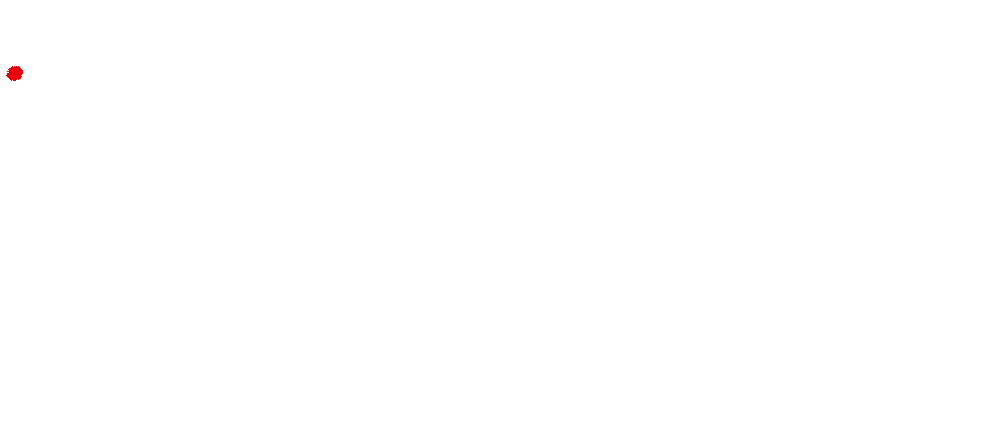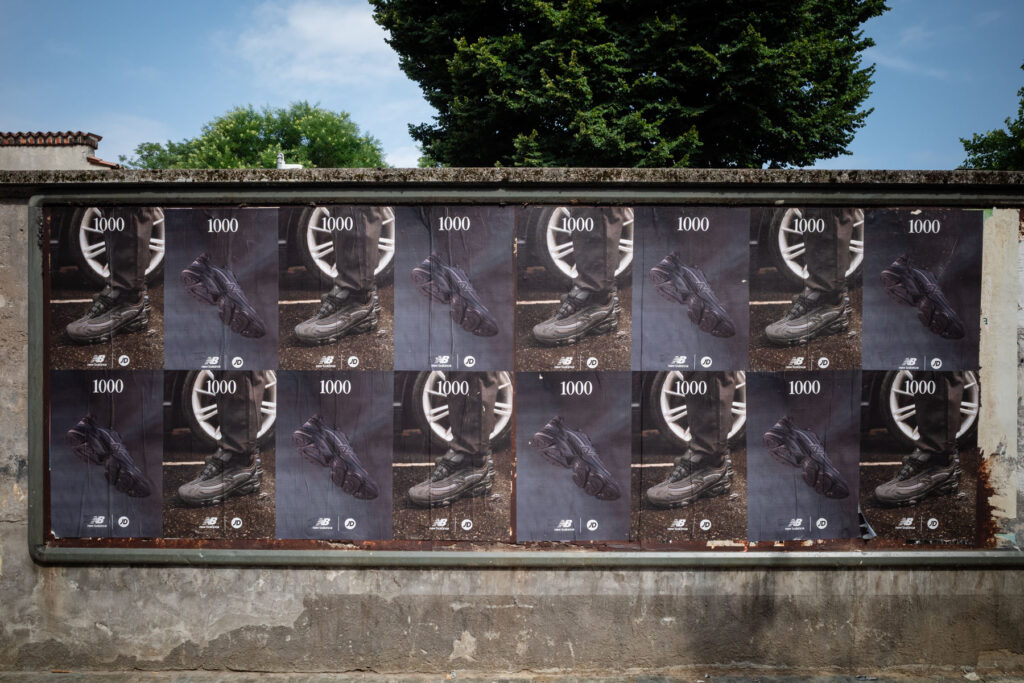
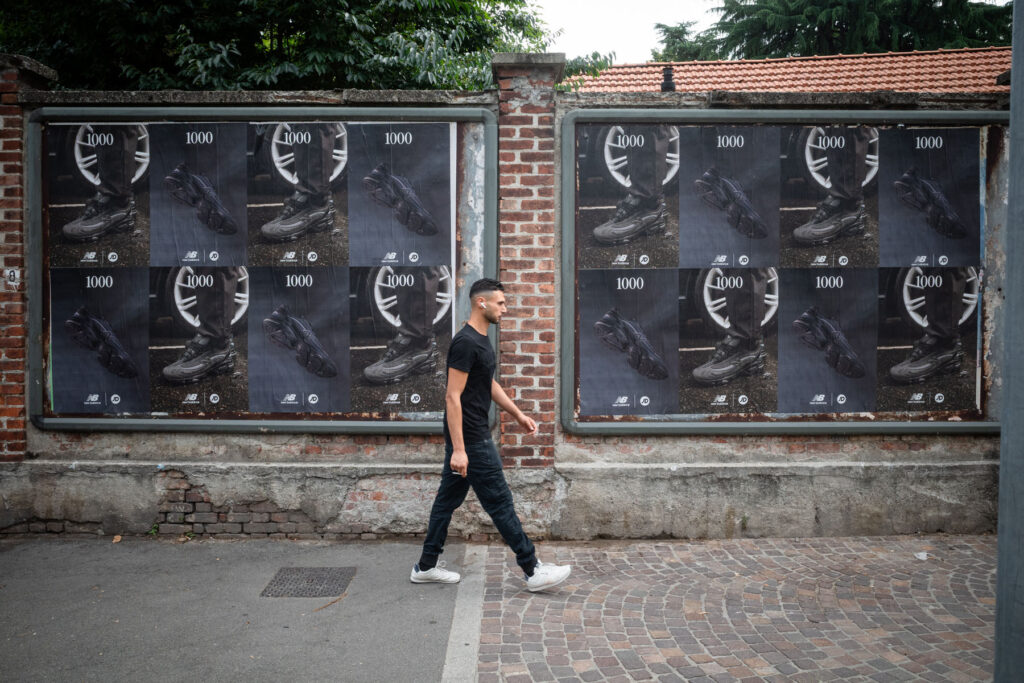
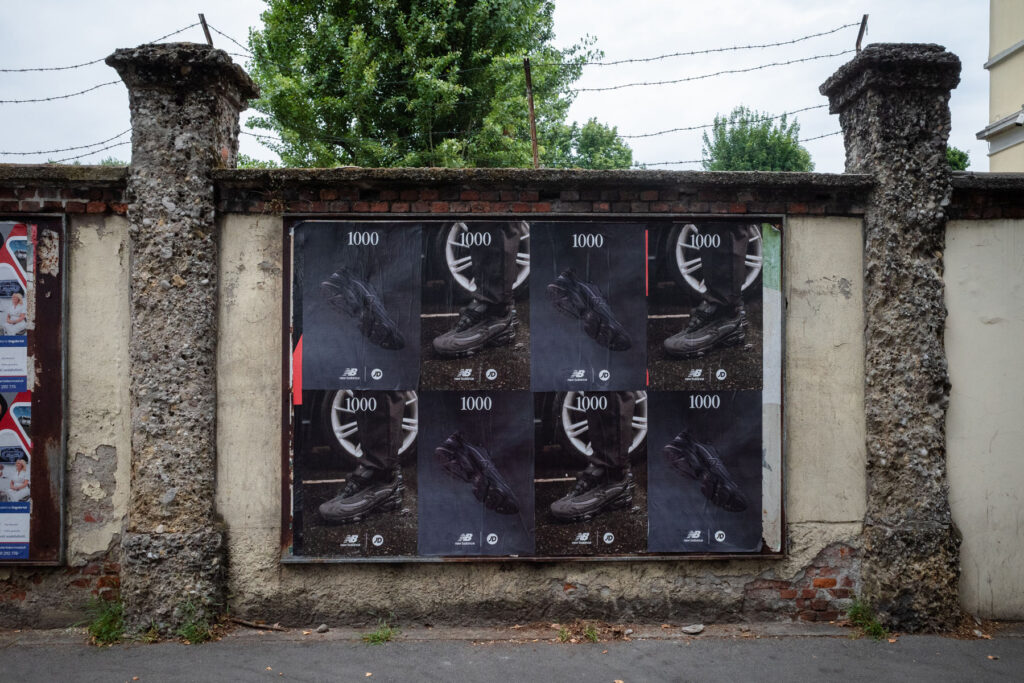
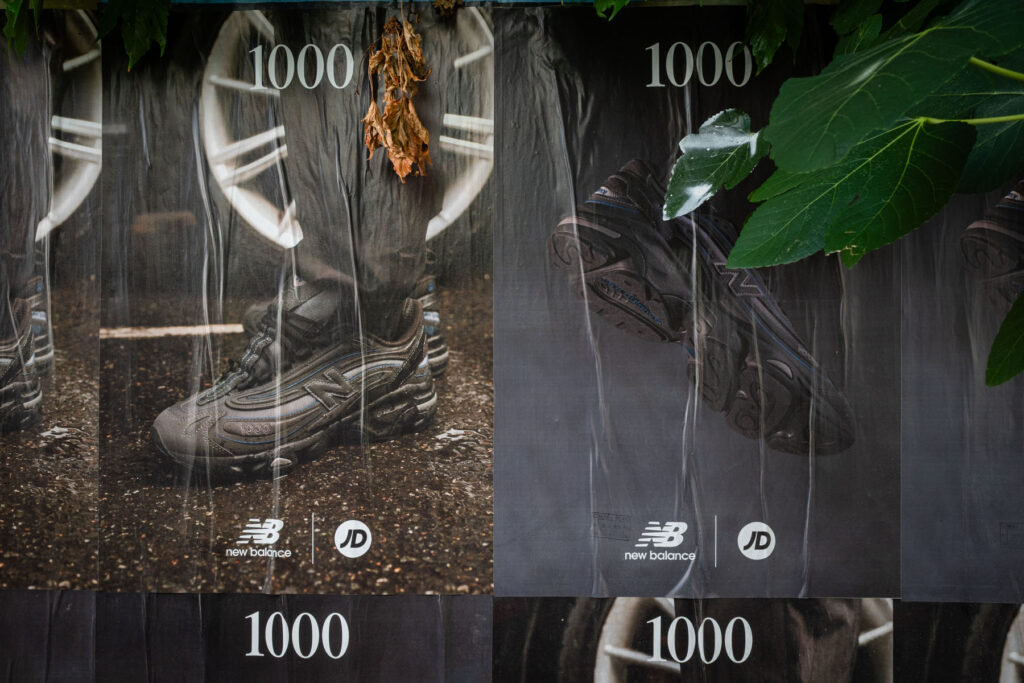


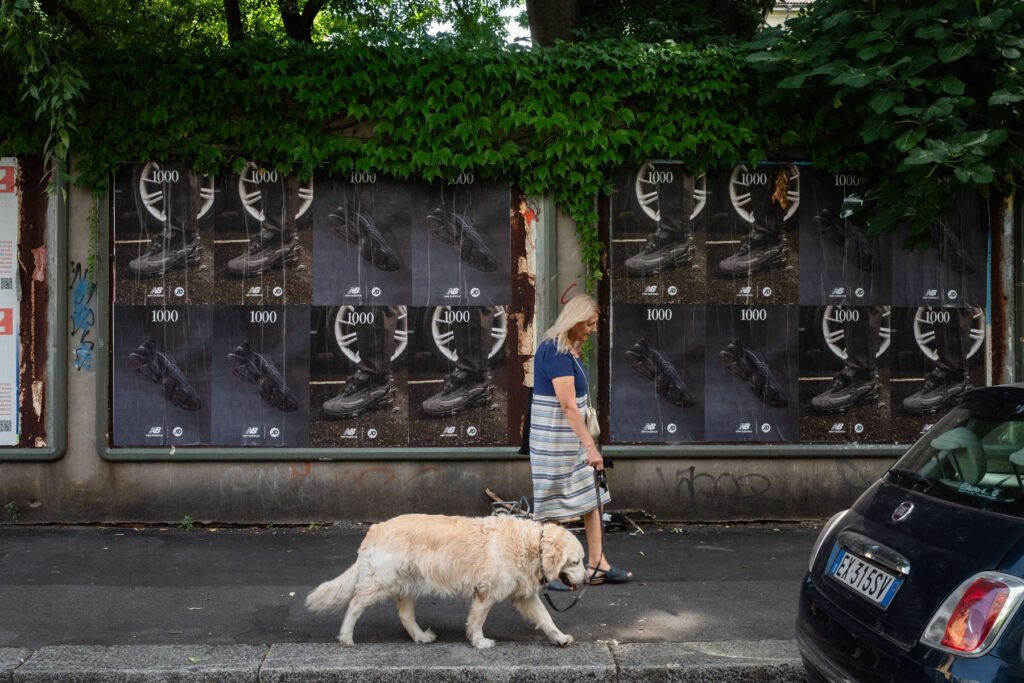


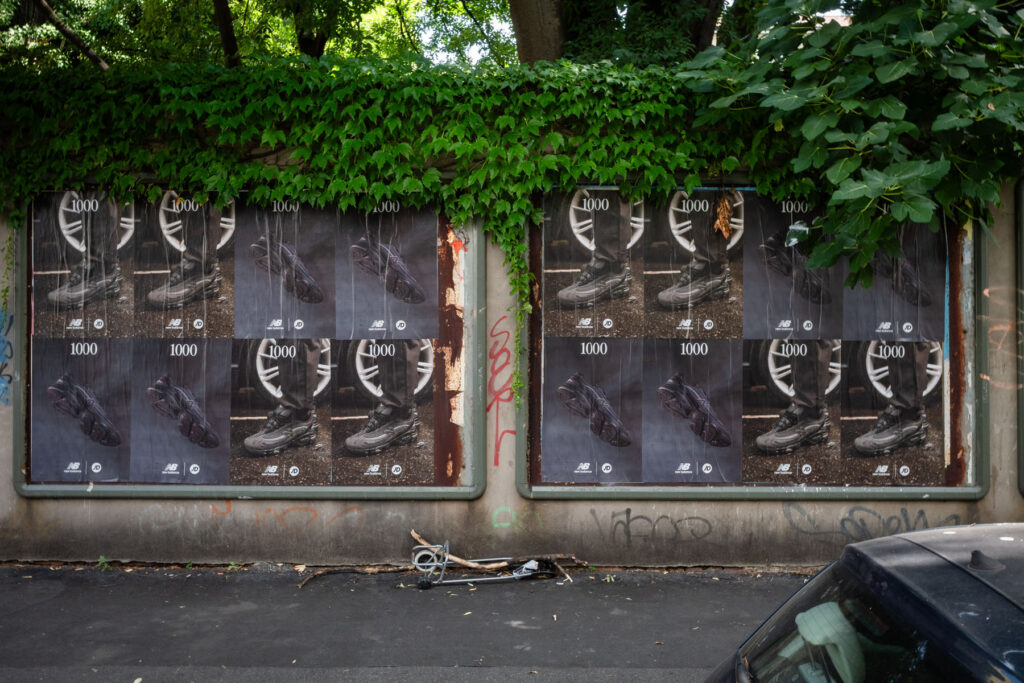

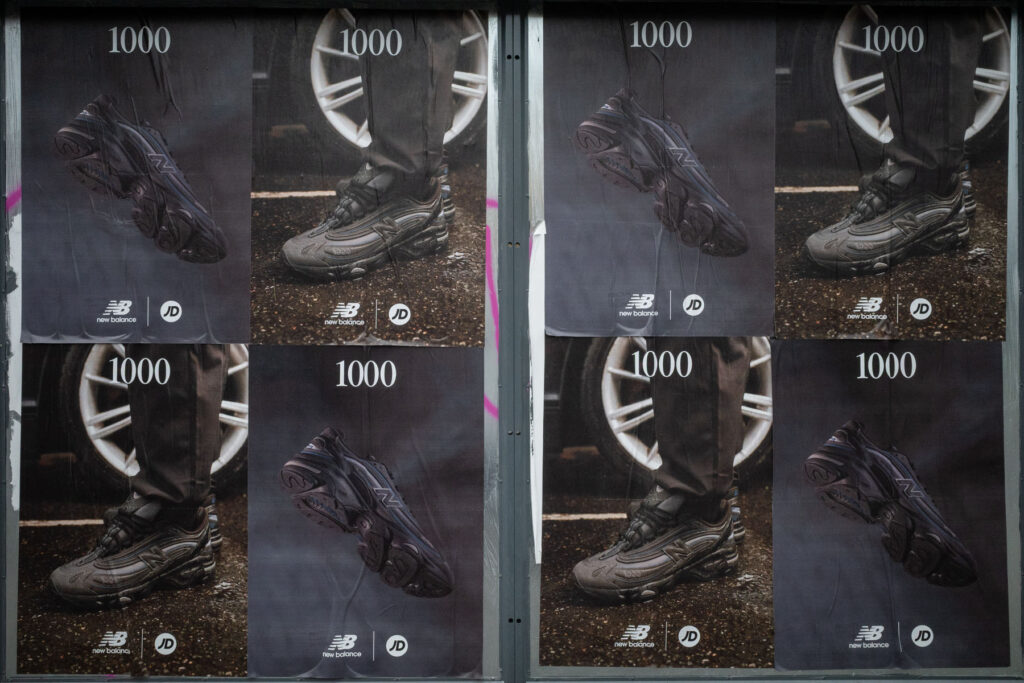













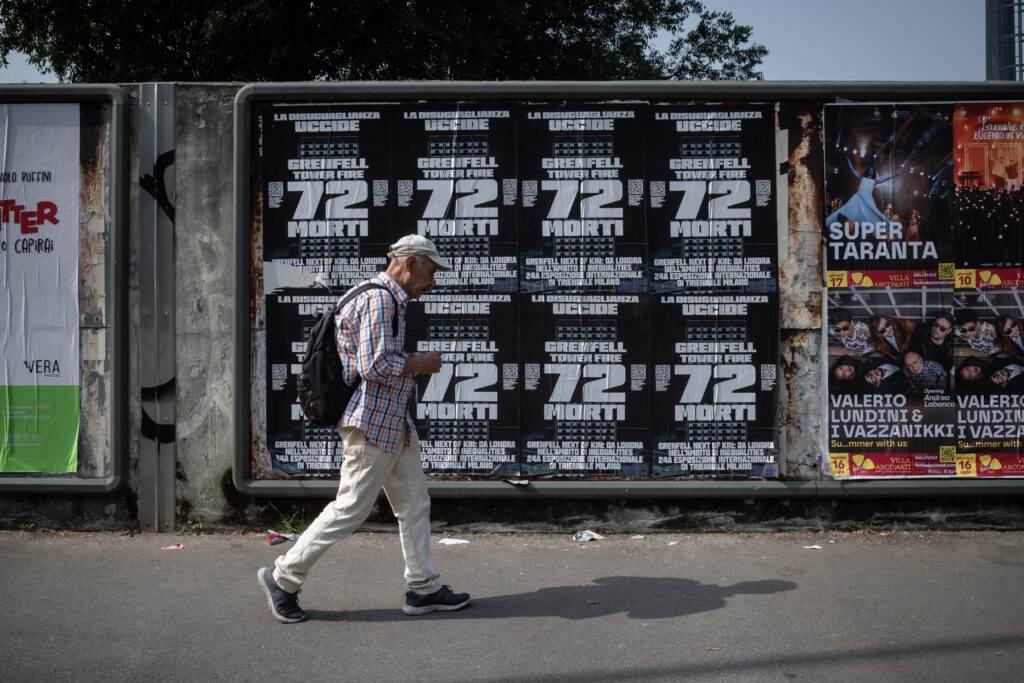
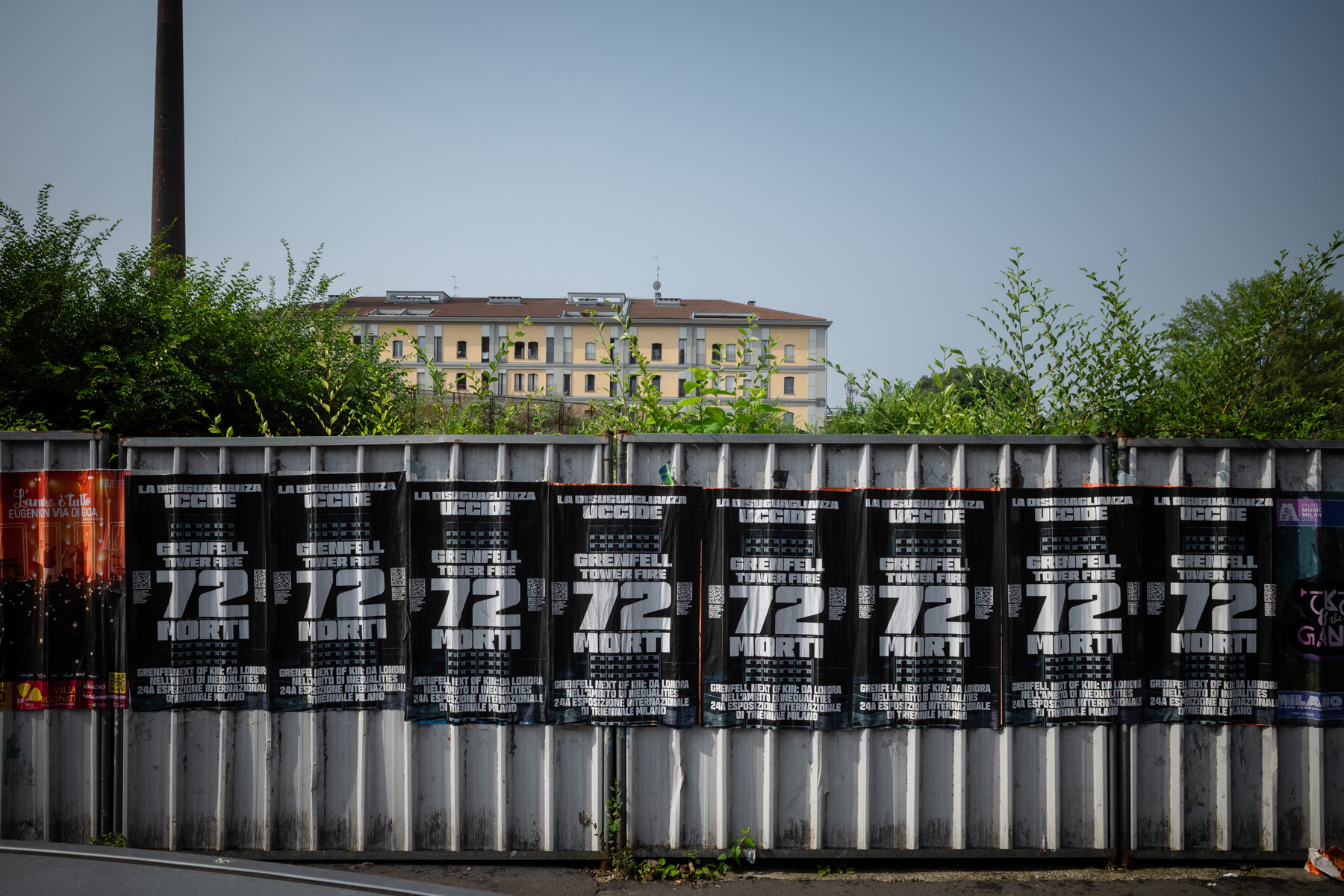
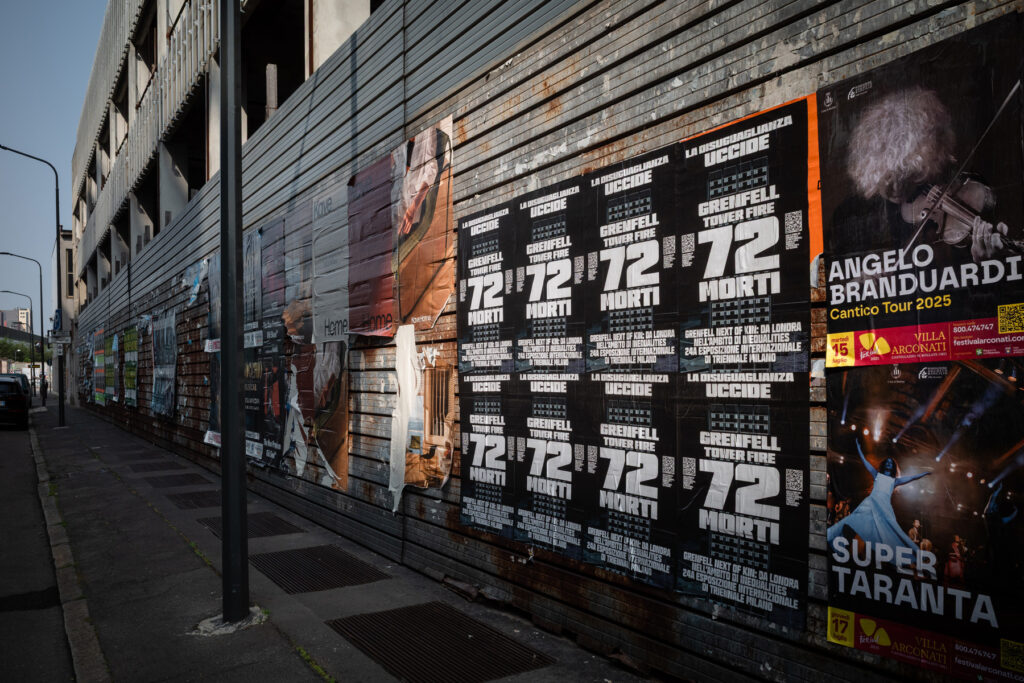
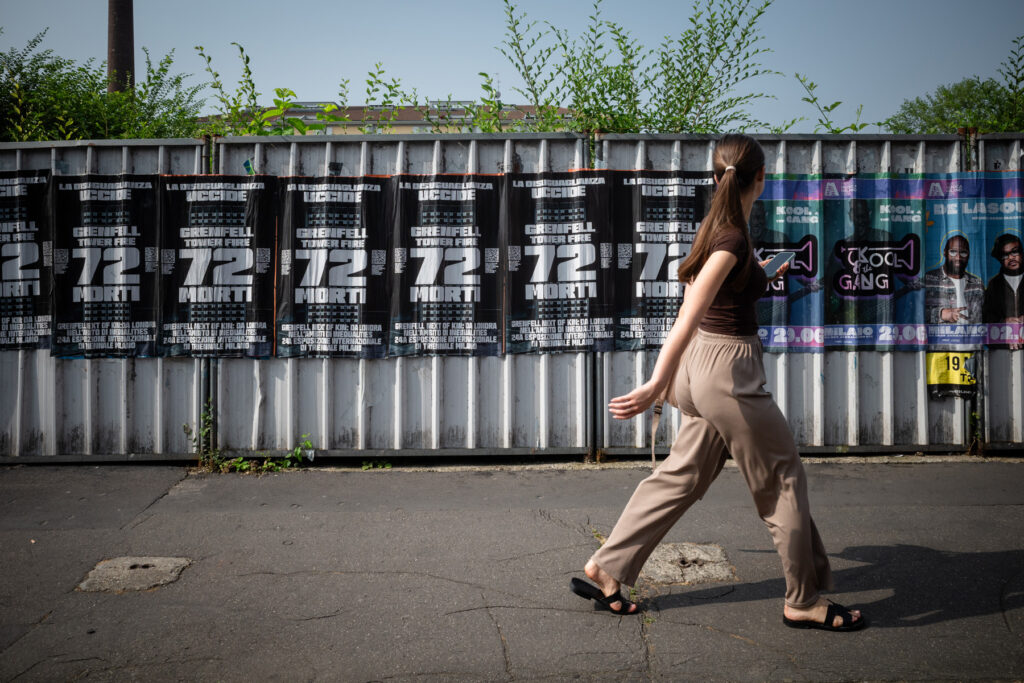
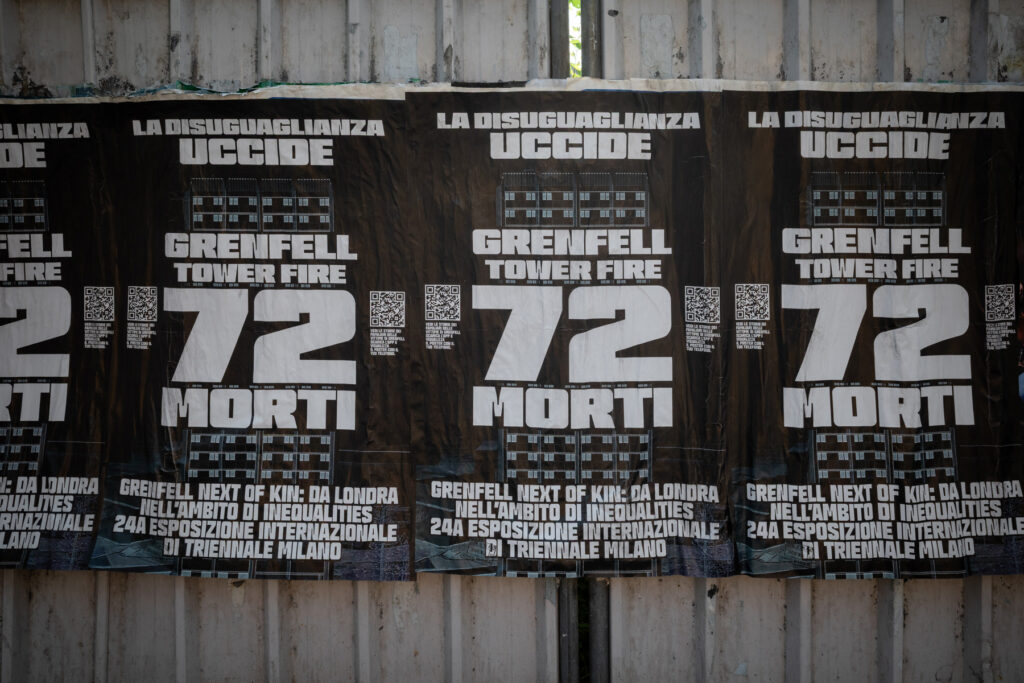
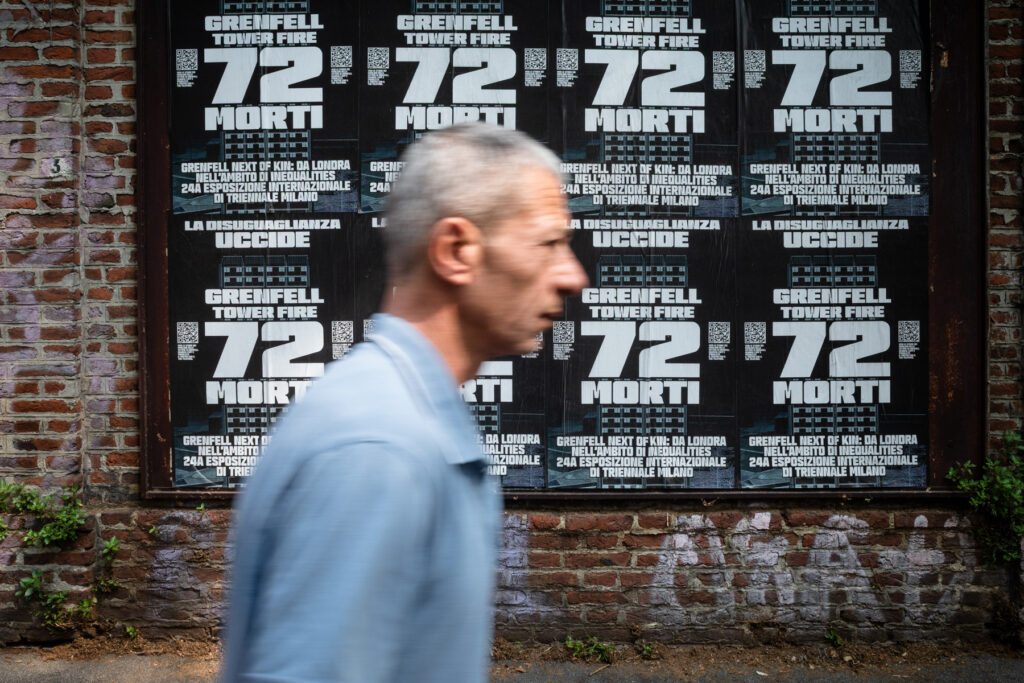
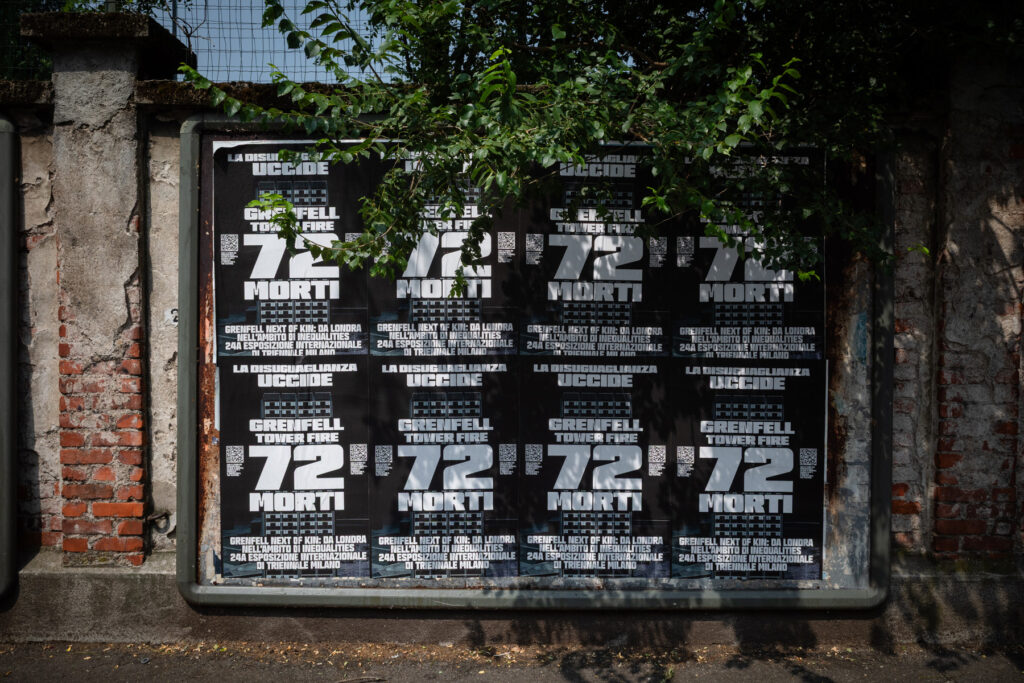
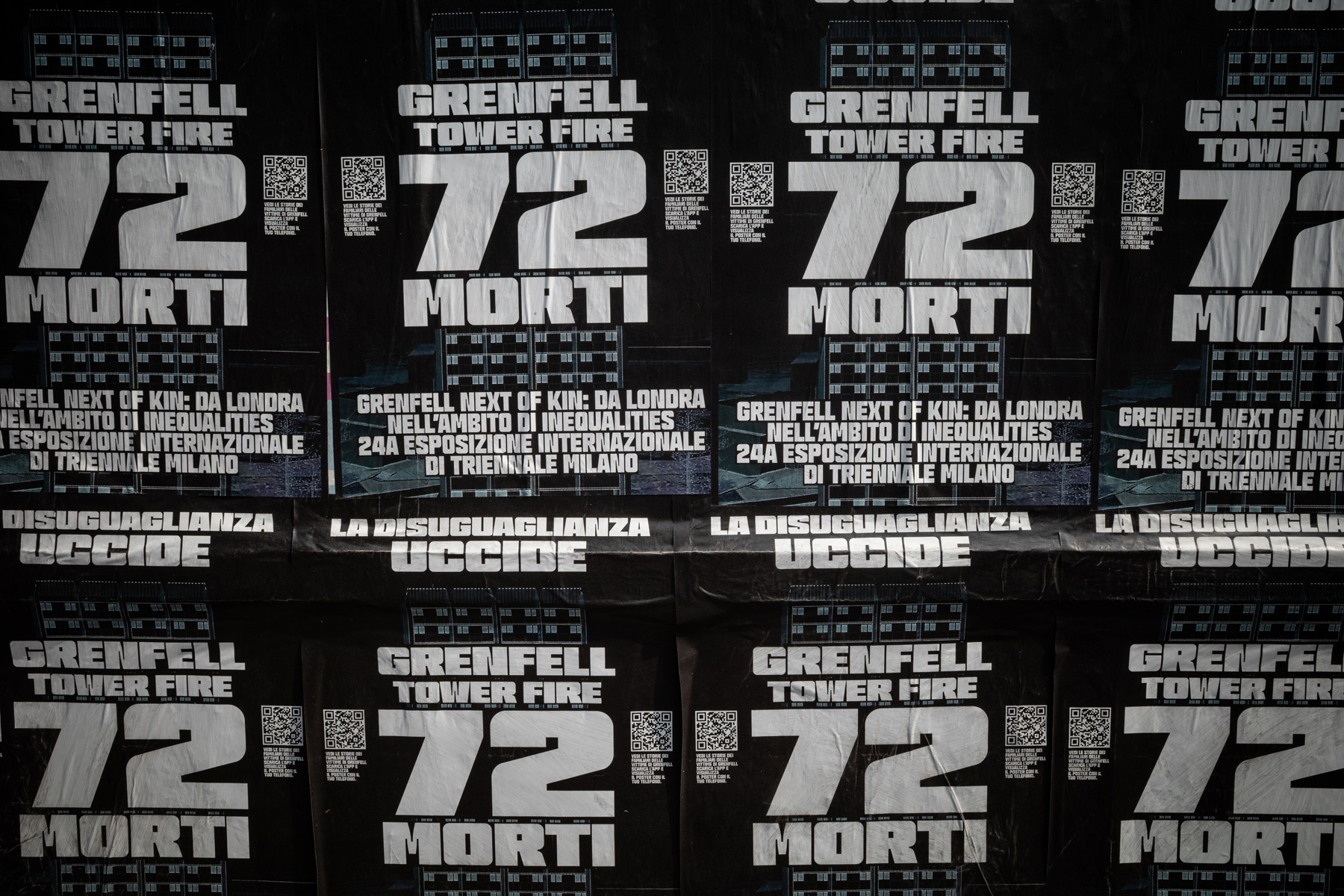
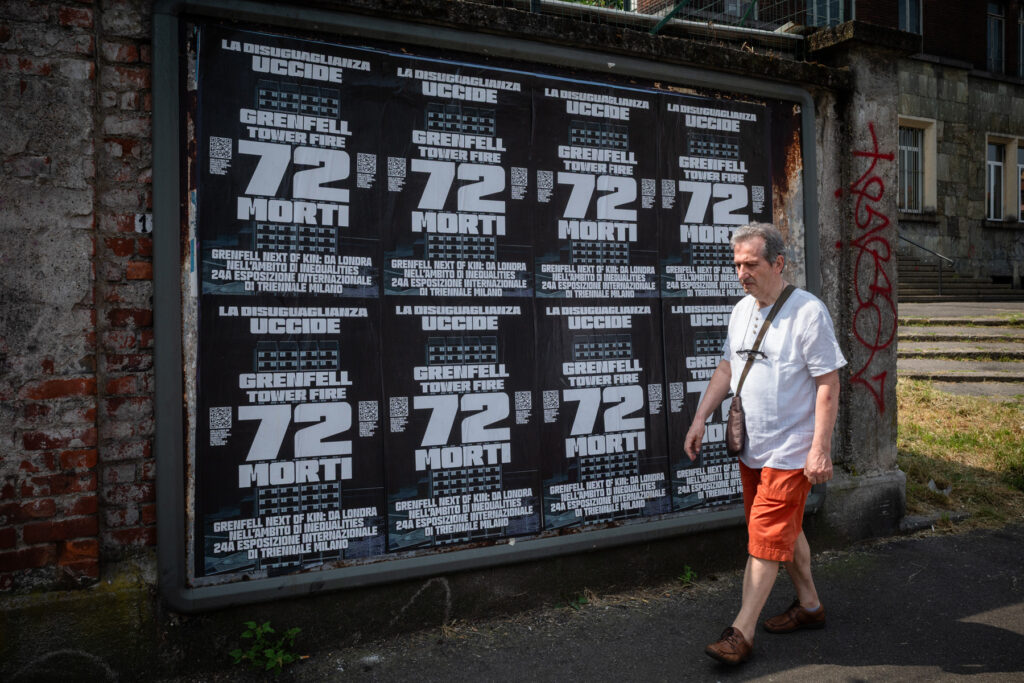
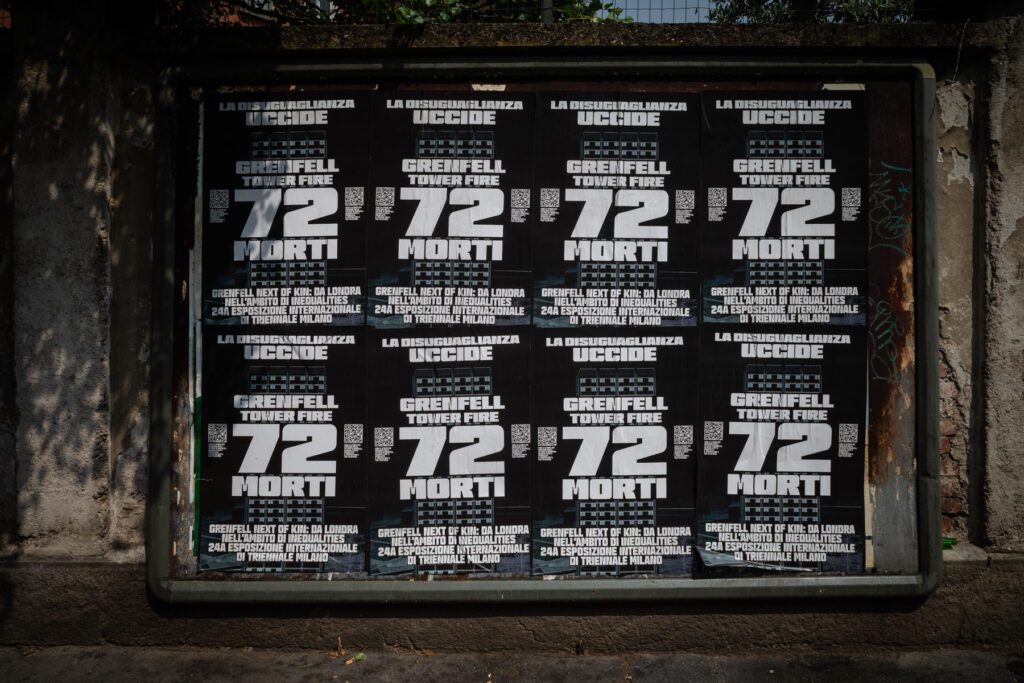

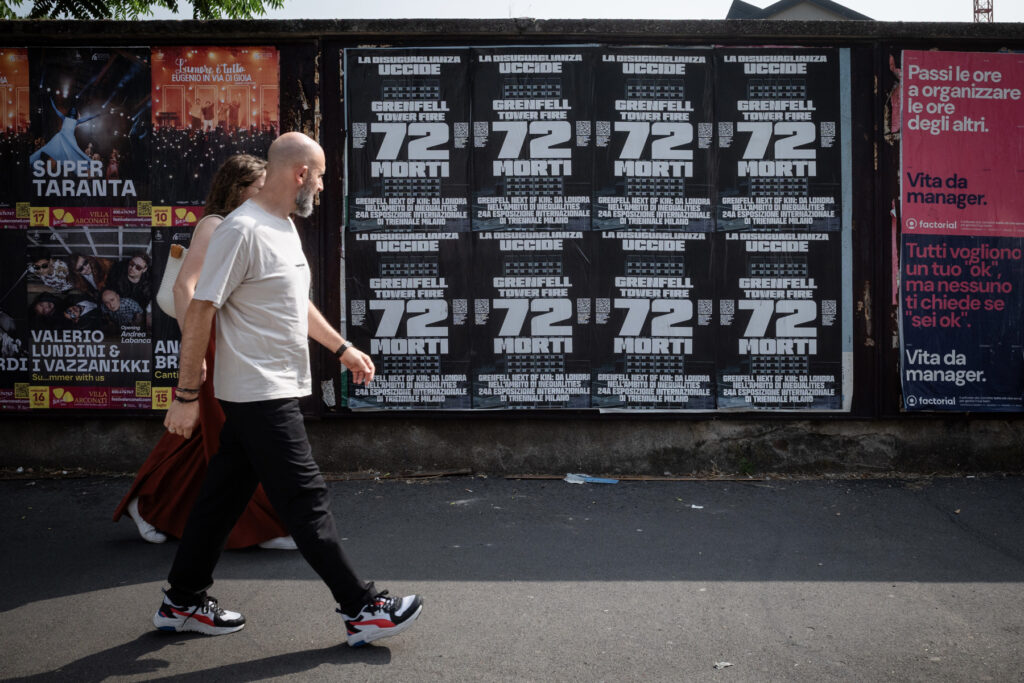
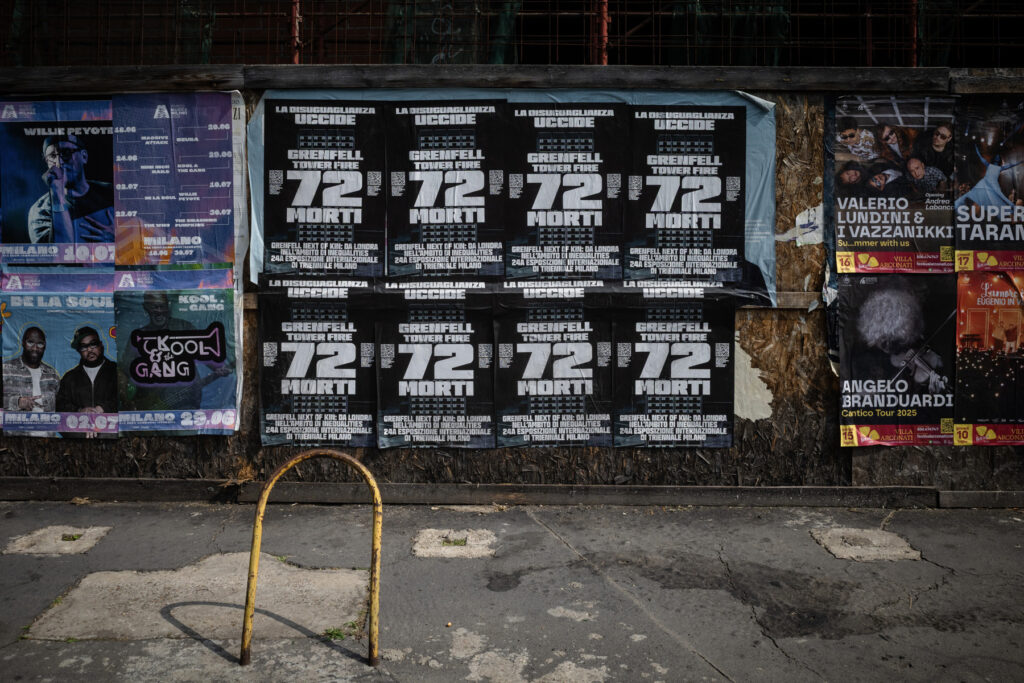
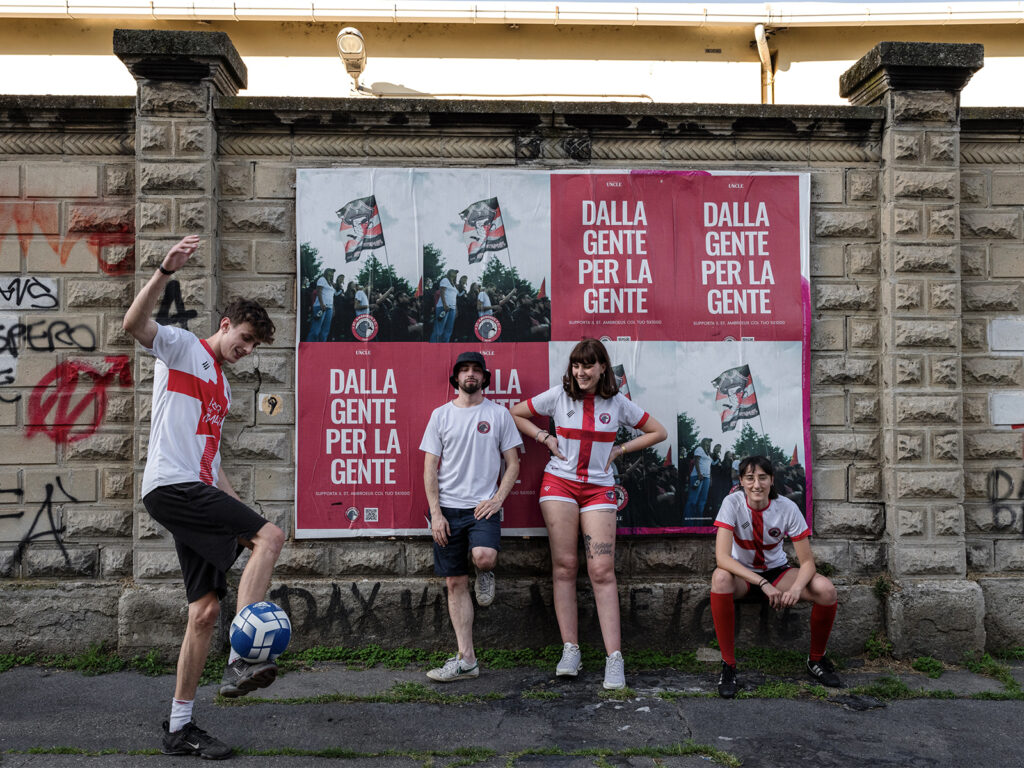
Football, with its endless array of clichés and well-worn phrases, often seems to speak in circles. Circles spun into a corridor of uncertainty until they are kicked into row Z. It’s played so often in front of parked buses and inside theatres of dreams, that sometimes we forget that this beautiful game – this game of two halves – is ‘more than just a game.’
But away from the top table of international football, in the shadows of grounds like San Siro, and on pitches where volunteers mark the lines, is where you will find that last idiom to still ring true.
Enter St Ambroeus FC, a beacon of unity, diversity, and community spirit in the heart of Milan. Established in 2018 through the merger of two football teams and two welcome centres for refugees and asylum seekers, The Black Panthers and The Corelli Boys, St Ambroeus FC transcends the boundaries of sport to become something truly remarkable—a symbol of hope in a world too often divided by fear and prejudice, using a sport that is too often removed from its grassroots by governance and wealth.
“In football, everyone is on the same level, wearing the same shirt and fighting for the same goal,” says Phillip, a player and board member whose journey with St Ambroeus FC mirrors the club’s recent progress. What began as a simple desire to find a new club to play football for has blossomed into a commitment to a cause greater than himself—a cause that celebrates the human experience, regardless of race, religion, or background. In doing so, the club not only celebrates goals and last-ditch tackles. It celebrates what it means to be Milanese.
St Ambroeus FC takes its name from Sant’Ambrogio (Saint Ambrose). Born in Trier around 340 AD, Ambrose rose to prominence as the bishop of Milan in the late 4th century, playing a crucial role in mediating political disputes and defending the oppressed, earning a reputation as the “Father of the Church” in Milan. Some 1600 years on, Ambrose was seen as a patron saint fitting of this football club.
The club has multiple teams across various levels of the Italian league system and has players from sub-Saharan Africa, Latin America, Asia, Eastern Europe and more. They all come together on the pitches of Milan and surrounding areas where they take on other amateur sides. But St Ambroeus FC’s impact extends far beyond the pitch. Through a myriad of social initiatives, the club seeks to uplift and empower the marginalised, from providing warm clothing and food to the homeless during the winter months to supporting refugees fleeing conflict.
Also off the pitch – more specifically huddled on the touchline – are the club’s organised, ‘Ultras’ supporters group, The Pirates. Italian football culture is known for its super passionate supporters, many of which are politically active. But at the level St Ambroeus operate at, they outnumber their opposition supporters by a hundred to one – sometimes literally. As Philip told us, theirs is the only club of its kind that has supporters and the connection between players, fans, president, vice president and secretary, is seamless like a free flowing move with a third man run. This is why, as part of UNCLE’s collaboration with the club, they decided that The Piratesand the players would be front and centre of the campaign that is now plastered across Milan.
As Italy’s most diverse city, Milan provides fertile ground for St Ambroeus FC’s mission, creating a mix of cultures and experiences that enrich the fabric of the club and its hometown. Their story serves as a testament to the enduring power of community, proving that in football, as in life, clichés often conceal a deeper truth — a truth that transcends the boundaries of language and culture to unite people in a common goal.
INTRODUCE YOURSELF IN YOUR OWN WORDS…
My name is Phillip, I’m from Milan. I’m 27, Jewish from my father’s side of the family who was the first person in my family to move to Milan. I had played football all my life, up until I was 25 when I was about to give up, but a friend of mine suggested that I join St Ambroeus FC.
I came to a session with two of my friends who I had played football with previously and we decided to join. After about six months at the club – and after getting an injury which meant I couldn’t play – I joined the board of directors as one of the volunteers who help to run the organisation and to help the machine work – because the more people that are involved, the better it works. Very quickly, it became a part of my life.
CAN YOU TELL US A LITTLE BIT MORE ABOUT ST AMBROEUS FC AND WHAT IT MAKES IT DIFFERENT FROM YOUR AVERAGE LOWER-LEAGUE FOOTBALL CLUB?
The club is the fruit of the labour of two organisations that date back to before St Ambroeus FC was born in 2018. There were two welcome centres for refugees and asylum seekers in Milan that had lots of people who wanted to play football. They each had a team, The Black Panthers and The Corelli Boys, and these teams were merged under St Ambroeus with the aim of showing that, no matter what your background or how long you have been in Milan, you are Milanese, together as one club. St Ambroeus helps many people to feel part of something and to belong to a city.
Having these roots in anti-fascism, anti-racism and anti-sexism, has defined the club and the decisions it makes and also makes things feel very natural. Even in those early days, asylum seekers needed somewhere to play football, so it was provided for them. And everything has this organic feel.
This is the reason why we have many supporters and I think that we are the only club in our league that has groups of fans at matches – even though we are in the lowest division of Italian football.
THE CLUB NOW HAS MULTIPLE TEAMS, OPERATING IN THE ITALIAN LEAGUE SYSTEM, AT YOUTH LEVEL AND AT LEVELS IN BETWEEN. WHEREABOUTS IN THE WORLD ARE YOUR PLAYERS COMING FROM?
At the beginning, everyone in the team was from sub-Saharan countries. Then we opened it up to all countries and created another two teams; one women’s team and one more amateur team for men. So now we have players at the club from all over the world. There are many African players, some from Latin America, Asia – a couple of lads from Leeds.
Our first team was divided into one-third Italian and European players and two-thirds from the rest of the world, and we won the championship in our first season with this structure and got promoted.
However, the league rules for our first team make it complicated because you must have a certain amount of Italian nationals and a certain amount of young players registered for each game or you have to forfeit the result. So we had to take more Italian players for this team and change it to roughly two-thirds Italian players. But in other leagues – our second team and our women’s teams – fortunately these rules do not apply, so we can play whoever we want.
Of our 30-player first-team squad, we have 15 nationalities and many more than that when you take into consideration our other teams and our youth team, which is made of young people that are also new to Milan.
WHAT IS IT ABOUT FOOTBALL THAT ALLOWS IT TO BE THE VEHICLE FOR CHANGE IN A PROJECT LIKE THIS?
When on the football pitch, all the issues that matter outside of the pitch, don’t matter anymore. On the pitch, everyone is on the same level, wearing the same shirt and fighting for the same goal. It’s also the most followed sport because it’s the one that is about the team, rather than the individual.
The feeling and emotion that football gives you, is down to the fact that you are part of a team. You share your energy and your dream with other people. It gives you something more in your soul than other sports.
OUTSIDE OF THE SPORT, THE CLUB IS VERY ACTIVE IN A NUMBER OF OTHER PROJECTS. COULD YOU TELL US ABOUT SOME OF THE WORK YOU DO AWAY FROM THE PITCH?
We have many projects, some of which we do every year such as supporting homeless people with warm clothes and food during the winter. This is something that we do every Christmas time, for example. Then there are other ongoing projects. We work with a restaurant in the city that hires people from underprivileged backgrounds and with them, we collaborated to bring food to the border of Ukraine not long after war broke out. We hired a bus and delivered supplies, as well as bringing around 50 people with us back to Italy as refugees.
Since last September, we have been providing a service which helps the employability of people arriving in Italy, such as helping them to get a driving licence and or learning the language. And our ultras supporters’ group, The Pirates, have recently done some work helping victims of an earthquake in Morocco, using football to help rebuild communities over there – they have visited three times already and are hosting a photography exhibition event soon to showcase this work and raise awareness of this cause.
YOU MENTIONED ALREADY THAT A CLUB OF THIS STATURE HAVING A CROWD FOR IT’S GAMES IS UNHEARD OF, SO WHAT IS IT LIKE PLAYING IN FRONT OF THESE DEDICATED SUPPORTERS OF ST AMBROEUS?
It’s incredible. Some other teams have one or two supporters of course, but nothing like this. It is what feeds my energy when I play, it gives me strength in my muscles and gives me the rhythm of the match, even when our playmaker doesn’t.
I now know them personally, they are my friends or more so, they are like a family. To play for them really is an honour and it’s an honour to represent them whilst they are singing for ninety minutes. This is why people play football. The project goes beyond the game and it’s what keeps me playing.
ARE MANY OF THE SUPPORTERS WHO GATHER AT ST AMBROEUS SEEKING SOMETHING THAT THE SPORT AT THE HIGHER LEVELS – SUCH AS AC MILAN AND INTERNAZIONALE MATCHES AT SAN SIRO – IS LACKING?
We wanted to be a bit tricky and go against modern football’s money-orientated ways. So the club has been a punch against racism and against modern football, too.
Many of us support either Milan or Inter but come together for St Ambroeus, but amongst the supporters, there are many who outside of the club, do not have much interest in football at all. This is something we are proud of. Of the core supporters group which is about 40 people, many of them are women and girls also, which we think is important as it helps to make this sport accessible to more people which is not always the case at higher levels.
WHAT INFLUENCE ON THE CLUB DO THE SUPPORTERS HAVE?
To help with the running of the club and its growth to do more projects, there has been a restructure where we have had votes for a president and vice-president and other roles. I think that now we must be the only club in the world where the vice president is also head of the ultras. This guy thinks about St Ambreous before going to bed. He doesn’t stop.
We want the structure to be as horizontal as possible and also to help share the burden of the work. The more you can spread the responsibility and still keep it efficient, the better that we and the club will live.
WHY DOES MILAN WORK SO WELL FOR A PROJECT LIKE THIS?
Man… Milano is the most ethnically diverse city in the country. Real Milanese that speak the Milanese dialect, are almost going extinct. Everywhere you go you breathe globalisation, so it is probably easier to run this here than in other areas of Italy. There are also a lot of resources and services here that help us out and that we can collaborate with.
WHAT IS YOUR FAVOURITE THING ABOUT MILAN?
Anyone you ask this question to will say the same thing. You love it, but you hate it.
As I said before, Milan is one of the easier cities for people to integrate into, but it is still not easy. Like all of Italy, Milan has issues with inclusion, in my opinion. I’m not a sociologist so I would hate to try and explain why and get it wrong, but projects like ours help the city towards having this good reputation.
HOW CAN PEOPLE SUPPORT WHAT THE FOOTBALL CLUB DOING?
People can become socios – members of the club who have a say in how it is run and play an active role in supporting the club. Our socios include players, board members and fans, all of whom can attend our meetings. This membership costs 50 euros and helps us with the running costs of all our projects.
We also have merchandise that we ship all over the world and people make donations via our website. In Italy, we have a system where people donate 5% of their annual salary or revenue to a cause – this is typically used to donate to the church, but people can now choose the football club as who they would like to donate to.
AND FINALLY, HOW HAS THIS SEASON BEEN GOING?
So last season we were relegated back down to the ninth tier of Italian football, but this season we have been playing well once again. At the time I’m speaking to you, we still have a chance of promotion. And I also have returned to fitness personally and recently scored my first-ever goal for the team, whilst also wearing the captain’s armband for the first time. We won 5-0 in that game, but in truth, it should have been 10-0.
UPDATE:
St Ambroeus FC finished the 2023/24 season with a promotion, doing so with a team of 30 players representing 15 different nationalities… all of which are Milanese.

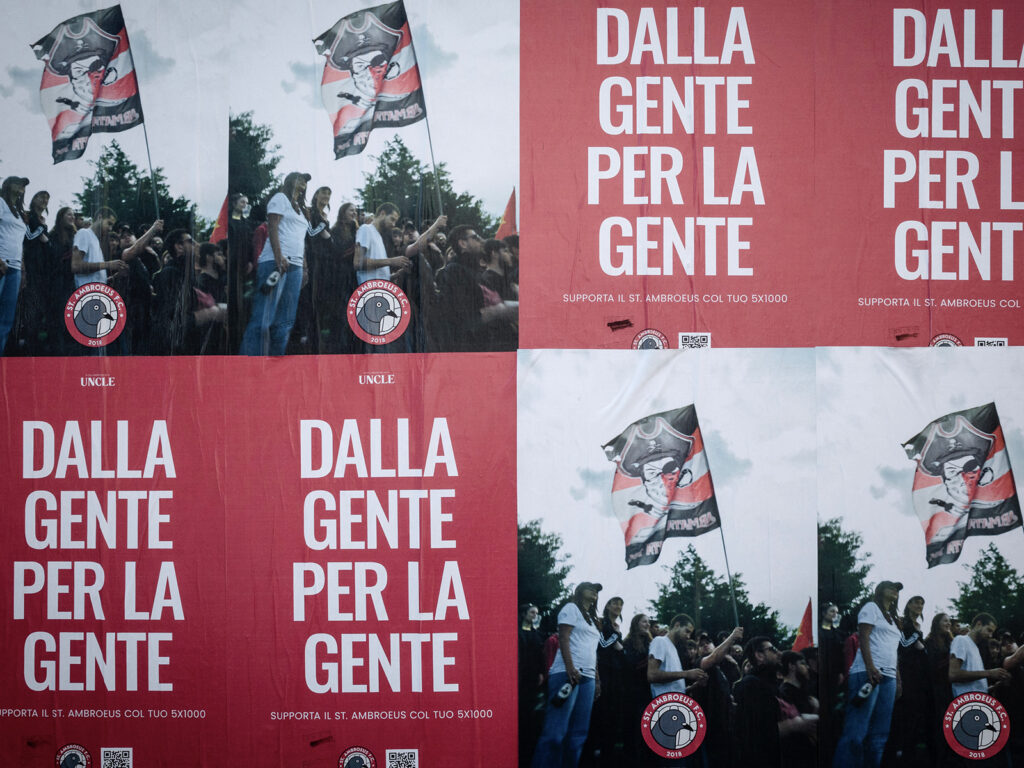
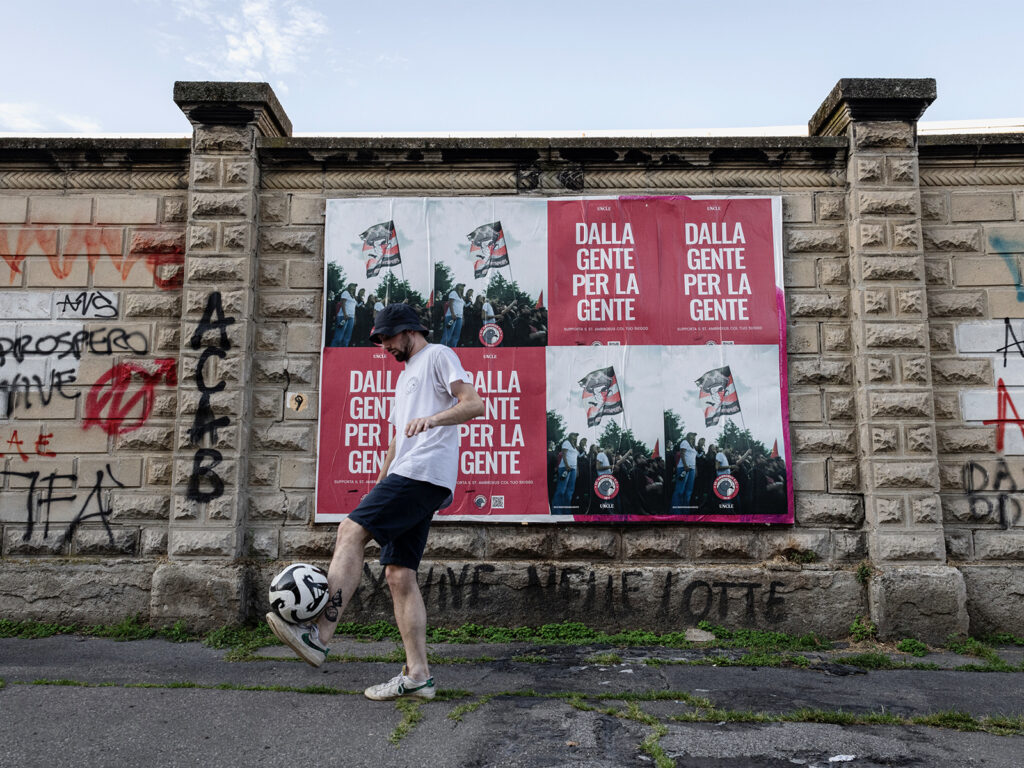
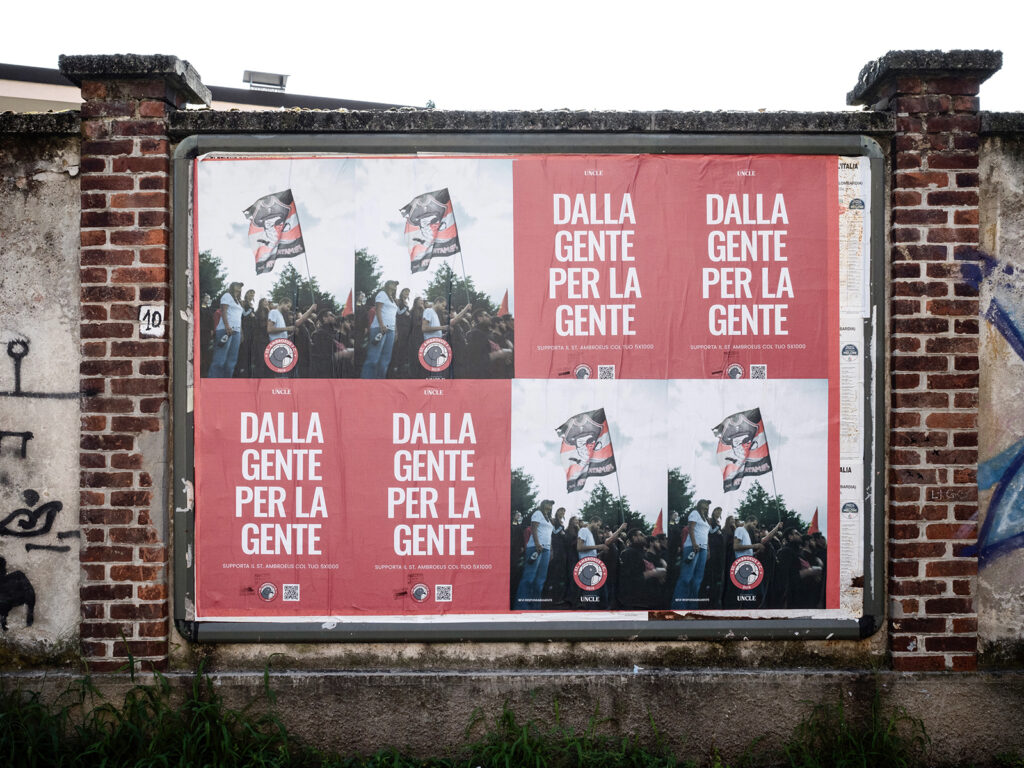
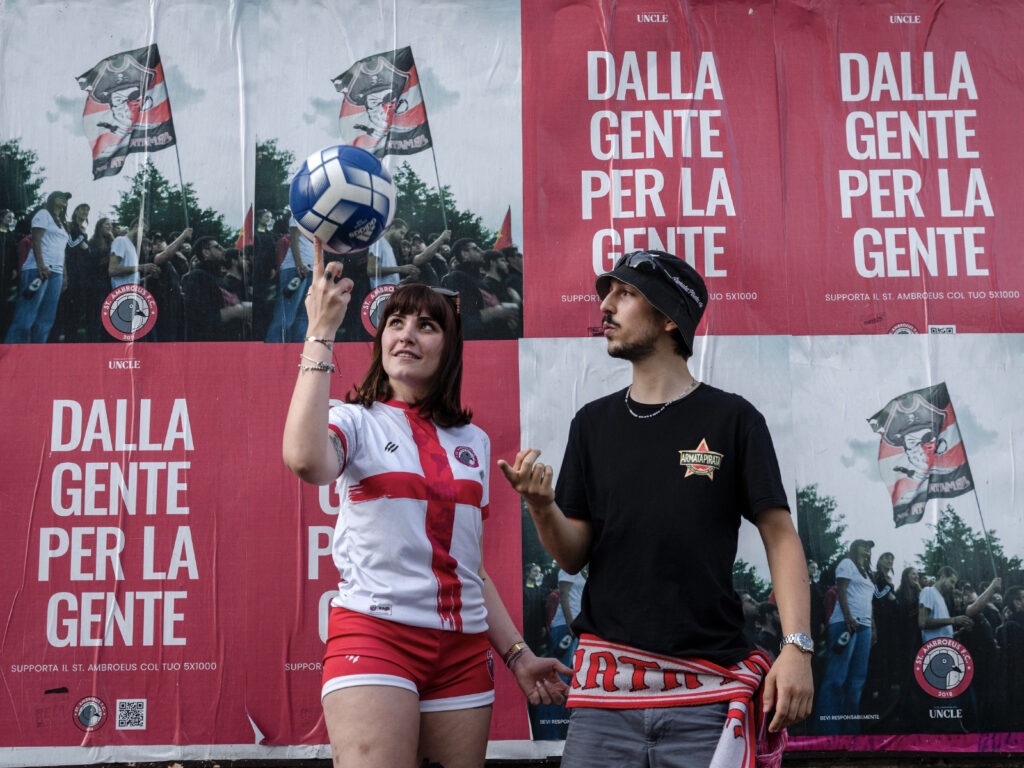


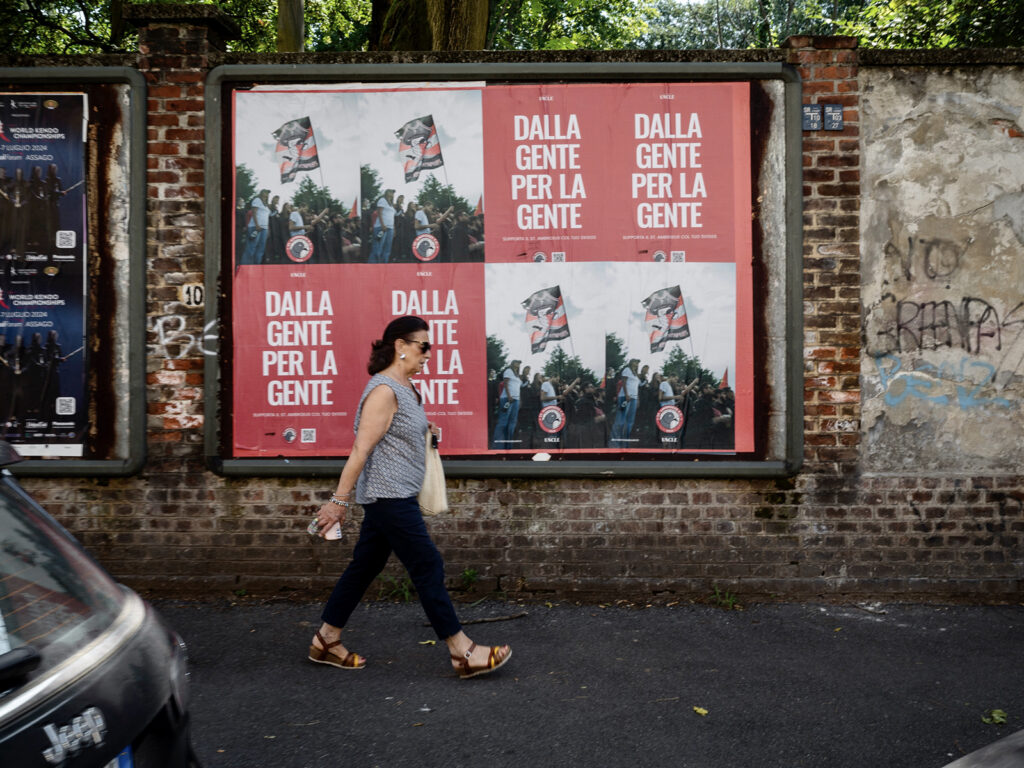
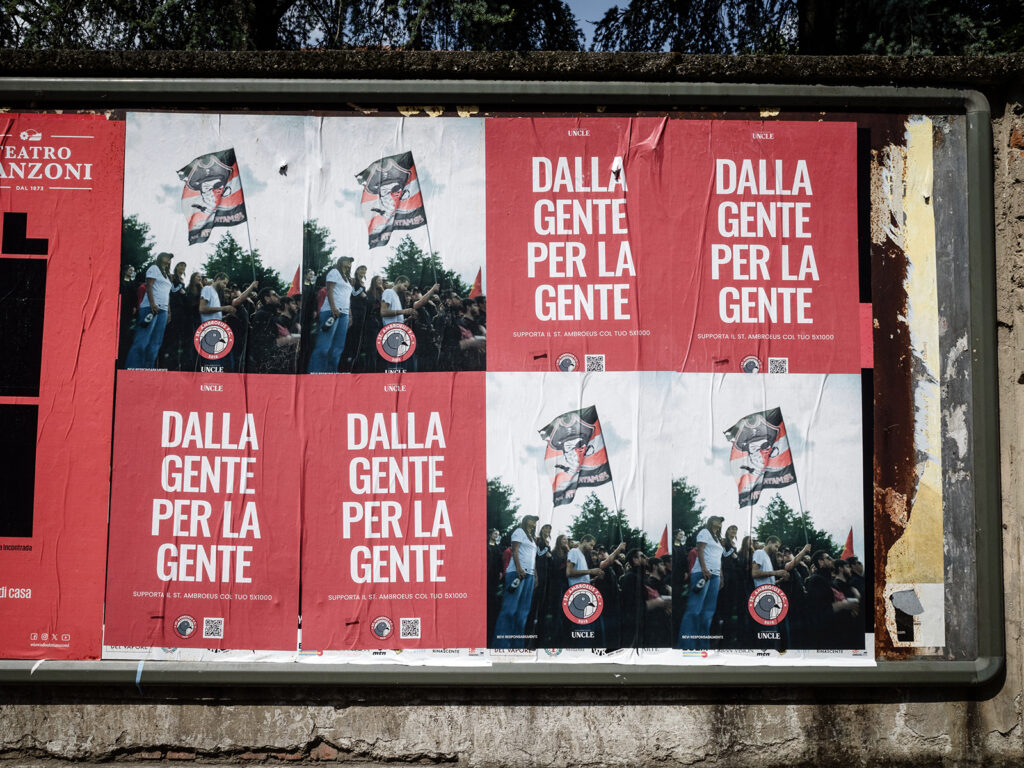
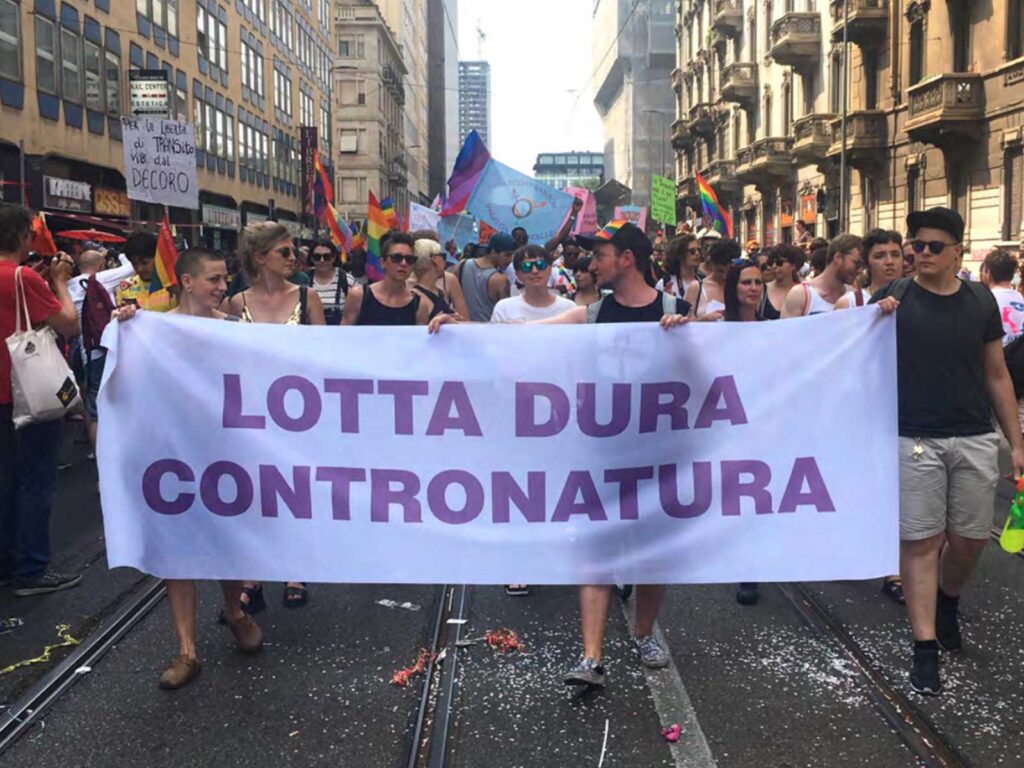
Congregations, l’ultimo progetto di UNCLE, ha visto lo svolgersi a Milano l’evento pop-up Lingua Lunga. A fianco alle curatrici, Brenna Horrox e Ludovica Bulciolu, la piattaforma artistica queer TOMBOYS DON’T CRY ha aiutato a facilitare l’evento durante il quale variɜ performers LGBTQ+, artistɜ e creativɜ si sono riunitɜ in una giornata di comunità. Leggi il riassunto completo della giornata qui.
TOMBOYS DON’T CRY e’ stato fondato dall’artista Dafne Boggeri, dal DJ S/HE Mark Rebel e dalla fotografa Alien. Dal 2011, le fondatrici hanno “incoraggiato avventure diurne e notturne per lesbiche sotto effetto di ecstasy, wonder queers, assolutɜ principiantɜ e gxrls interrupted. Speriamo di favorire una agenda post-identity di ricerca, audio-visiva e performativa sperimentale, legata alla comunità LGBTQAIXYZ”.
UNCLE ha parlato con le fondatrici della storia del collettivo, i suoi albori ed eventi passati che le hanno portate a dove sono oggi, fino alla presentazione di Congregations con Lingua Lunga a fine estate a Milano.
PERCHÉ AVETE DECISO DI INIZIARE IL COLLETTIVO?
Nacque successivamente all’esperienza con Pornflake Queer Crew, il primo collettivo queer italiano cominciato all’inizio degli anni duemila, di cui Dafne e Mark facevano parte, e venne creato dal desiderio di una maggior rappresentazione all’intersezione tra arte, musica ed attivismo.
QUALI SONO ALCUNI EVENTI PASSATI CHE AVETE ORGANIZZATO?
Abbiamo lavorato a tantissimi progetti diversi negli anni, dall’organizzazione di feste, all’allestimento di un salone nail bar brutalista (in un bar, in istituzioni di arte contemporanea, in spazi gestiti da artisti e festival), a cartelloni pubblicitari, letture, esposizioni e pop-up per il nostro abbigliamento hackerato.
In anni recenti, abbiamo curato eventi che rappresentano i nostril valori fondamentali di sperimentazione e il bisogno di occupare spazi.
Abbiamo sovvertito alcune esposizioni invitando altrɜ artistɜ come modo per bypassare il sistema, le sue gerarchie ed approccio elitario. Per questo abbiamo curato la mostra di gruppo “BODY LANGUAGE” al FUORI Art Quadriennale 2022, al Palazzo delle Esposizioni a Roma. Un’iniziativa che sfidava le norme dell’istituzione. A seguire, c’e’ stata “SWITCH THE WITCH” a La Rada, Locarno, Svizzera, nel 2022 che ha esplorato temi quali alterita’, trasformazione, e realismo magico dal punto di vista transfemminista, enfatizzando sorellanza, differenze, e creatività come modo per guarire e allo stesso tempo riconoscere il trauma storico che continua ad influenzare le nostre vite.
Nel 2022 abbiamo iniziato a commemorare un momento significativo della lotta per i diritti umani in Italia. Il 5 aprile 1972, c’e’ stata la prima pubblica dimostrazione di dissenso da parte della comunità LGBTQ+, in risposta al Congresso Internazionale di Sessuologia CIS, che definiva l’omosessualità tra i “comportamenti umani sessualmente deviati”.
TUTTO QUELLO CHE NON C’É ANCORA, 2022, si e’ svolto a “La Fossa”, uno storico punto di passaggio nel centro di Milano. Nel mezzo di cambiamenti urbani e spinte verso la gentrificazione, questo luogo resta un luogo di transito e di incontri sessuali. Il raduno comprendeva una mostra diurna che e’ culminata in una XS XS rave queer di fronte a La Triennale di Milano, riprendendo lo spirito del 1972.
TUTTO QUELLO CHE NON C’É ANCORA, 2023, e’ stato organizzato al Parco di Porta Venezia, Milano, promuovendo delle letture informali queer, nelle quali le persone potevano spontaneamente riunirsi per leggere i loro pezzi preferiti. Questa e’ stata l’ode a una comunità e il modo di creare uno spazio per amplificare voci alternative. Lo spazio, all’interno di un gazebo ottagonale, e’ sempre accessibile fino all’orario di chiusura del parco.
Crediamo che questi eventi abbiamo lasciato un impatto significativo sulle persone che vi hanno partecipato, ispirando nuovi modi per coesistere.
PENSATE CHE L’ARTE E LA SCENA CULTURALE DI MILANO, RIFLETTANO LA CITTA’ E I SUOI ABITANTI?
C’e’ una preoccupante mancanza di pensiero critico ed analisi all’interno dello spazio culturale Milanese, o meglio un’intenzionale e discutibile direzione verso una saturazione eccessiva di contenuti.
La scena culturale ed artistica spesso opera in superficie, dove la superficialità e la continua ricerca di programmi sovraffollati portano a un eccesso di eventi che spesso mancano di una genuina connessione al territorio e alla comunità che dovrebbero servire. Manca supporto finanziario e network con altre entità nazionali ed internazionali, rendendo eventi ed iniziative dei fenomeni isolati che hanno lo scopo di intrattenere più che di supportare.
Questo comportamento e’ esacerbato ed una conseguenza del cosiddetto scenario politico di centro sinistra, spesso non esistente o pieno di controversie, che rende difficile vedere chiaramente chi sia chi e chi fa cosa.
Inoltre, la scarsità di spazi accessibili per prosperare e l’insufficiente supporto, possono forzare individui e gruppi in una corsa per ogni opportunità, a volte facendo compromessi che minano l’integrità’ del loro lavoro.
COME PUO’ QUESTA SCENA CAMBIARE PER IL MEGLIO?
Un futuro più luminoso per Milano puo’ avvenire solo con uno spirito collettivo di cambiamento.
Bisogna capire che gli spazi non sono semplici edifici, che si deve diversificare e democratizzare questi spazi. Sfidare il dominio delle istituzioni consolidate. Trasparenza e responsabilità sono vitali per far si che gli spazi culturali siano gestiti con gli interessi della comunità in mente.
Lɜ artistɜ devono affermare il loro ruolo di contributori indispensabili al tessuto della società contemporanea, e non come attori da sfruttare quando serve. Il loro lavoro va ben al di la’ dell’espressione estetica; esso modella l’identità e lo spirito di una città. Uno sforzo andrebbe fatto per ottenere riconoscimento, non solo nelle parole, ma in azioni tangibili e norme, al di la’ della retorica.
Questa sinergia possiede il potenziale per poter portare un futuro più luminoso.
DALLA VOSTRA FORMAZIONE, COME E’ CAMBIATA LA SCENA CREATIVA A MILANO?
Dalla nostra formazione, abbiamo assistito ad una trasformazione della scena creativa caratterizzata sia da sviluppi positivi che da sfide.
Un cambiamento significativo e’ stato il diminuire di spazi indipendenti per l’espressione culturale. Milano, come molte altre città, ha subito pressioni di gentrificazione e commercializzazione, che hanno reso sempre più difficile per artistɜ indipendentɜ ed attorɜ culturali assicurarsi spazi abbordabili. Questo cambiamento ha limitato la diversità di voci ed espressioni che una volta prosperavano in questi spazi, potenzialmente avendo un impatto negativo sulla ricchezza culturale della città.
E’ molto difficile sopravvivere in questo contesto, ma abbiamo trovato crescita nella consapevolezza del termine “queer”, portando a maggior inclusione, anche all’interno della stessa comunità LGBTQAI+, che nei primi anni 2000 faticava ad accettare chiunque al di fuori dello spettro binario.
CHE COSA HA ISPIRATO L’IDEAZIONE DEGLI EVENTI?
E’ iniziato tutto con l’invito delle curatrici Ludovica Bulciolu e Brenna Horrox a lavorare all’idea di spazi pubblici, il loro significato e come tradurli ed includerli nelle pratiche artistiche.
Nel raccogliere idee per l’evento, abbiamo deciso di creare qualcosa di locale ed interagire con uno spazio con il quale ci eravamo interfacciate precedentemente (una delle co-fondatrici di TBD, Dafne Boggeri, ha collaborato con loro in passato). Pensavamo di poter condividere una reciproca ispirazione: lo spazio giardino autogestito di Isola Pepe Verde, che ha ospitato l’evento, e’ uno degli ultimi giardini pubblici del quartiere Isola, a Milano, e ha una lunga storia artistica, con artistɜ che hanno occupato lo spazio per la prima volta nel 2001, con il nome di Isola Art Centre, promuovendo pratiche artistiche. Quando presentammo l’idea dell’evento ne furono entusiastɜ: un ritorno agli inizi con artistɜ, creatorɜ e musicistɜ, a ripopolare il giardino nuovamente.
L’Isola Pepe Verde rappresenta uno sforzo comunitario di reclamare e trasformare lo spazio pubblico. E’ presa in cura dal lavoro di moltɜ volontariɜ ed e’ il perfetto esempio di un luogo che esiste ancora nonostante l’aggressiva pianificazione urbana che sta avvenendo tutto intorno.
QUAL E’ LO SCOPO DELL’EVENTO?
Abbiamo simbolicamente trasformato l’entrata di Isola Pepe Verde in una grande bocca, nella quale le persone erano invitate ad entrare e coinvolte in conversazioni, azioni e ascolto in un ritrovo intergenerazionale.
Lo scopo era quello di creare un momento di co-esistenza e creare nuove narrative comunitarie che potessero poi essere condivise e usate come esperienza cardine per molte altre simili situazioni. Abbiamo incoraggiato le persone ad esplorare i loro sensi, movimenti e desideri tramite l’interrogazione di comportamenti sociali normativi imposti dalla gentrificazione e privatizzazione di spazi pubblici.
PERCHE’ L’EVENTO E’ STATO CHIAMATO ‘LINGUA LUNGA’?
Volevamo lavorare a qualcosa di locale, sia a livello geografico che concettuale. TOMBOYS DON’T CRY e’ una piattaforma queer e trans-femminista che lavora con sperimentazioni e cerca di sfidare gli atteggiamenti normativi e i modi di pensare. La nostra scelta del nome e’ originata dall’appropriazione di un termine colloquiale italiano che letteralmente viene tradotto in “long tongue” ma il cui significato e’ più simile a “loose tongue” or “big mouth” in inglese. Questo nome e’ usato come figura retorica per descrivere qualcuno con un ‘brutto atteggiamento’, qualcuno che non sa tenere per se le informazioni. Nel contesto dell’evento ‘Lingua Lunga’ cerca di riappropriarsi dell’espressione riferita alla deformità di una parte del corpo (appunto la lingua lunga) associata a pregiudizi e invece sfidando le connotazioni negative associate al termine.
COME POSSIAMO ESSERE CONSAPEVOLI IN UNO SPAZIO COME QUESTO?
Il nostro obiettivo più grande e’ quello di creare uno spazio sicuro in cui tuttɜ possono essere coinvoltɜ e contribuire positivamente all’atmosfera. Nel corso degli anni siamo stati in grado di costruire una comunità che ci unisce e che e’ attenta e rispettosa deglɜ altrɜ, non solo esseri umani, ma anche piante e in generale dell’ecosistema che ci circonda. Forse l’empatia e’ la chiave di tutto.
IN CHE MODO L’EVENTO E’ CONNESSO ALLA CITTA’ DI MILANO?
Il lavoro di TOMBOYS DON’T CRY si focalizza sulla scoperta e sul rimettere sulla mappa luoghi che sono dimenticati o non visti, e ci impegniamo molto a lavorare sul territorio attivandolo in modi sorprendenti e al contempo rispettosi.
In una città’ dove gIi spazi commerciali e privati hanno preso il sopravvento, Lingua Lunga offre un assaggio di un luogo verde per lo più non conosciuto, in uno dei quartieri più centrali e gentrificati della città.
L’evento affronta il carattere introverso di Milano tramite la creazione di un momento tangibile ed accessibile per l’espressione artistica, favorendo un senso di appartenenza.

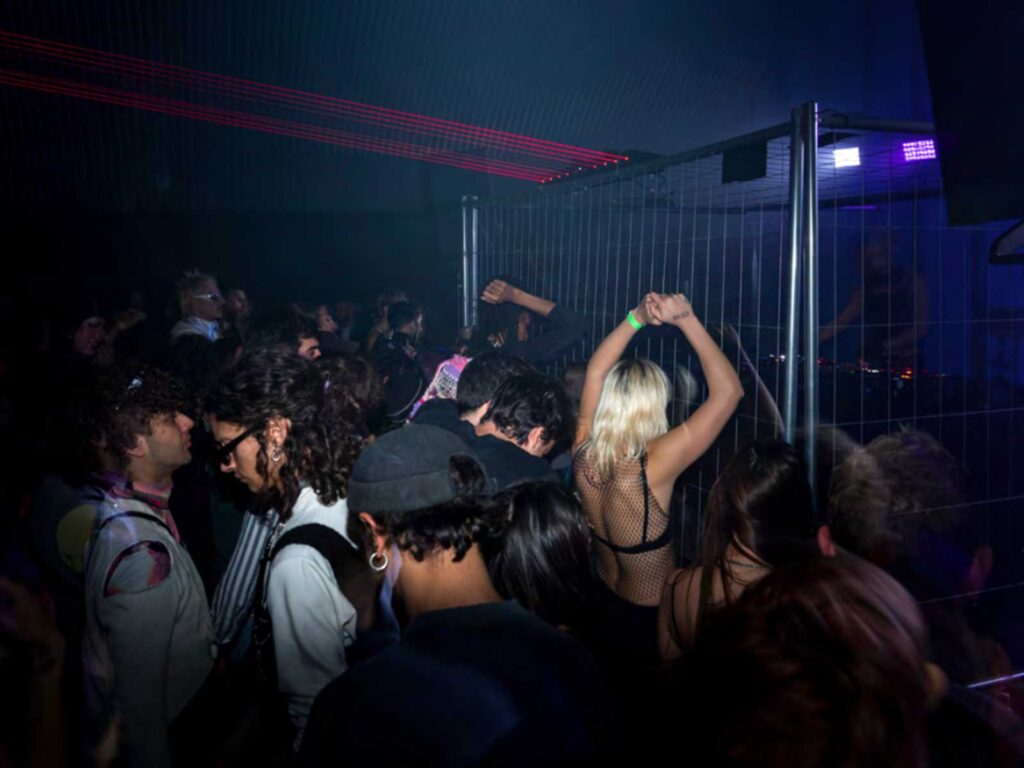
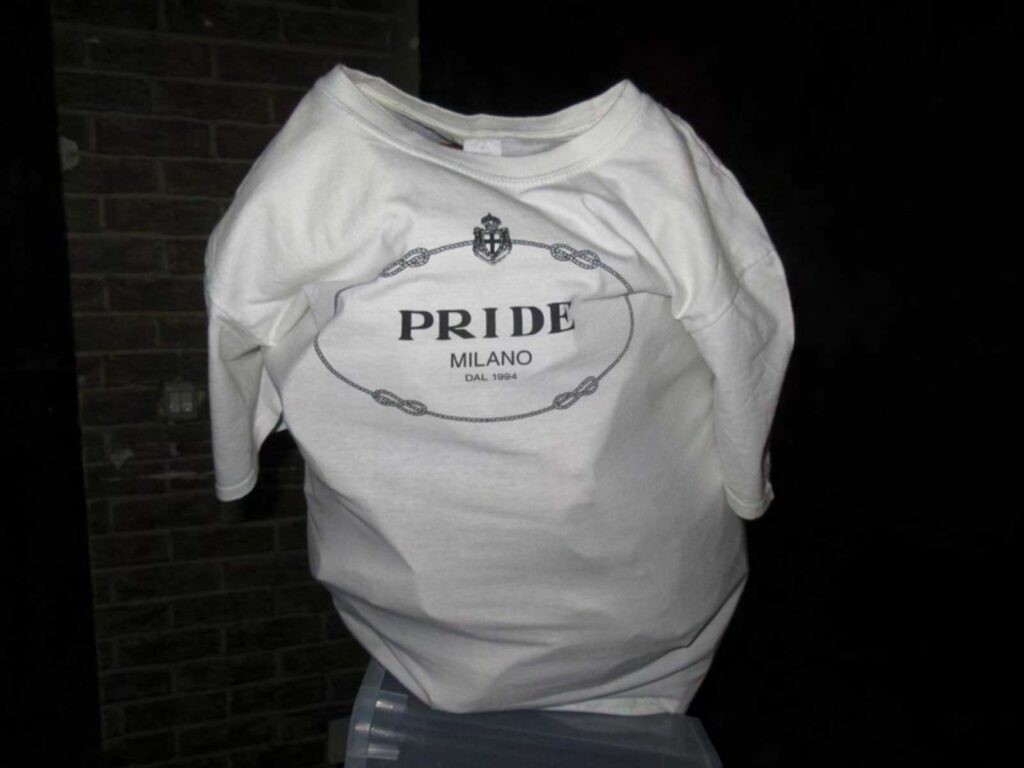
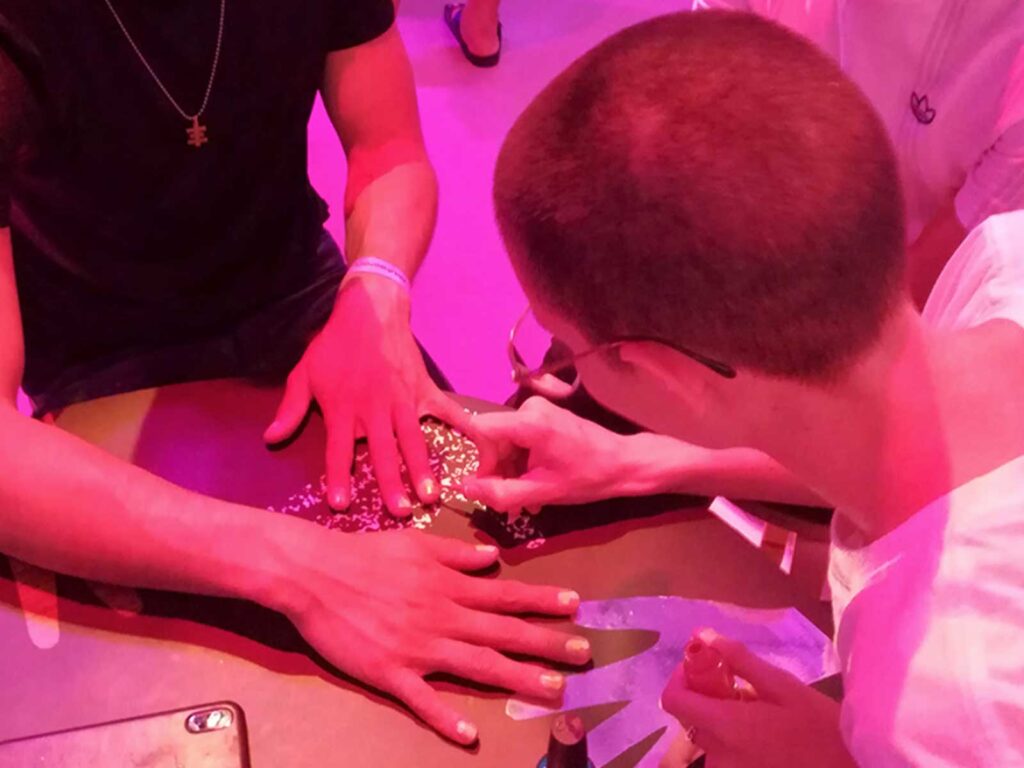
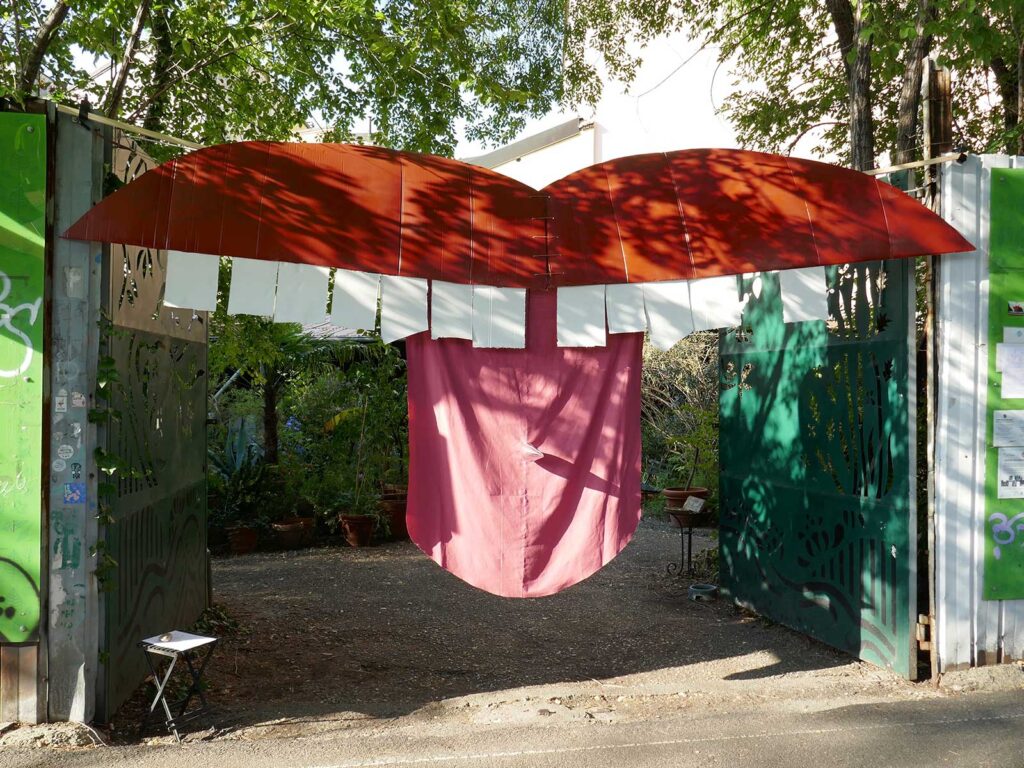
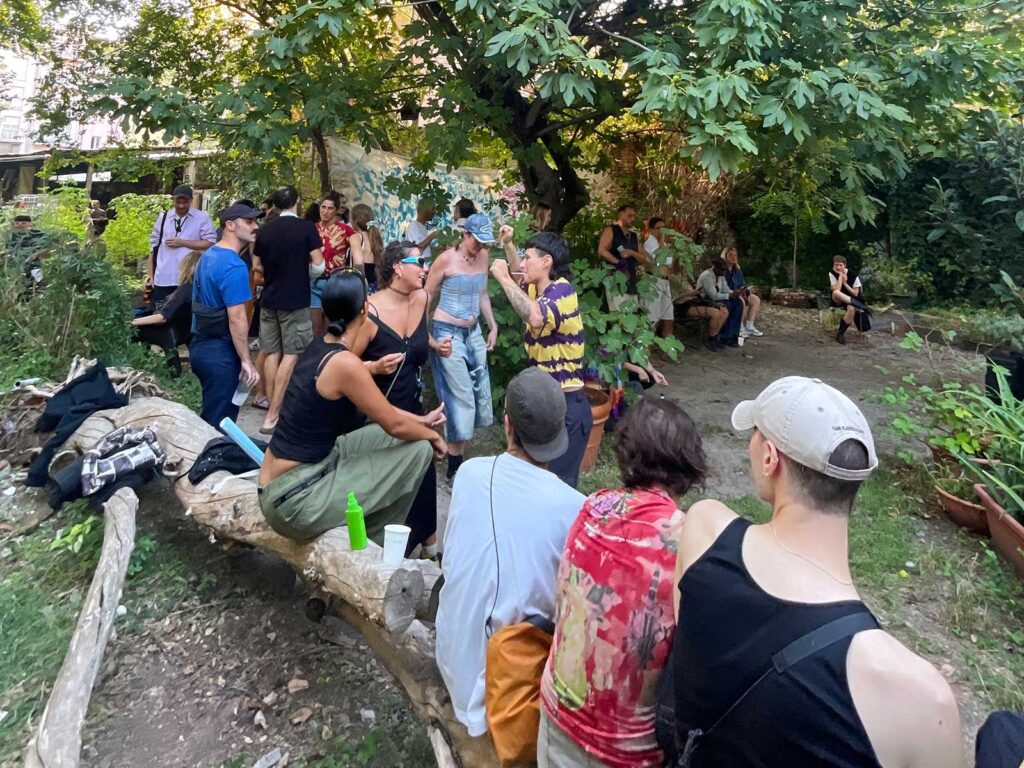
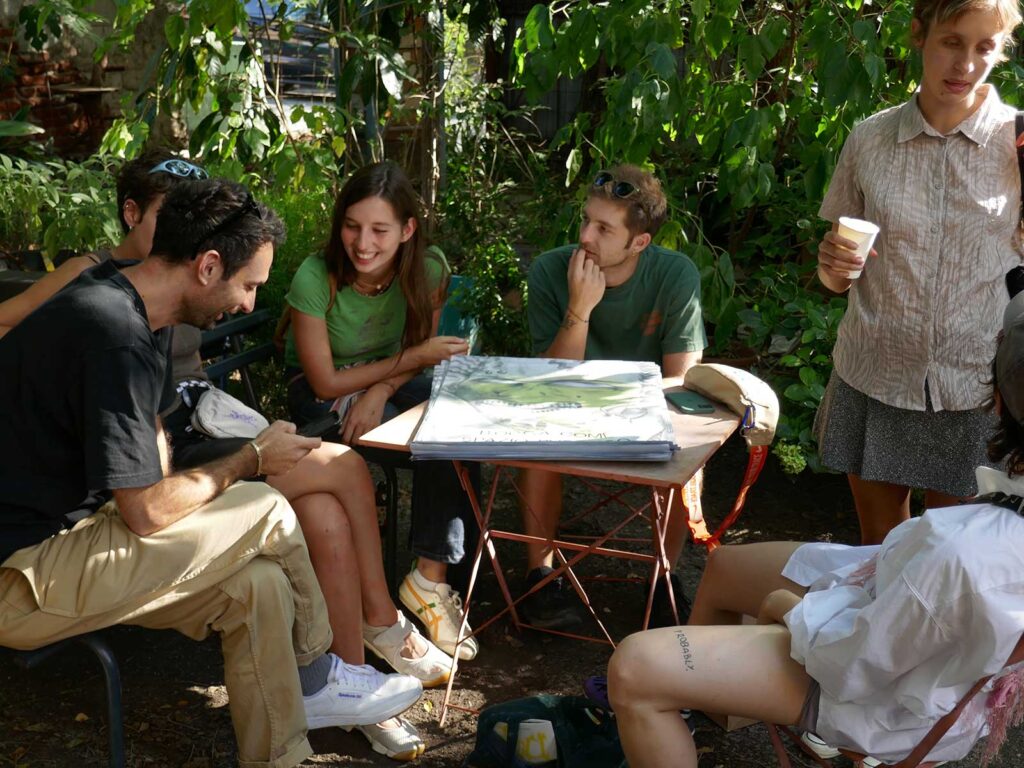
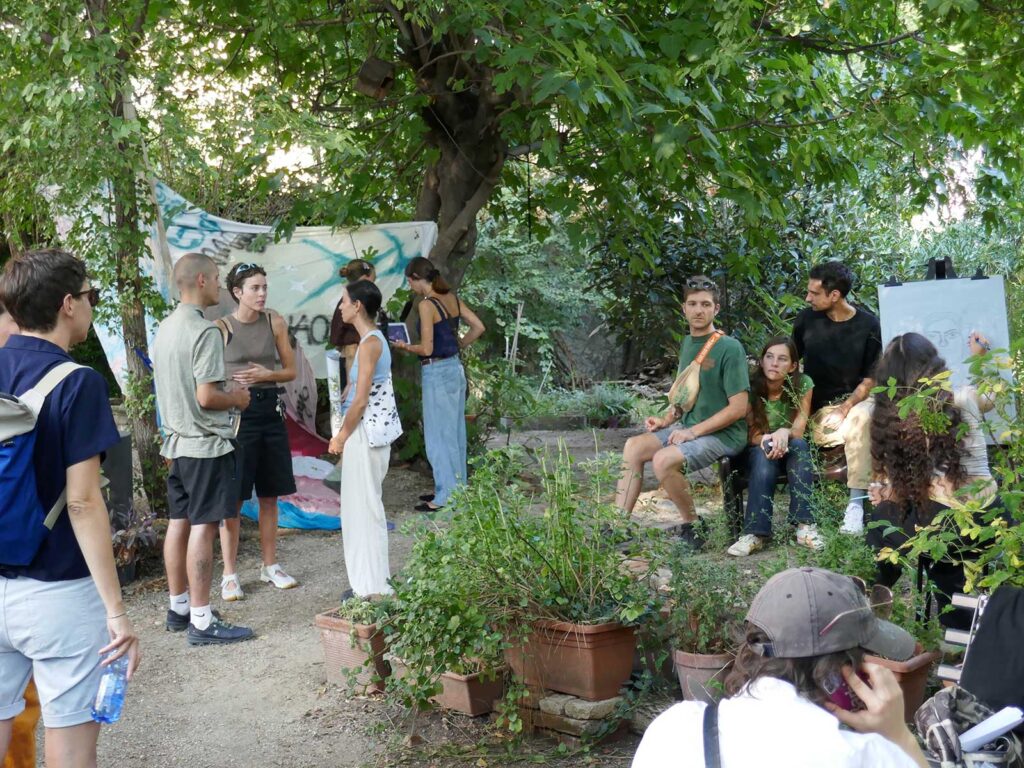
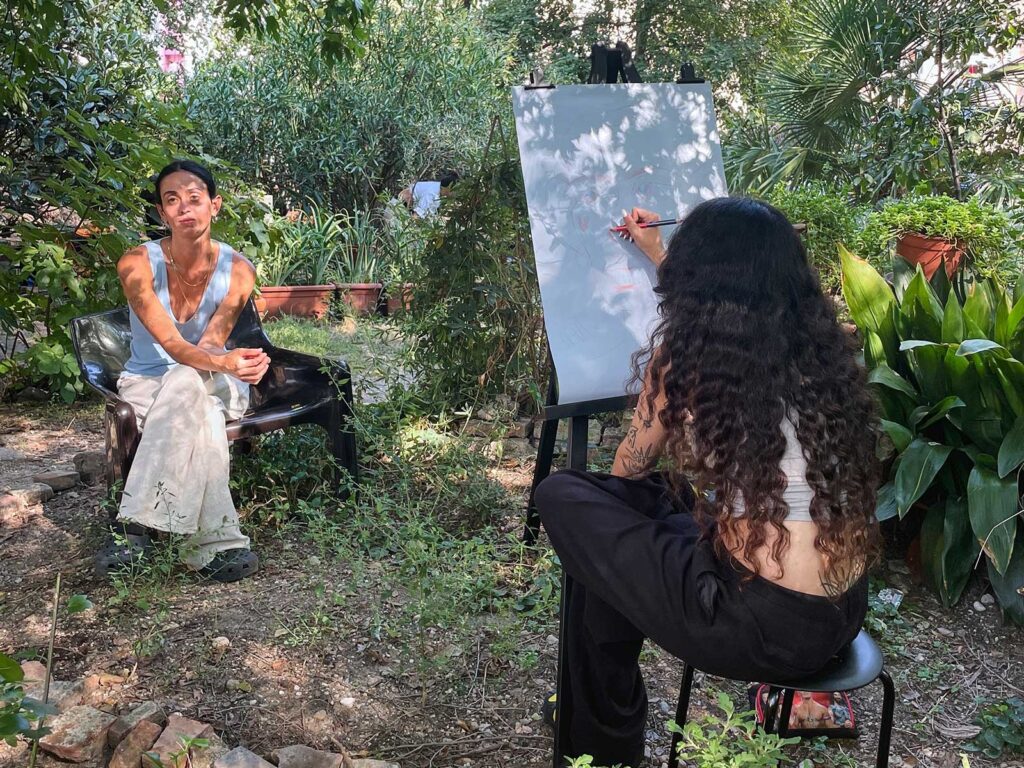

UNCLE’s latest project Congregations saw the pop-up event Lingua Lunga take place in Milan. Alongside the curators Brenna Horrox and Ludo Bulciolu, queer artistic platform TOMBOYS DON’T CRY helped facilitate the day that saw a collection of LGBTQ+ performers, artists and creatives come together in a day of community. Read a full breakdown of the day here.
TOMBOYS DON’T CRY were founded by artist Dafne Boggeri, DJ S/HE Mark Rebel and photographer Alien. They have been “promoting day and night adventures for lesbian on ecstasy, wonder queers, absolute beginners & gxrls interrupted since 2011. We hope to foster a post-identity agenda of research, sound, visual and performative experimentation connected to the LGBTQAIXYZ community”.
UNCLE talked to the founders about the history of the collective, including beginnings and past events that have led them to where they are now, eventually leading to Congregations presents Lingua Linga in Milan at the end of this summer.
WHY DID YOU DECIDE TO START THE COLLECTIVE?
It was born after the experience of Pornflakes Queer Crew, the first Italian queer collective started at the beginning of the 00s in which both Dafne and Mark were part of, and it was created out of a desire for more representation at the intersection of art, music and activism.
WHAT ARE SOME PAST EVENTS THAT YOU HAVE PUT ON?
We’ve worked on so many different projects throughout these years, from putting up parties, to a brutalist nail bar salon (at a bar, in contemporary art institutions, in artist-run spaces and at festivals), to billboards, readings, exhibitions and pop-ups for our hacked apparel.
In the recent years, we have curated events that embody our core values of artistic experimentation and the need of taking up spaces.
We’ve subverted a couple of exhibitions by extending our invitation to other artists as a way of hacking the system, its hierarchies and elitist approach. For this we curated the group show “BODY LANGUAGE” at FUORI Art Quadriennale 2022, at Palazzo delle Esposizioni, Rome. An initiative that challenged the institution norms. Following it there has been “SWITCH THE WITCH” at La Rada, Locarno, Switzerland in 2022 exploring themes like alterity, transformation, and magical realism from a transfeminist perspective, highlighting sisterhood, difference, and creativity as a way of healing, all while acknowledging the historical trauma that continues to influence our lives.
In 2022 we started to commemorate a significant moment in Italy’s human rights struggle. On April 5th 1972, there has been the first public representation of LGBTQ+ dissent in response to the International Congress of Sexology of the CIS, defining homosexuality as a “Deviant Human Sexual Behaviours”.
TUTTO QUELLO CHE NON C’É ANCORA, 2022 took place at “La Fossa,” an historic cruising spot in the very centre of Milan. Amidst urban dynamics and gentrification pressures, this location remained a spot for cruising and sexual encounters. The gathering included a daytime exhibition that culminated in a queer rave XS XS right in front of La Triennale of Milano, echoing the spirit of 1972.
TUTTO QUELLO CHE NON C’É ANCORA, 2023 took place in Porta Venezia Park, Milan, promoting an informal queer reading, where people could spontaneously gather to read their favorite pieces. This was an ode to community and to give space and amplify alternative voices. Set within an octagonal gazebo, the space is always accessible until the park closing hour.
We believe these events have left a meaningful impact on the people who attended them, inspiring new ways of coexisting.
DOES THE MILAN ART AND CULTURE SCENE REFLECT THE CITY AND ITS INHABITANTS?
There is a concerning lack of critical thinking and analysis within Milan’s cultural milieu, or rather an intentional (and questionable) direction towards an over saturation of contents.
The art and culture scene often operates on the surface, where superficiality and the relentless pursuit of a crowded “programme” led to an excess of events that often lacks a genuine connection to a territory and a community it should serve. Financial support and networks connecting with other national and international entities are missing, leaving events and initiatives isolated burst, meant to entertain rather than support.
This behaviour is exasperated and a consequence of the so-called centre-left political landscape, often non-existent or fraught with controversy, making it difficult to truly see who is who and who does what.
In addition, the scarcity of accessible spaces to flourish and the insufficient support, can force individuals and groups into a race for any opportunity, sometimes making compromises that undermine the integrity of their work.
HOW COULD THIS SCENE BE CHANGED FOR THE BETTER?
A brighter future for Milan can only come with a collective spirit of change.
Understanding spaces as not mere venues, diversify and democratize these places. Challenging the dominance of well- established institutions. Transparency and accountability are vital, ensuring that cultural spaces are run with the broader community’s interests at heart.
Creatives must assert their role as indispensable contributors to the fabric of contemporary society, and not as players to exploit only when needed. Their work goes far beyond aesthetic expression; it shapes the identity and soul of a city. An effort should be made to seek recognition, not just through words, but through tangible actions, policies, beyond rhetoric.
This synergy holds the potential to bring a better future.
HOW HAS THE CREATIVE SCENE CHANGED IN MILAN SINCE YOUR FORMATION?
Since our formation, we’ve witnessed a transformation in Milan’s creative scene that is marked by both positive developments and challenges.
One significant change has been the decrease in independent spaces for cultural expression. Milan, like many other cities, has faced pressures of gentrification and commercialization, which have made it increasingly challenging for independent artists and cultural actors to secure affordable venues. This shift has limited the diversity of voices and expressions that once thrived in such spaces, potentially impacting the overall cultural richness of the city.
It’s very hard to survive out here but we’ve found growth in the awareness of the term “queer” leading to more inclusion, even within the LGBTQAI+ community, that in the early 2000s struggled to accept anyone outside the binary spectrum.
WHAT INSPIRED THE EVENTS CONCEPTION?
It all started by the invitation of curators Ludovica Bulciolu and Brenna Horrox to work on the idea of public spaces, what they mean and how to translate and include them in artistic practices.
When gathering ideas for the event, we decided to do something local and engage with a space that we’ve been crossing the path before (one of TBD’C co-founder Dafne Boggeri has collaborated with them in the past). We believed we could share a mutual inspiration from: the self-managed garden space of Isola Pepe Verde who hosted the event is one of the last public green spaces in the neighbourhood Isola, in Milan and it comes from a long history in the art, with artists who first occupied the space in 2001 under the name Isola Art Centre while promoting creative practices. When we presented the idea of the event, they were thrilled: a circle back to the beginning, artists, makers and musicians, inhabiting the garden again.
Isola Pepe Verde represents a community effort to reclaim and transform public space. It is taken care by the work of many volunteers and is the perfect example of a place that still exist despite the aggressive constructions planning happening around it.
WHAT IS THE PURPOSE OF THE EVENT?
We symbolically transformed the entrance of Isola Pepe Verde in a big mouth, where people were invited to enter and engage in conversations, actions, and listening in an intergenerational gathering.
The purpose was to create a moment to co-exist and create new community narratives that could then be shared and used as a pivotal experience for many other similar happenings. We encouraged people to explore their senses, movements, and desires by question normative social behaviours imposed by gentrification and privatization of public spaces.
WHY IS THE EVENT NAMED ‘LINGUA LUNGA’?
We wanted to work on something local, both geographically and conceptually. TOMBOYS DON’T CRY is a queer trans-feminist platform that works with experimentations and tries to challenge normative attitude and ways thinking. Our choice of name originates from the appropriation of an Italian colloquial term that literally translates with “long tongue” but the meaning is closer to “loose tongue” or “big mouth” in English. This name is used as a figure of speech to describe someone with a ‘bad attitude,’ someone who can’t keep information to themselves. In the context of the event ‘Lingua Lunga’ seeks to reclaim the expression referring to a deformed body part (the long tongue indeed) associated with prejudices, and challenging the negative connotations associated with the term instead.
HOW CAN WE BE MINDFUL IN A SPACE LIKE THIS?
Our biggest aim is to create a safer space for everyone to engage and contribute positively to the atmosphere. Through the years we’ve been able to build a community that joins us and that is considered and respectful to others, not only to human beings, but plants and the overall eco-system around. Empathy is perhaps the key to it all.
HOW IS THIS EVENT TIED TO THE CITY OF MILAN?
TOMBOYS DON’T CRY work focuses on discovering and bringing back to the map places that are forgotten or unseen, and we put a lot of effort working on the territory and activating it in surprising yet respectful ways.
In a city where commercial and private spaces have taken over, Lingua Lunga offered a glimpse to a mostly unknown green space in one of the most cantered and gentrified neighbourhood in the city.
The event addressed Milan’s introverted character by creating a tangible and accessible moment for artistic expression, fostering a sense of belonging.






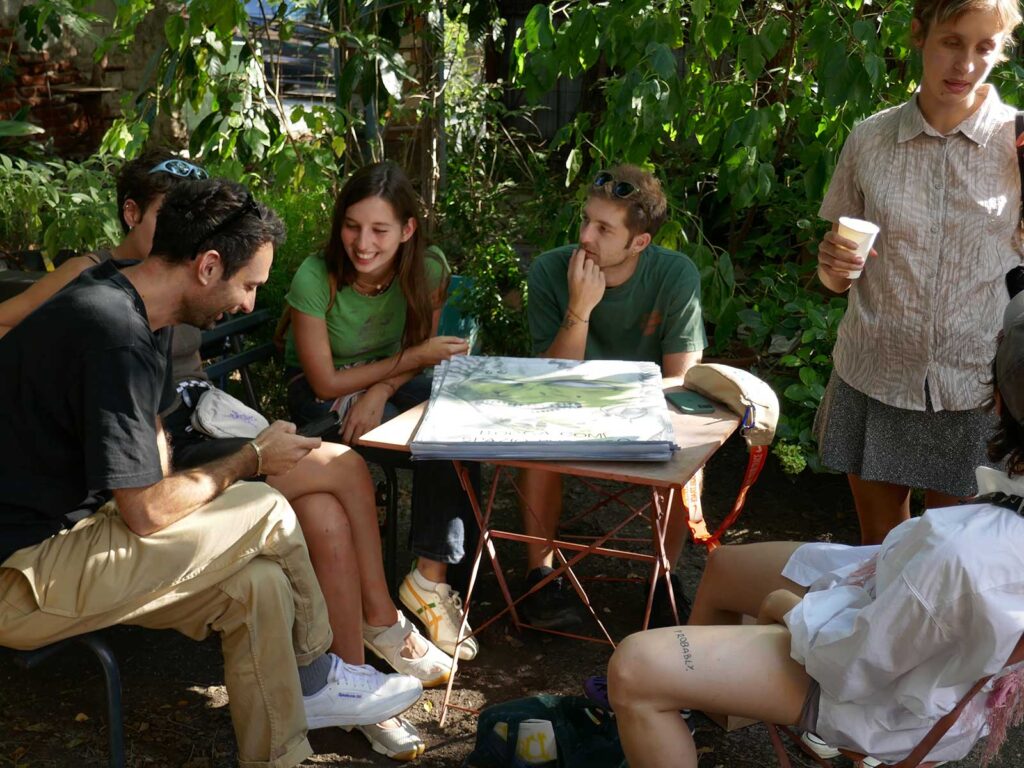



Tucked away in the heart of the city of Milan sits Isola Pepe Verde; what can only be described as an oasis for the city goer looking for a moment of peace. So was the perfect setting for UNCLE to present Lingua Lunga by TOMBOYS DON’T CRY. This is the first, Milano chapter of CONGREGATIONS. This project was curated by Ludovica Bulciolu and Brenna Horrox in collaboration with UNCLE. We covered Milan with posters in anticipation for the event.
The day saw a host of creatives come together in a celebration of multiple mediums, centrally focused on giving a platform to artists with the LGBTQ+ community. A zine was produced before the event ready for launch, inside was the short story Darkroom by Maria Giovanna Drago in both Italian and English. The event began with a reading of the text in Italian to the crowd and depicting how Drago was disenfranchised by the city of Milan until discovering an underground world of acceptance in a dark room. The reading “reflected on the need for intimate spaces within the city and how in creating spaces for queer bodies to be sensual and connect in the dark affirmed their feeling of becoming stronger in the light. It reminded us of the work by queers 10 years and more ago in carving out spaces when environments were even more hostile”. The zine features illustrations from Giorgia Rachel Donnan, who later drew caricature style portraits of attendees and designed the event’s poster.
Following this reading was a performance from “KXIREN who played their sound piece, Fuk Fuk – it was interlaced with sounds and rhythms of batuku and funana, two Cape Verdean musical styles that were forbidden in the public space while resisted in the mountains, celestial white noises, as well as a poem the artist wrote whilst in Italy facing racism in public settings. The sound filled and vibrated throughout the garden, with moments to dance and moments to consider the somber reality of what it feels like when a form of human expression is stripped from people.”
The space itself was decorated with fabric design from Fightingdiscotinha, which saw colourful cut throughs amongst the greenery, the perfect backdrop to a reading from Sandra Malecane, which was an intimate tale of sex, acceptance and love. The day was closed by Adele H and a listening session of her new album ‘Impermanence’ which was enjoyed as the sun set on Lingua Lunga.
The day was a true reflection of Milanese culture with welcome faces of all creative facets being represented. From easy comradery over sage lemonade to the community dancing at the sounds of the evening. UNCLE will be continuing to delve into Congregations with an interview with TOMBOYS DON’T CRY and the event curators to showcase the impact it had on the city and the purpose behind the day. Watch this space.
We spoke with the curators Ludovica Bulciolu and Brenna Horrox on their reflective thoughts of the day.
WHY WAS LINGUA LUNGA SO IMPORTANT?
At the heart Lingua Lunga was a reflection on what public space is? Not only is there an actual decrease of it with privatization but even the spaces that are ‘public’ perhaps don’t feel like it – they do not leave much room for the possibility of interaction, spontaneity and sense of belonging. Lingua Lunga felt like it created this possibility.
HOW DID THE SPACE IMPACT THE EVENT?
There were interventions amidst the garden. The purpose was not to take over the space but to work with it, tattooing different textures, visuals and vibes into the allotment meets garden meets community centre that Isola Pepe Verde was.
WAS THE COMMUNITY OF MILAN TOUCHED BY THE DAY?
The garden stayed open as usual with its typical crowd of families, kids, volunteers who upkeep the space and day time wanders flowing through. A new crowd joined them, those who knew of the collective Tomboy Don’t Cry and the artists involved in the day. Many who had never heard of this unique free space before and felt grateful that they had been introduced to it. They said it was very rare for Milan.
HOW DID THE LINEUP OF CREATIVES REPRESENT THE THEMES OF THE DAY?
These works by artists dreamed of how we want public space to feel as well as revealing the reality that for so many the ability to be oneself in public is still hard to grasp. Lingua Lunga celebrated the power of coming together and congregating to create an atmosphere against homogeneity. Strangers next to friends next to communities.




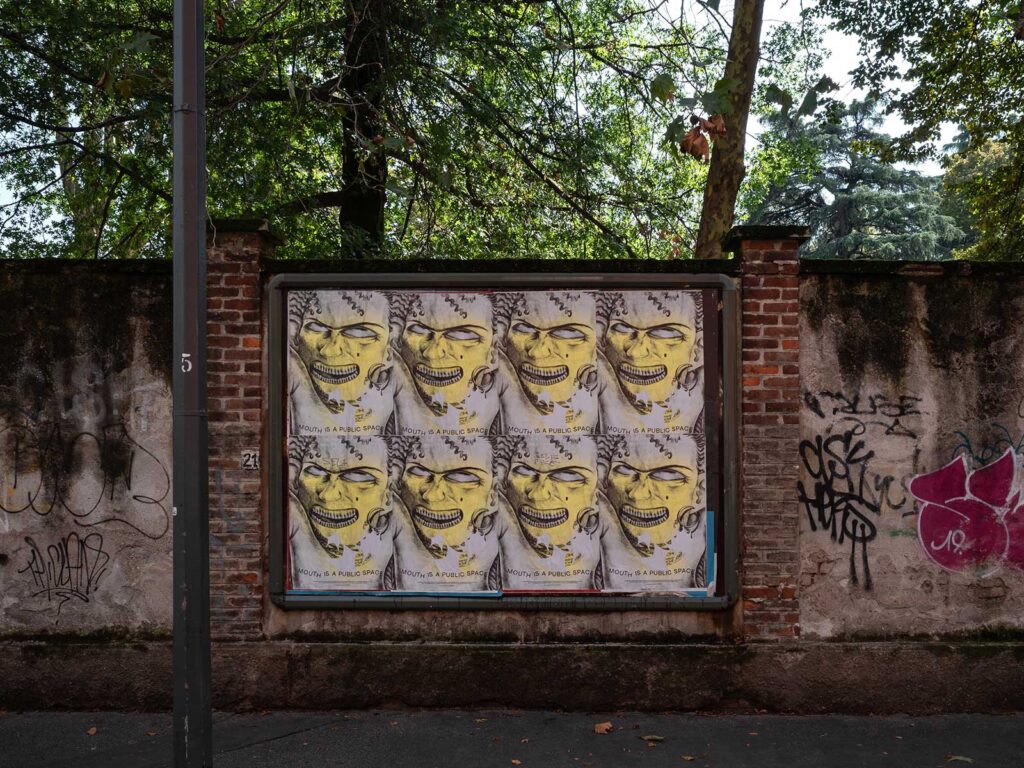
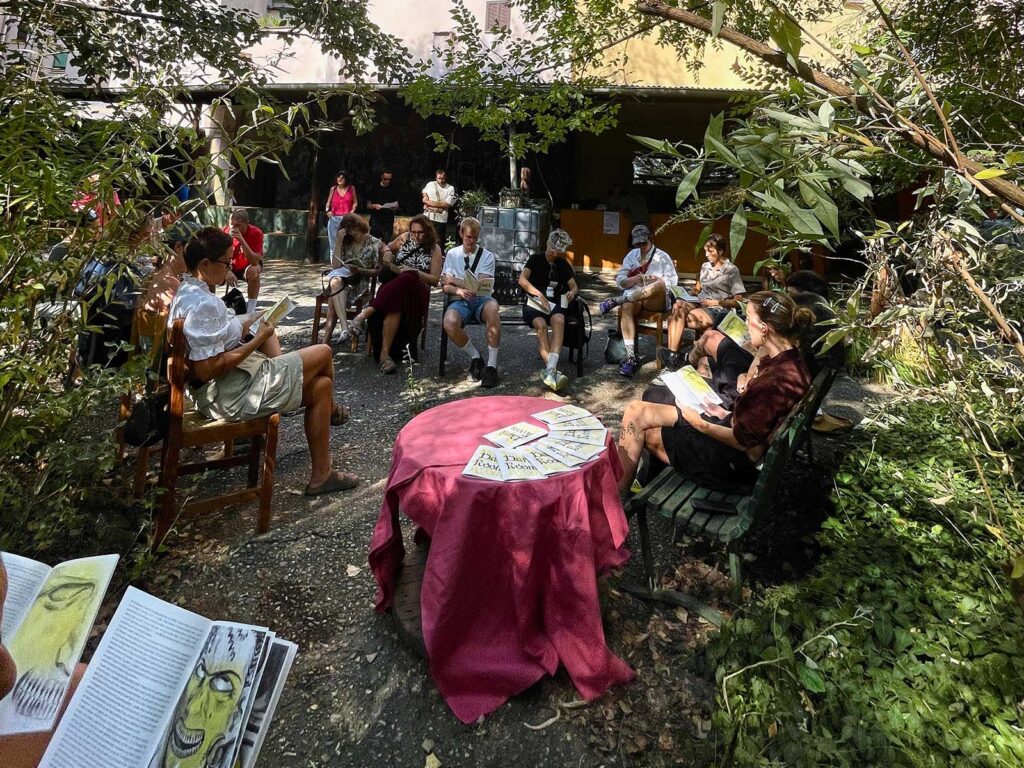
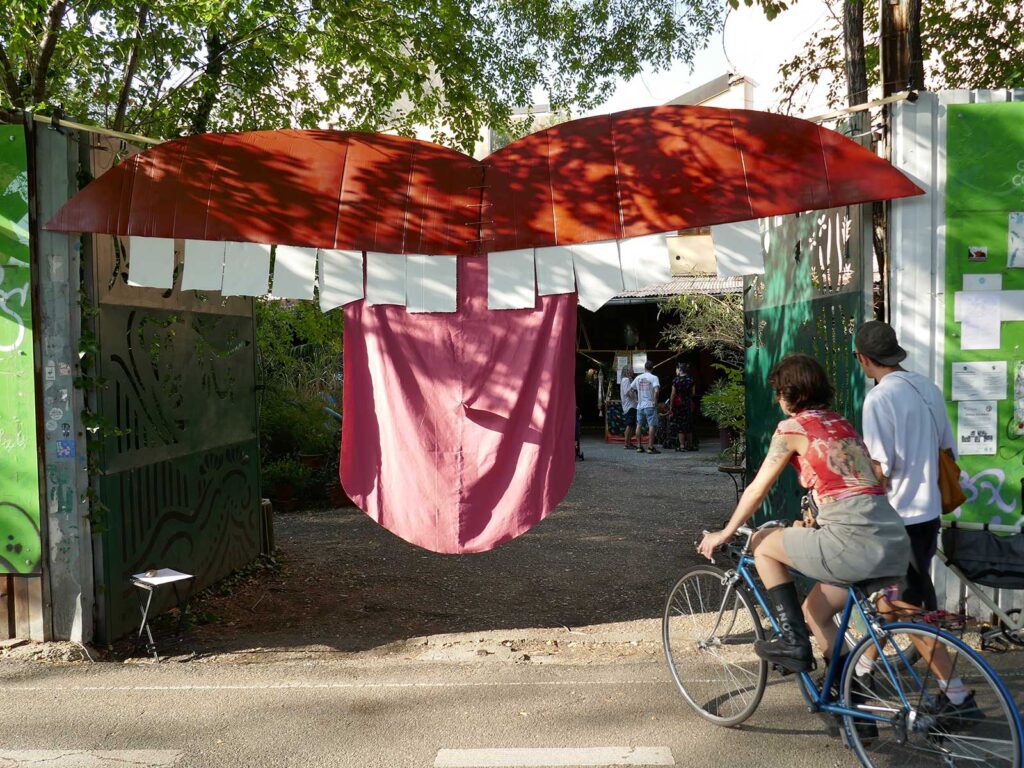





Horrox has been hotting up the fashion scene with a poster campaign popping up internationally courtesy of UNCLE. Our continued partnership with the androgenous clothing brand seems an opportune moment to home in on the effective and varied methods UNCLE uses in cities worldwide to create campaigns worth talking about.
London is the foundation of UNCLE’s existence; we were borne in the rebellious beginnings of the fly format, it’s our roots. Our mindset for our home market tends to be ‘go big or go home’, using all our format types to create a high frequency and saturated campaign across the city. Whether that be three billboards in a row for a street takeover or a paste up to play with a unique square creative, Horrox took advantage of all this city has to offer.
European markets themselves each carry with them individualistic elements that are iconic in their own rights. Amsterdam always makes for a campaign that transitions to the digital well, being a city so instantly recognisable, our sites work wonders across social channels. Barcelona, a sunny haven where pillars cut through crowds, high foot traffic are always on the cards for those who are displayed here. Ever the crowd pleaser is Berlin, a sought-after mecca for brands that like an edge, our sites have an industrial feel, and this grittiness certainly added a sense of intrigue to the Horrox campaign itself. Milan – one of the world’s fashion capitals – it’s sunny streets and refined site design always lead to a clean looking outcome for campaigns, a favourite of brands going for class. Finally, we have Paris, whose arguably most important feature being the context that comes with it – all things fashion needs to have a presence here. A combination of these cities made a unified stamp across the continent for Horrox and built brand image in alignment with each city’s perspective.
Let’s not forget our overseas cousin America – a beast that brands always want to conquer. The cities Horrox appeared in are all key players in the vast market that makes up the country. Whether the relaxed west side with Los Angeles and San Francsico – where your poster can be backdrop to a beach walk and golden sunset or the red-hot west side that offers a streetside catwalk in fashion hub New York or a fiery addition to Miami’s iconic skyline. Horrox is a brand based in Brooklyn, and the campaign felt at home amongst its streets, UNCLE made sure to emphasize the homecoming with a focus on distribution surrounding the area.
Tokyo needs no introduction; the powerhouse city of the east has an unmistakable feel. Formats here are clean cut and perfected – an apt style that seems to reflect the general feel of the city itself. Due to lack of competition with advertising space, Horrox had no trouble standing out against the brutalist architecture. The striking red was a key colour in eyeline with all onlookers, working perhaps best on the digital screens that offer a distinct look that posters cannot replicate.
The true definition of global includes that of Australia; laid-back and homegrown posters here feel part of the woodwork and have no trouble looking like they belong. Sydney makes for a city that offers a casual edge that capitals tend not to include, this only grounded the Horrox campaign and approachability is important within advertisement. Whereas Melbourne delivers on locations that are unmissable, want to be noticed? Melbourne is the one for you if you want eyes down under.
Every city offers its own opportunities, and if you can align yourself with the pulse of that city you can appeal to its onlookers. Horrox was at home in all markets, reaping the benefits of the cultural markers and standing out amongst the grey.

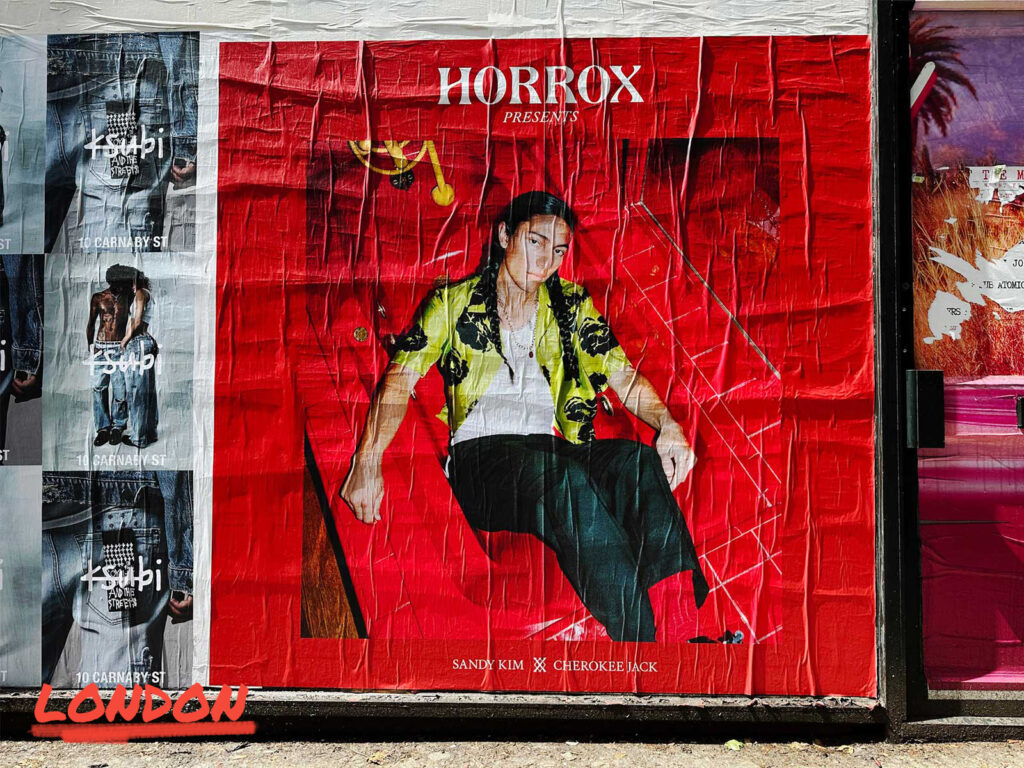

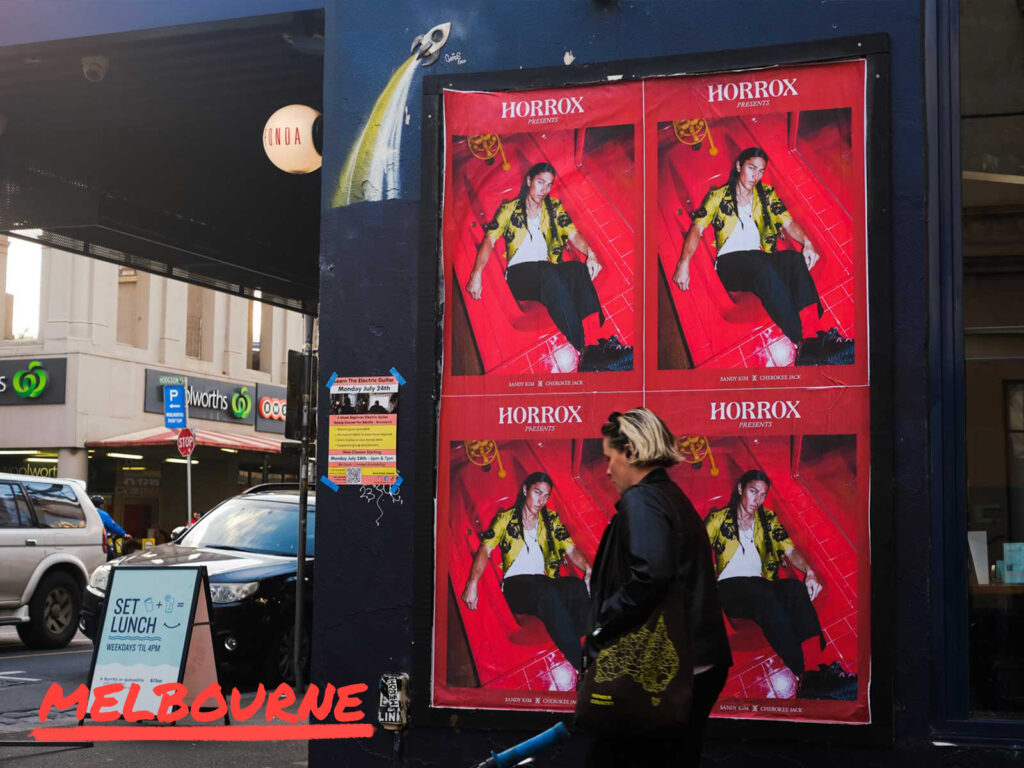

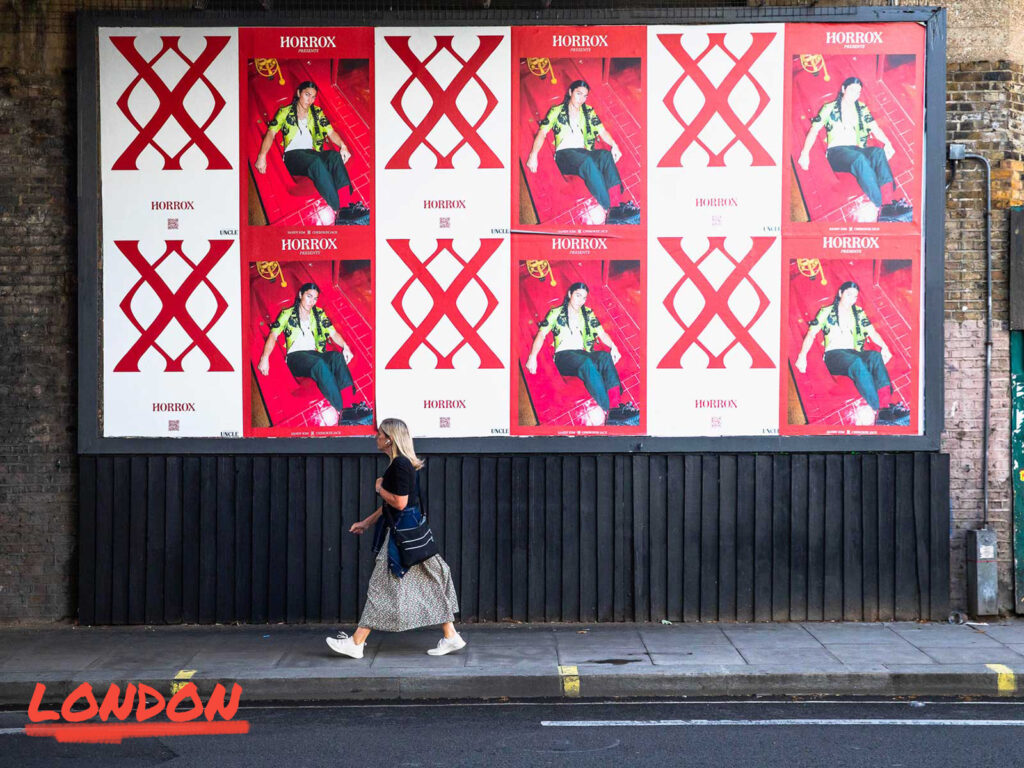
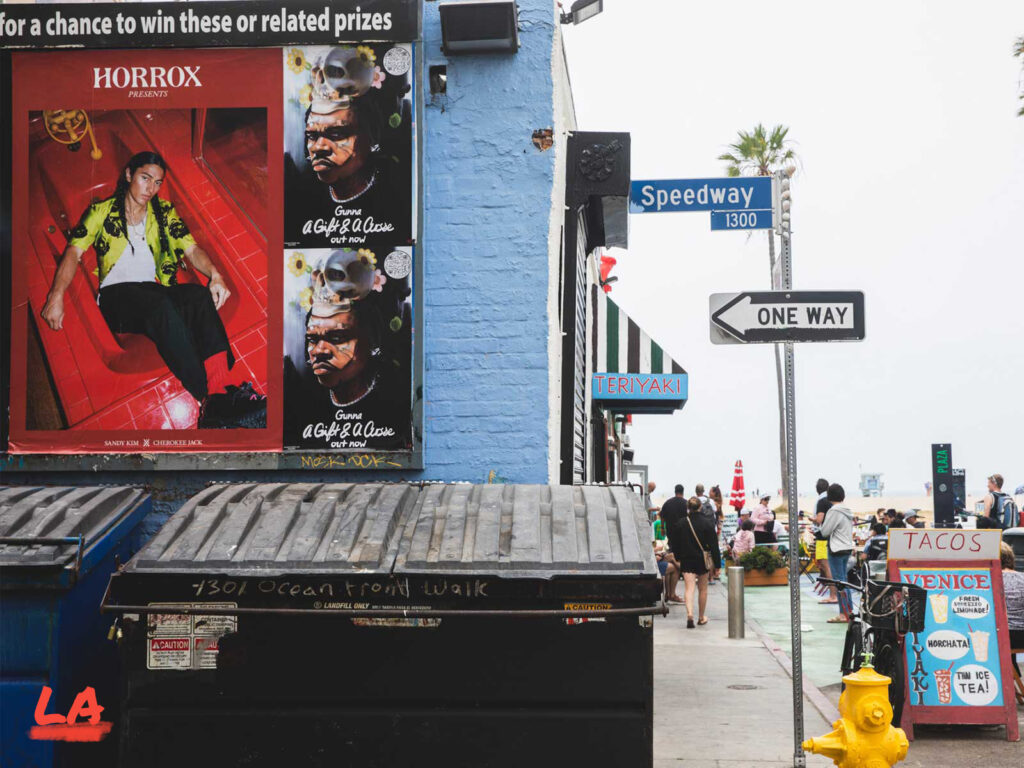
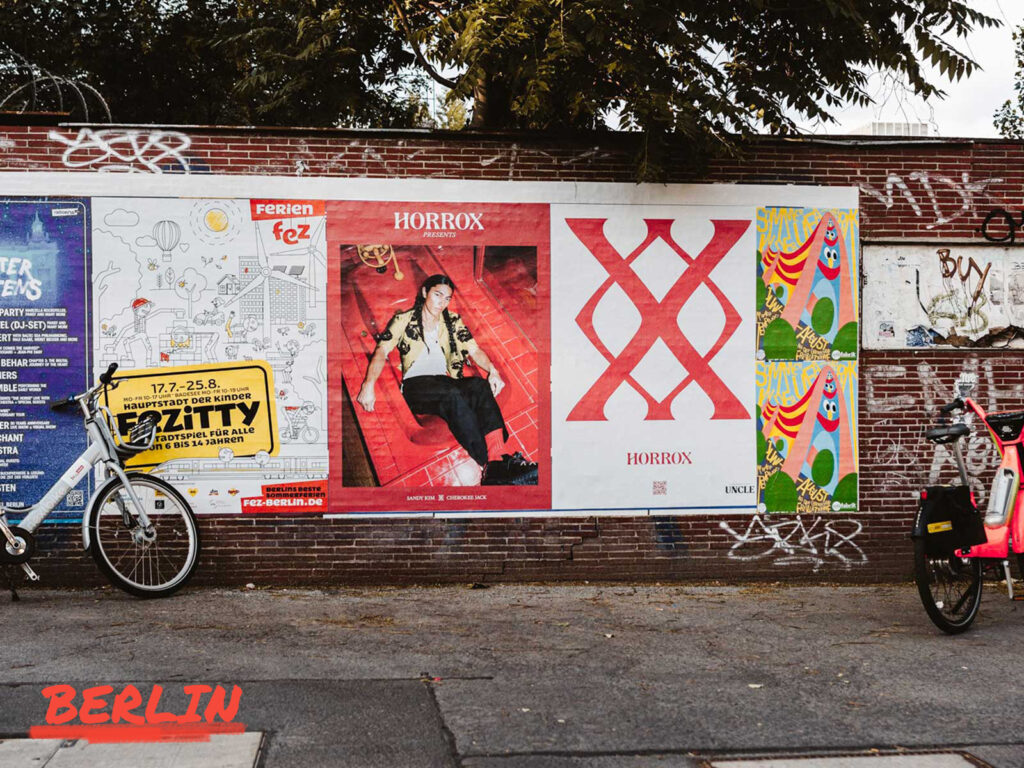
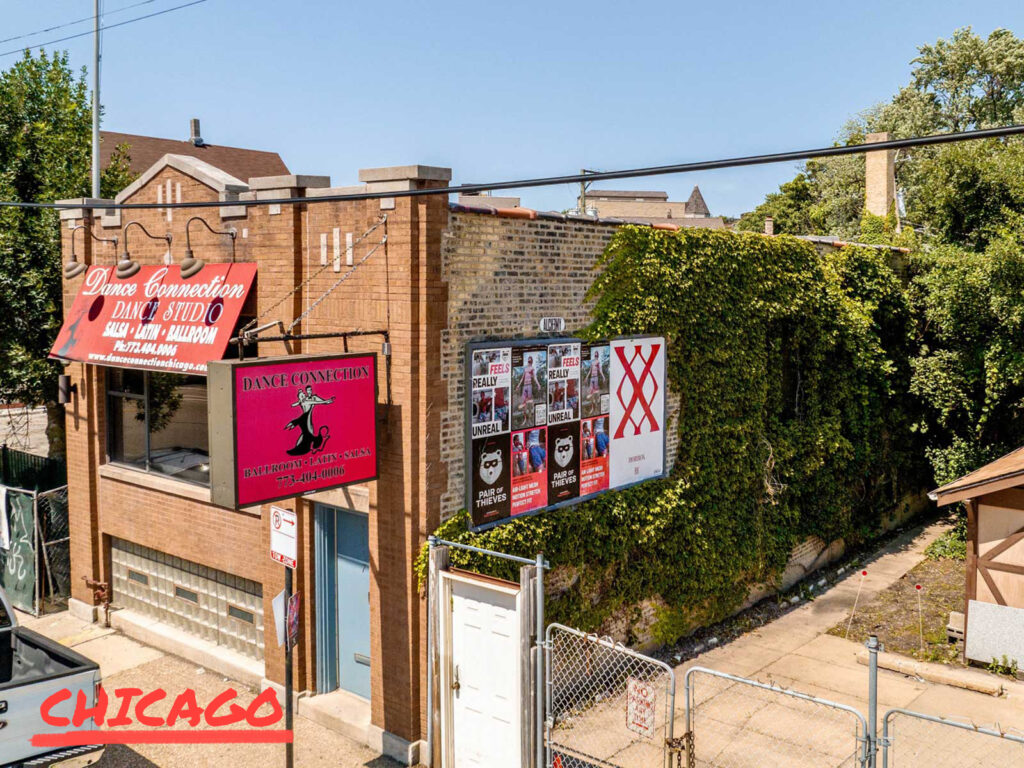
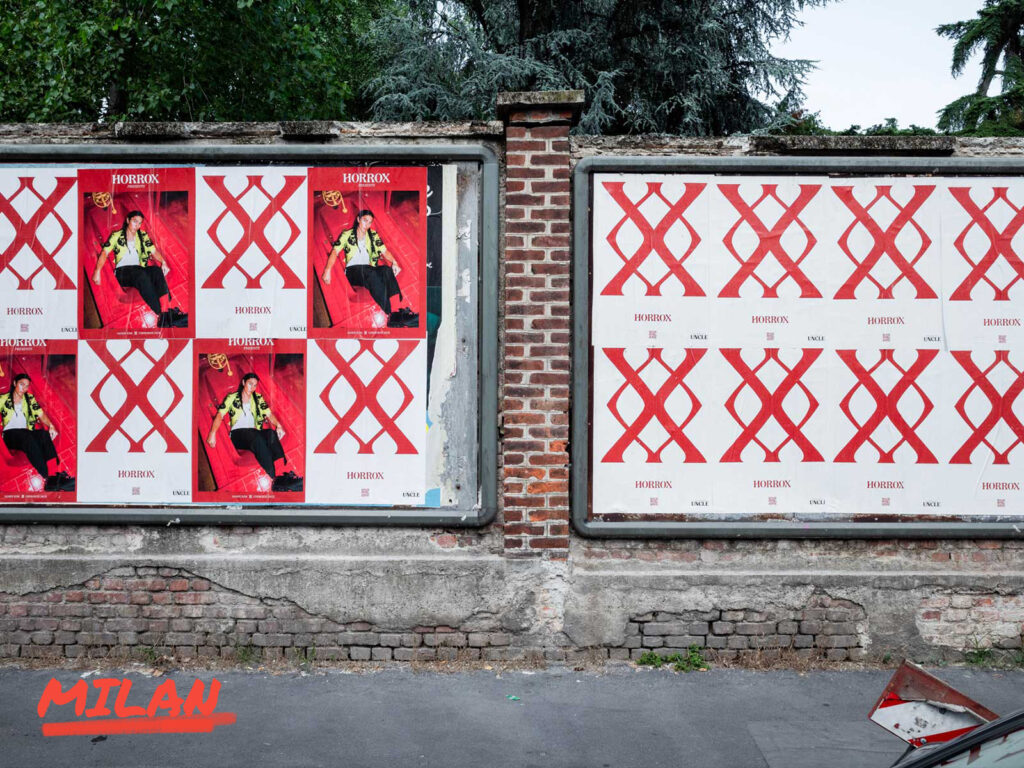

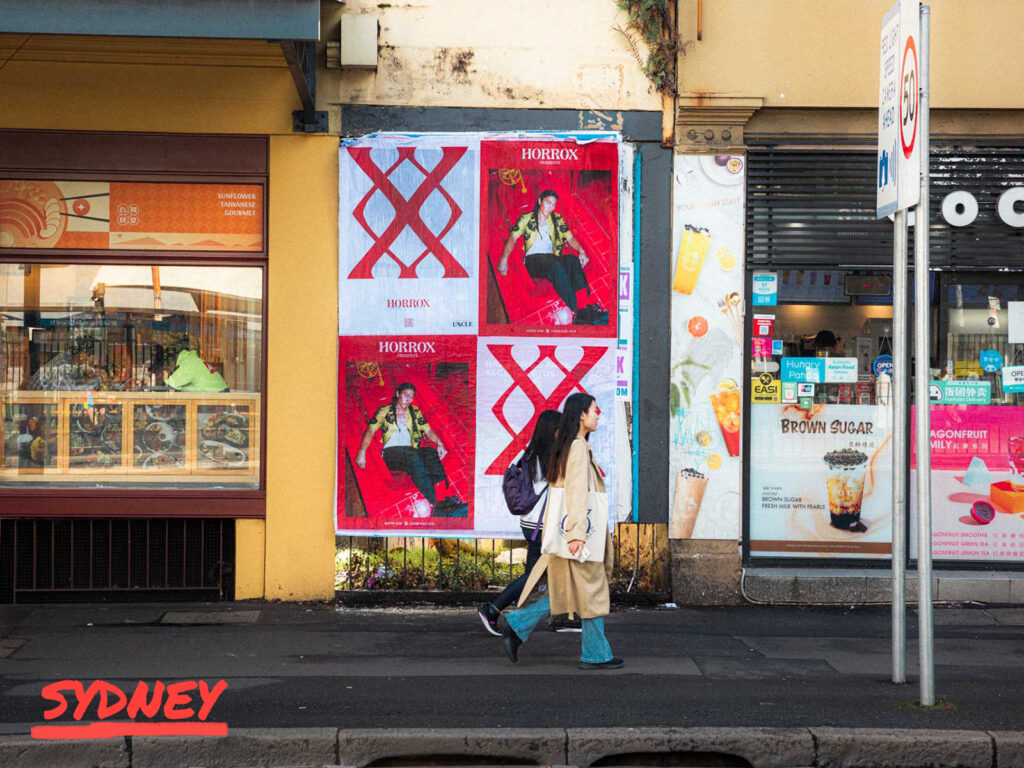

Horrox is not a brand that exclusively pulls from the past but also the present, with some of its most prominent pieces being collaborations with artists and charities. In continuation of UNCLE’s partnership with Horrox we put a spotlight on one of these collaborators. JV Aranda, an artist based in San Francisco uses a mixture of colour, printing and repetition to make an impact with his graphic designs. His playful graphics prioritise impactful, layered motifs that are reminiscent of a pop art and dadaism which seemed a fitting match for the first collaboration of Horrox as the brand also borrows from the past for its creative direction. We took a spotlight and enquired about how his contemporary techniques and style have developed as he’s grown as a creator.
HOW DID YOU GET INTO ART?
Fortuitous museum visits during my formative years. For instance, in 1998, while on a trip to Los Angeles to celebrate my 16th birthday, I had the good fortune of being introduced to the work of Yayoi Kusama via a retrospective exhibition of her work at LACMA, which was mind-blowing and incredibly influential in a multitude of ways: from her enthusiastic experimentation across different mediums to how her practice overlapped with her mental health, nationality, gender, era, and pure intuitive visual talent. Her work has always served as a wonderful example of the limitlessness of Art as a storytelling device and her resilience and prolific output continues to be an inspiration.
WHY COLLAGE?
Collage was always a medium that just made sense to me since first being introduced to it at school. The materials needed were accessible and the process of destruction, manipulation and reinvention has always felt liberating and cathartic.
Additionally, with the amount of content being generated daily in this day and age, Collage has grown in importance as a method to utilise the world’s growing collective archive, showcasing and re-contextualising imagery that would otherwise be ignored or forgotten.
DESCRIBE YOUR DESIGN PROCESS?
It’s a mix of following my intuition and problem-solving. I’ve always loved being commissioned and receiving a brief to interpret with various constraints to meet. So the design process can vary due to the project at hand, and my favourite experiences have been the ones that allowed me the opportunity to widen my scope and try new things, like working with Horrox, which gave me the chance to use the comic-strip panel format as a structural device and incorporate speech bubbles in my work for the first time.
WHAT IS THE THING YOU LIKE MOST ABOUT BEING AN ARTIST?
I love how artwork can form a life of its own while retaining that psychic link to its creator, who essentially become visually invisible when the work is finished. As a Queer, Person of Colour, creating artwork feels like one of the few realms in which I’m not immediately judged by any of my physical or sociological attributes, though my work is always representative of all of those things purely from being filtered through my vantage point.
TELL US MORE ABOUT THE COLLABORATION WITH HORROX?
Legs somehow found my work out there in the ether and got in touch with her vision for the prints that she had wanted to commission for Horrox. I was enthused after being introduced to her work and learning where she wanted to go conceptually with the prints and was pleasantly surprised to discover the strange parallels we had with one another; Namely that I was an American living in the U.K. at the time and that she was British and living and working in my home state of California.
WHY ARE YOU DRAWN TO USING COMIC STRIPS IN YOUR WORK?
When working with Comics, I’ve primarily been drawn to utilising work from the Golden Age of American comics, which spans from the 1940’s and 50’s, since I not only enjoy the aesthetics of that era but additionally have gotten a kick out of re-contextualising work that was originally found in arguably quite wholesome environments, and reconfiguring the work with more modern narratives that reflect our current realities and collective discourse.
HOW HAS CALIFORNIA AND LONDON INFLUENCED YOUR WORK?
Growing up in California, I was surrounded by pop culture and the grandeur of nature. I was essentially raised by cartoons and theme parks. And I’ve often felt that the hyper-saturated colour palette of my work is very much informed by being a Californian. Living in London was quite a contrast and helped me realize that pursuing the arts was not only valid but important, and it was incredibly inspiring to be in such a global and diverse city, absorbing such a range of stories. My work may be incredibly influenced by California conceptually, but I learned how to become an artist thanks to London.
HOW HAS SAN FRANCISCO HELPED SHAPED YOU AS A DESIGNER?
When Legs got in touch about the commission, I was living in London and when she mentioned she was based in San Francisco at the time and wanted the prints to reflect the city and it’s musical history, specifically during the Jazz age, I was absolutely delighted as a former San Franciscan, previously living there for a number of years in the early 2000’s, back before I even realized I was an Artist and Designer. So, I’d say my time in San Francisco planted a lot of seeds, that still grow to this day. There’s an organized chaos to the city, or rather, a battle between structure and hedonism, that definitely shapes my work.
DOES THE CITY INSPIRE YOU?
Absolutely. Living in San Francisco was my first experience as a young adult with the wonder and perils of embracing spontaneity. I was raised in San Diego, which is very much a car-based city, so it was quite liberating living in San Francisco, which is much more pedestrian friendly. I’ve always been inspired just walking around the city and getting immersed with the different personalities of both the different neighbourhoods and the characters who happen to be around on any given day.
WHAT ARE SOME OF YOUR FAVOURITE PLACES THERE?
I’m biased towards the neighbourhoods I previously lived in: the Castro and the Mission, which includes my absolute favourite place in the city, smack dab in the middle of those areas: Mission Dolores Park, which is situated on an incline with a gorgeous view of Downtown San Francisco, and has been the setting of many meditative walks, sunny celebrations and heartfelt conversations with loved ones in the past.
WHAT’S NEXT FOR YOU?
More Collages! Currently, I work as an Editorial illustrator for a variety of clients. Most recently, I’ve been working with the esteemed American automobile magazine, Road & Track, creating collages for a column called the ‘Department of Overthinking’ and I’ve also begun to participate in different art fairs, showcasing all of the different adaptations of my Collage work, in preparation of opening Sinewy Sea Fine Art, which will be a hybrid of an Arts Space, Tea Lounge and Gift Shop, showcasing modern curiosities and storytelling, to be based in San Diego.


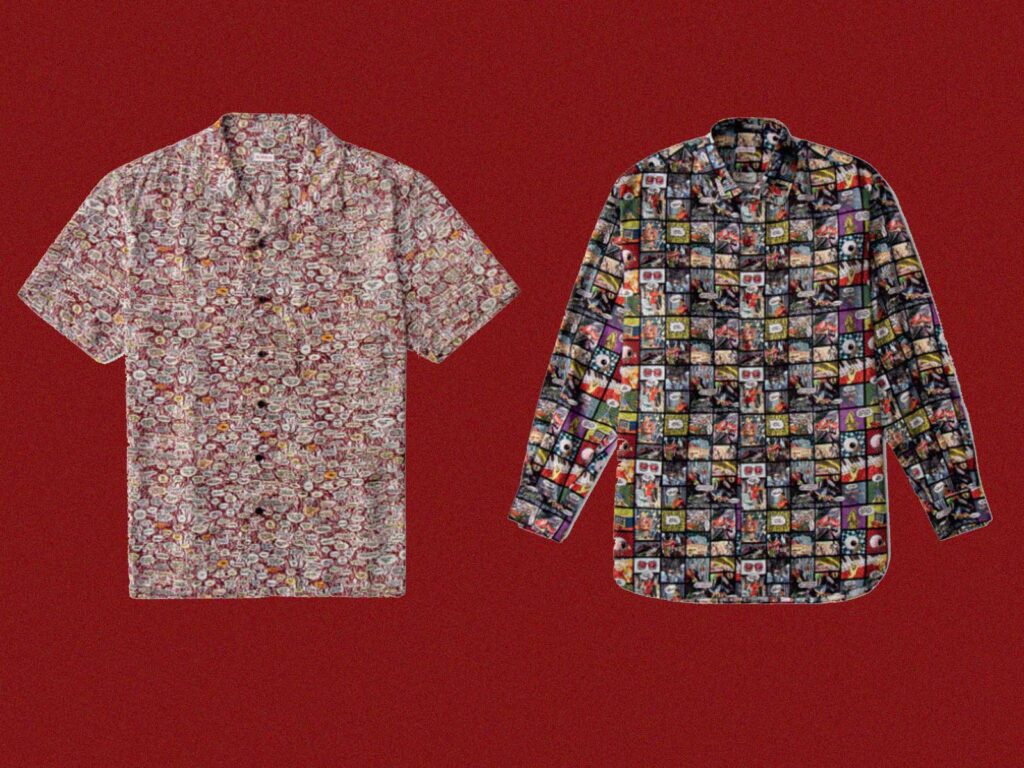
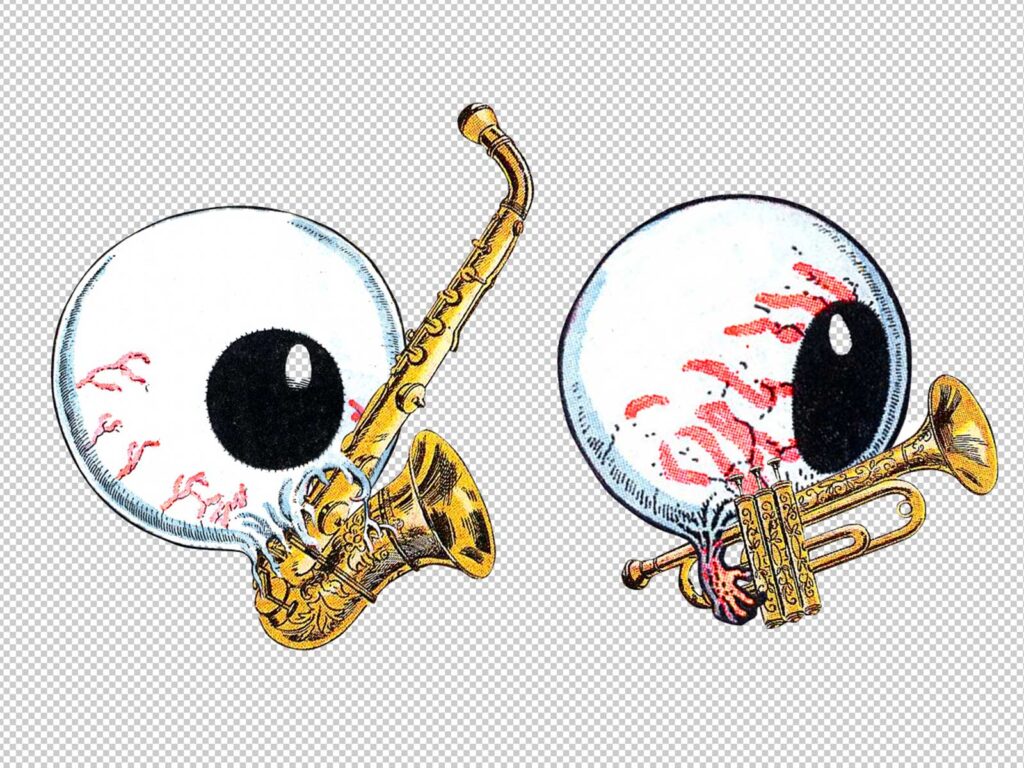
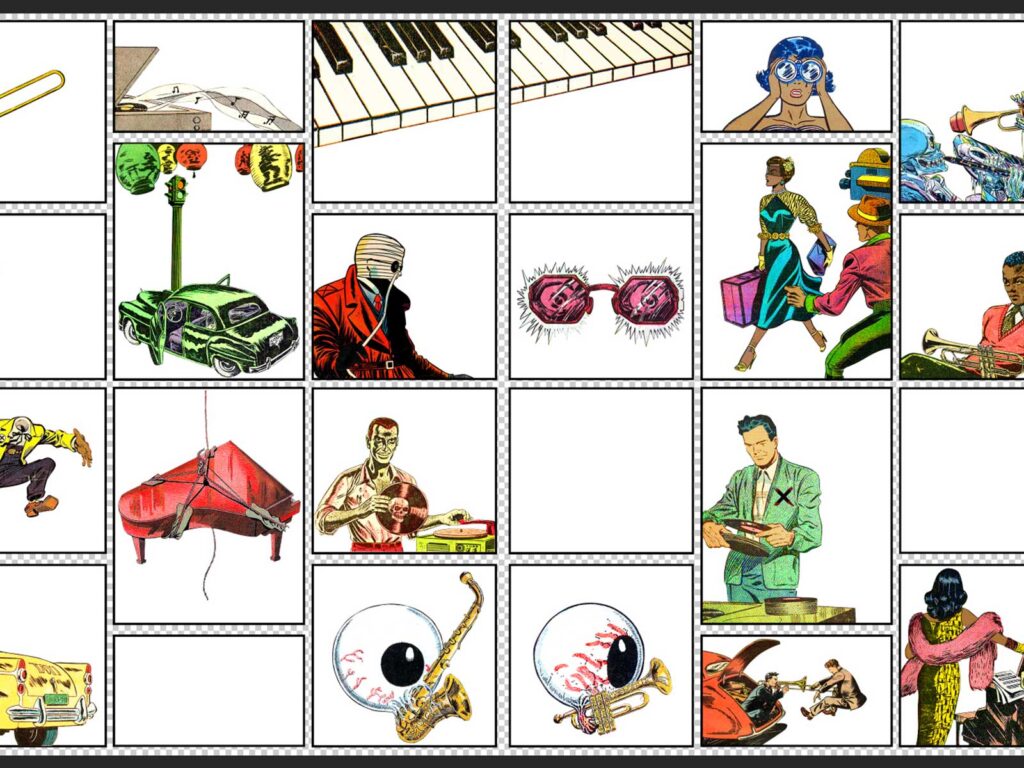
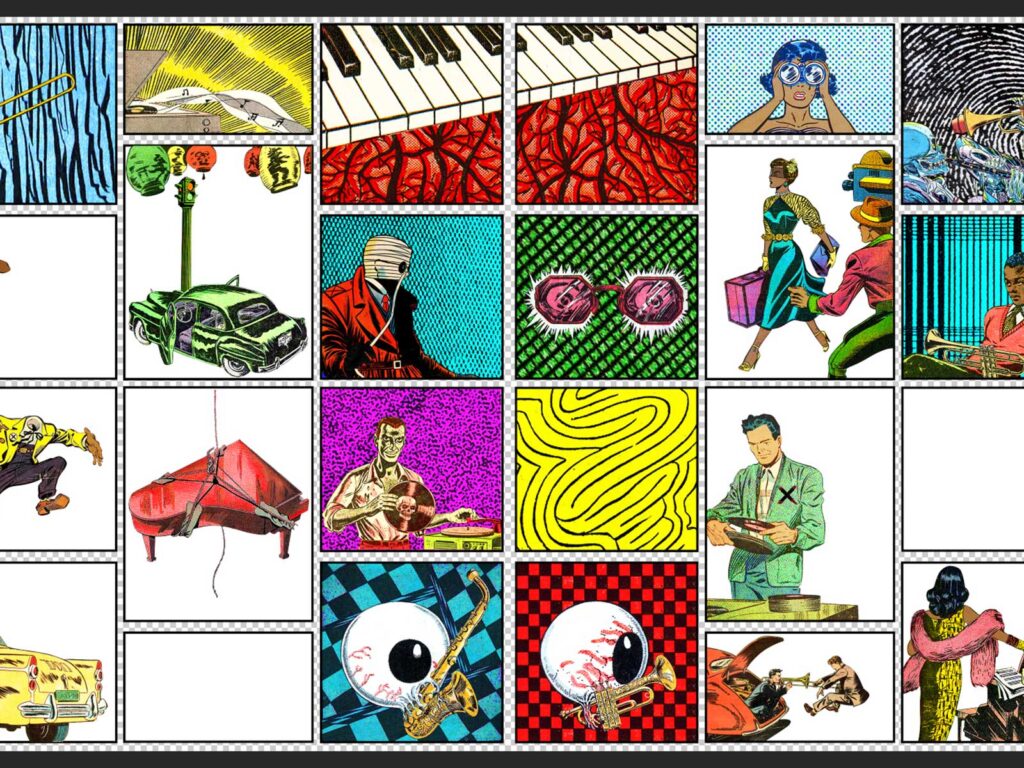
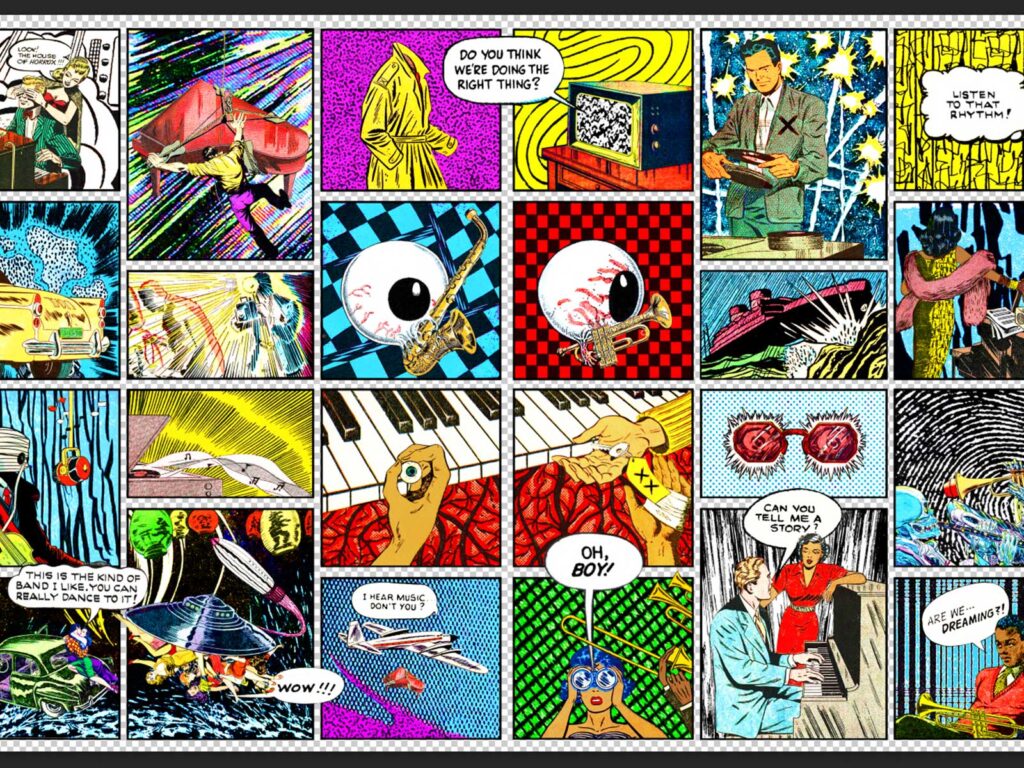
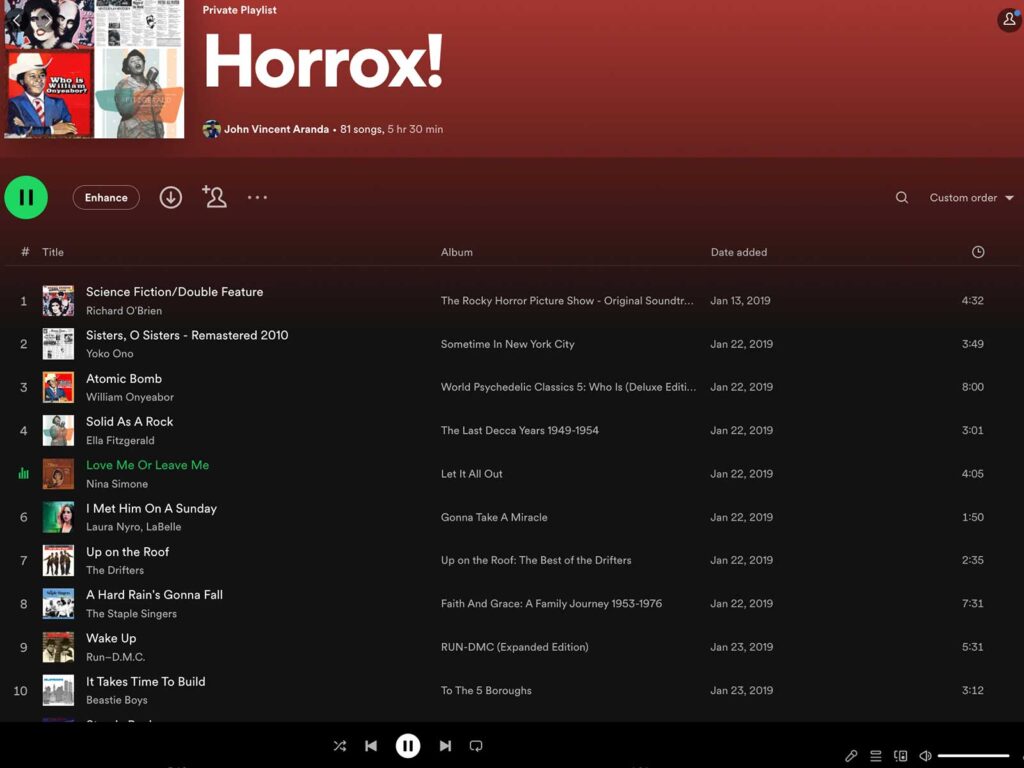
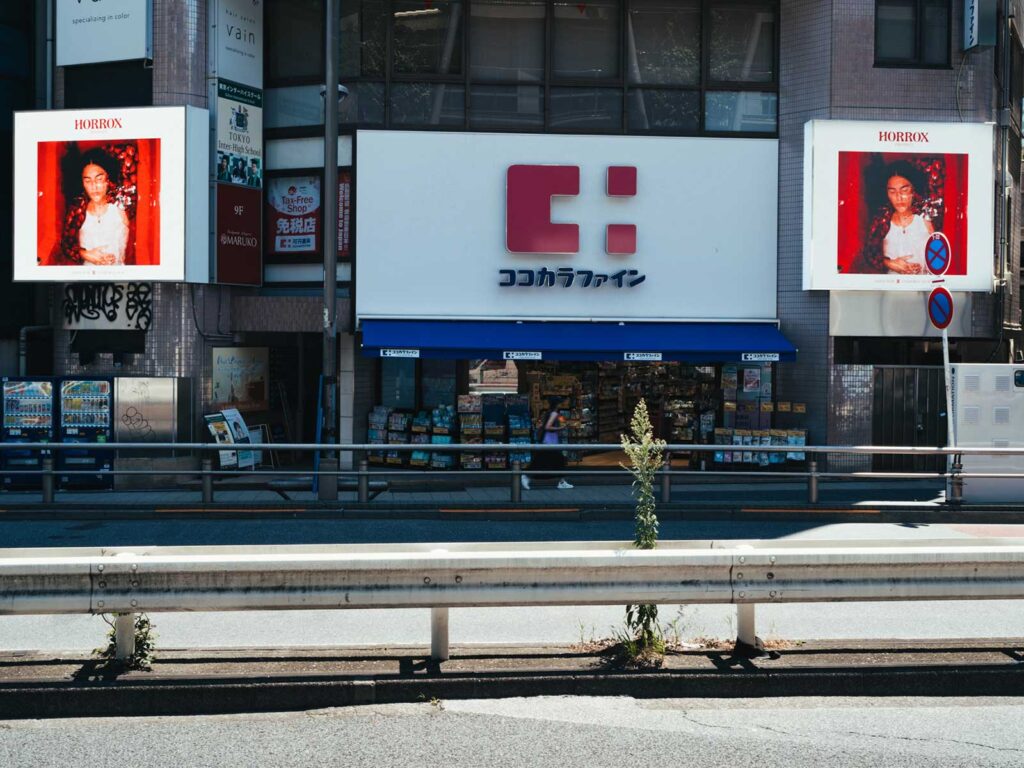
Based in Brooklyn, New York fashion brand Horrox are launching their debut collection to a global audience promising to deliver on an informed and cultural array of designs. Horrox marries culture, art, music and collaboration with fashion that culminates in an informed yet edgy drop. This emerging fashion brand seemed a great match for UNCLE to support in their beginnings with a partnership.
Horrox was born of music. From the intrigue of record sleeves and music publications, to clothing synonymous with music subcultures throughout history, it all serves as muse for the core Horrox product. Whether it be the new wave stylings of Talking Heads or punk rock powerhouse The Clash, the brand infuses distinctive eras into its pieces with a modern edge. These aesthetic choices could often misinterpreted as vapid, but instead are rooted in politics, class structure and other poignant moments within the zeitgeist. Horrox revels in research that elevates design beyond the visual and strikes a balance between concept and composition.
The brand’s founder – Riona Horrox – a graduate of the Royal College of Art used Motifs have most commonly been drawn from the ‘77 punk era, alongside elements that borrow and modernise 50s and 60s styles. Shrunken t-shirts and jeans lend themselves well to the inherited seventies influence on the west coast.
As part of the partnership, UNCLE will be continuing to dive deeper into the core of the brand with interviews with collaborators. This is only the beginning. Fashion can be a portal of education for its audience. Horrox is a brand that plays with nostalgia; style can intertwine with who you are and pull you into whichever community you wish to be a part of – let Horrox be yours.


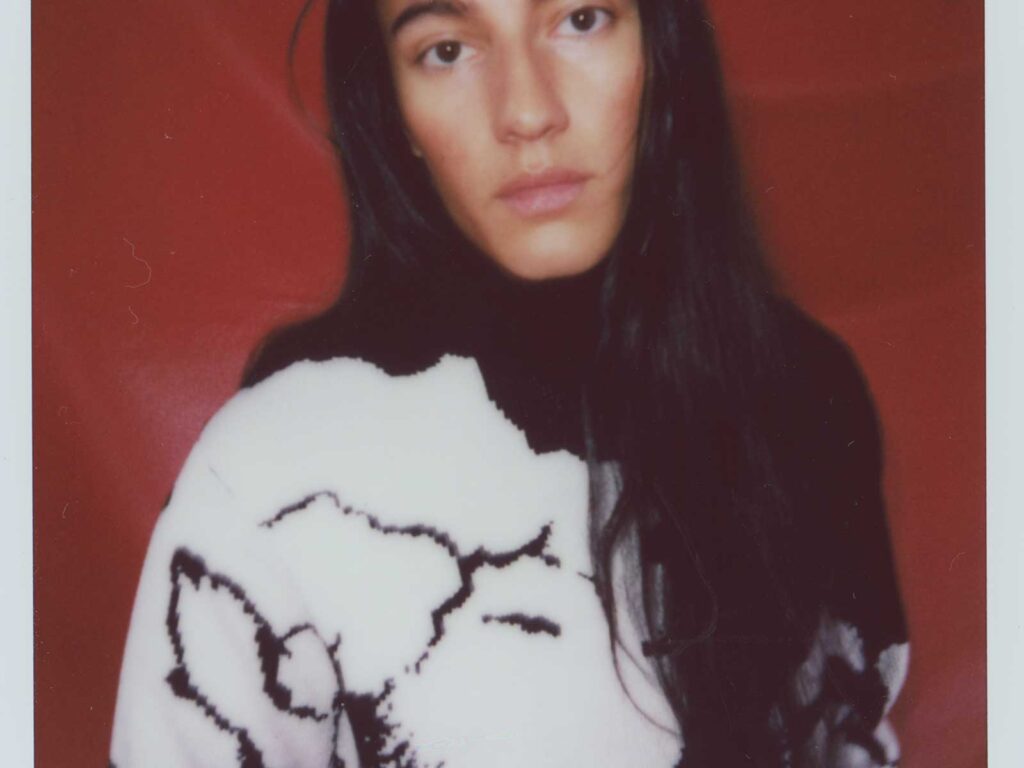

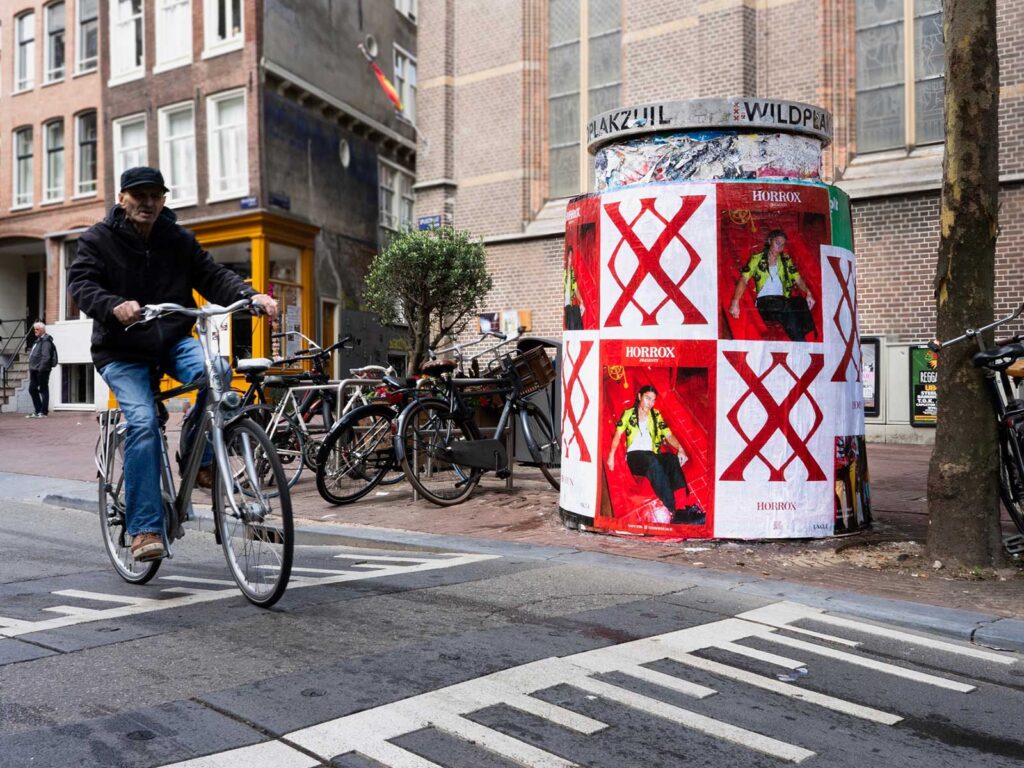

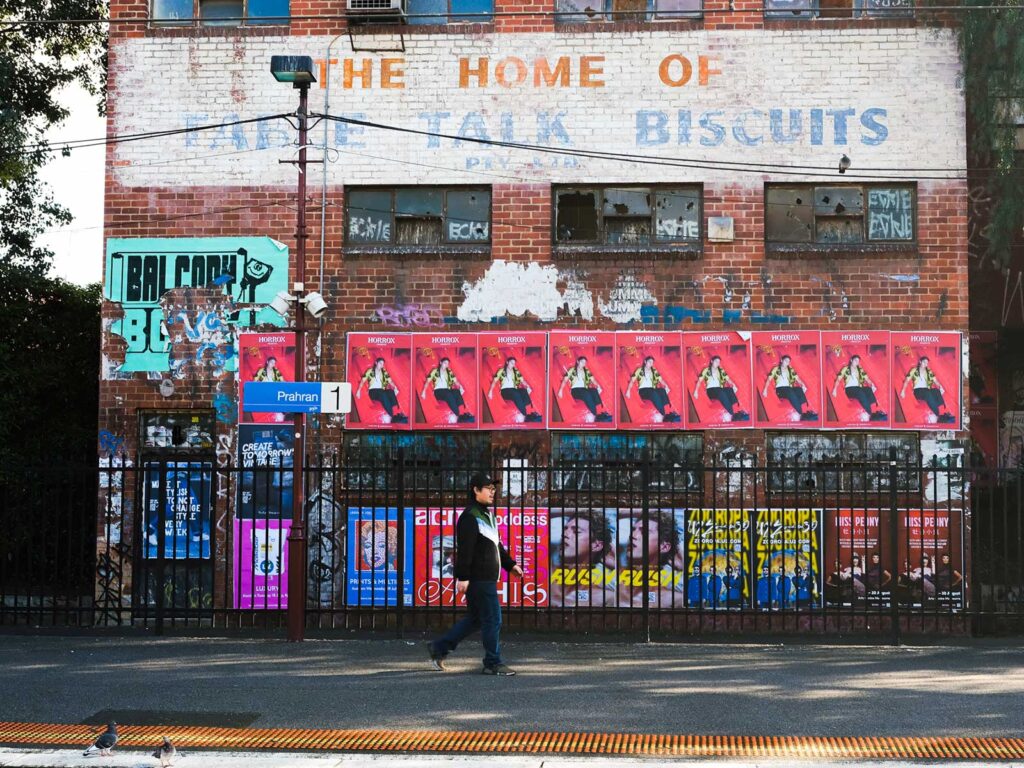
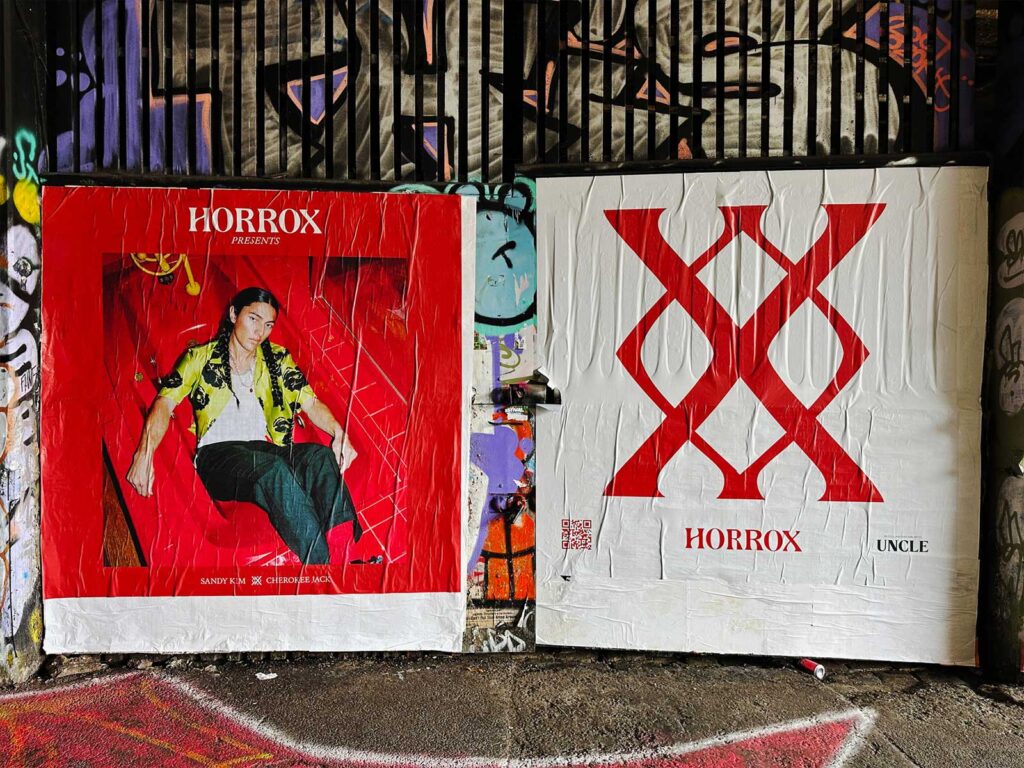

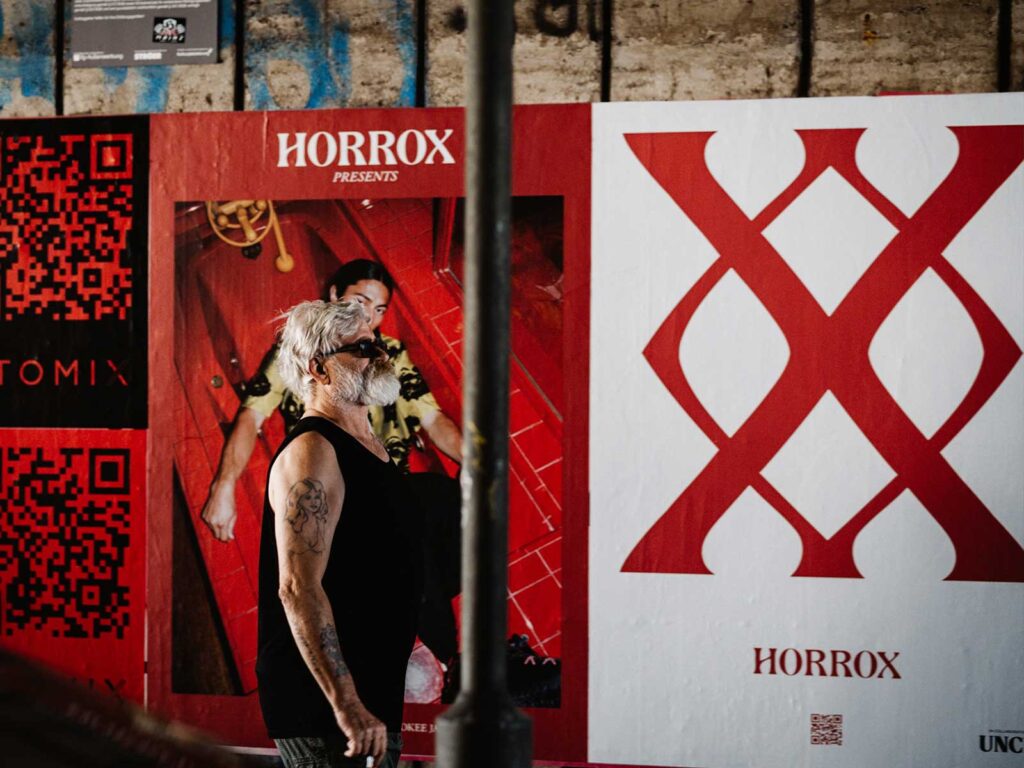

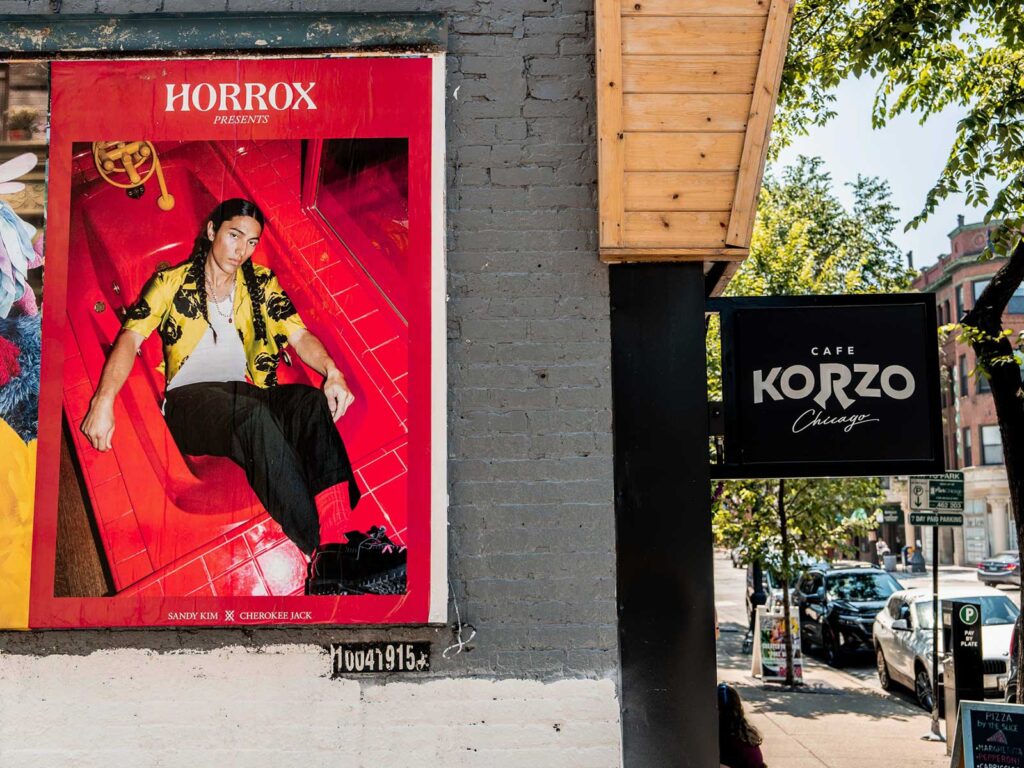
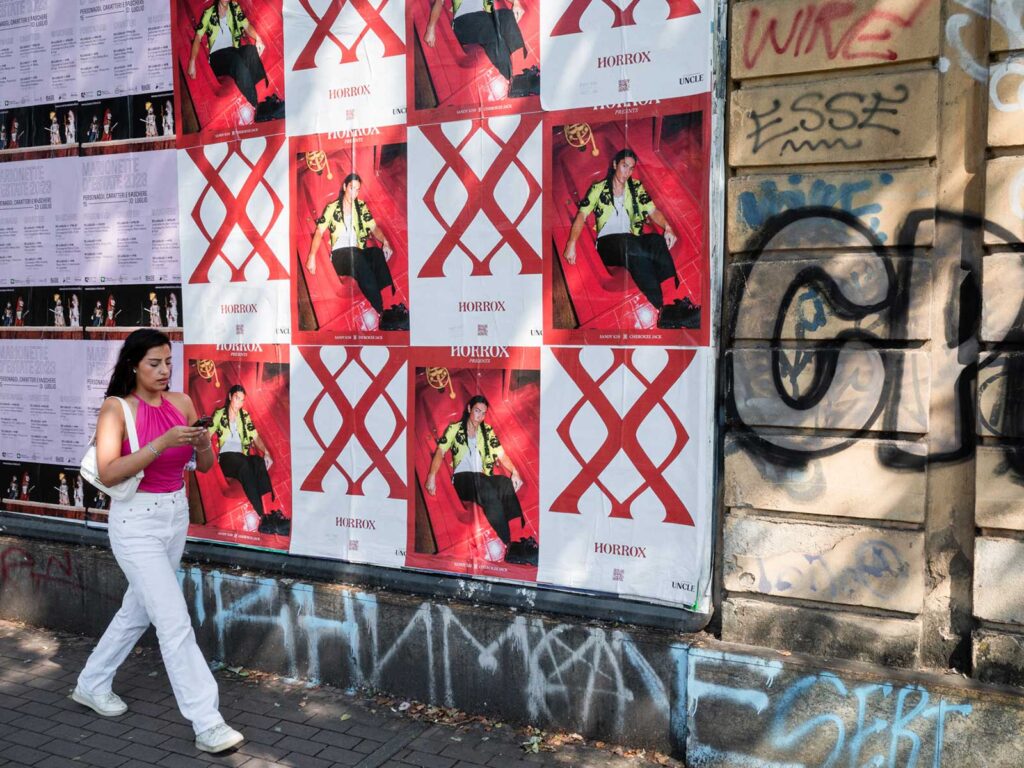


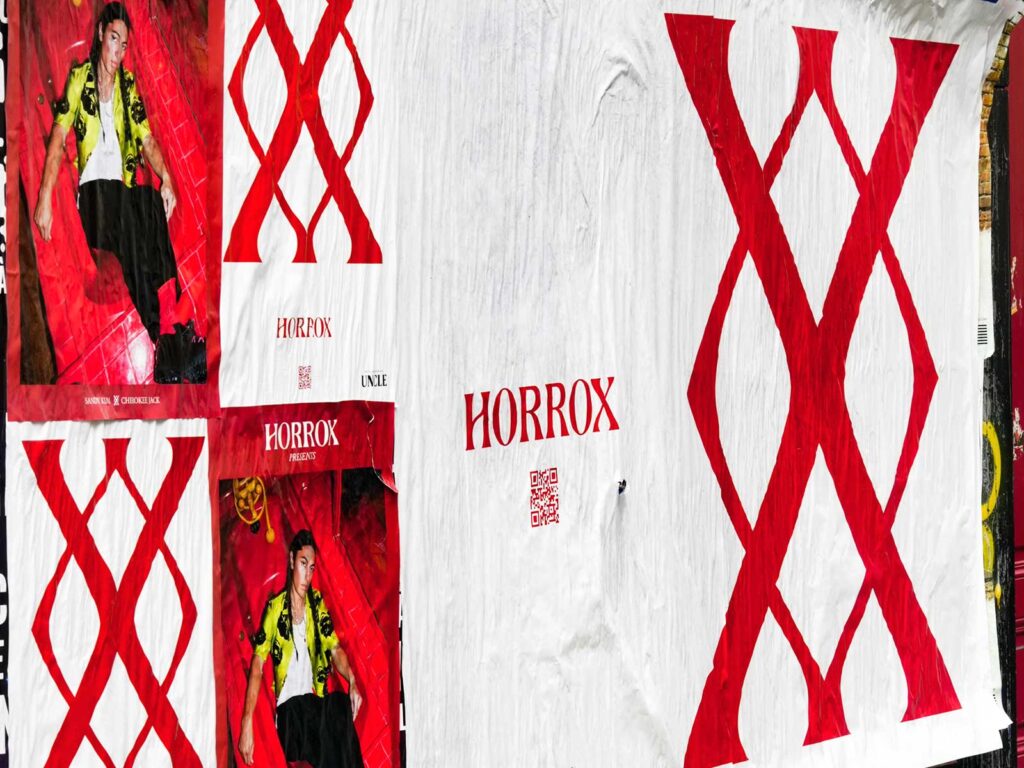
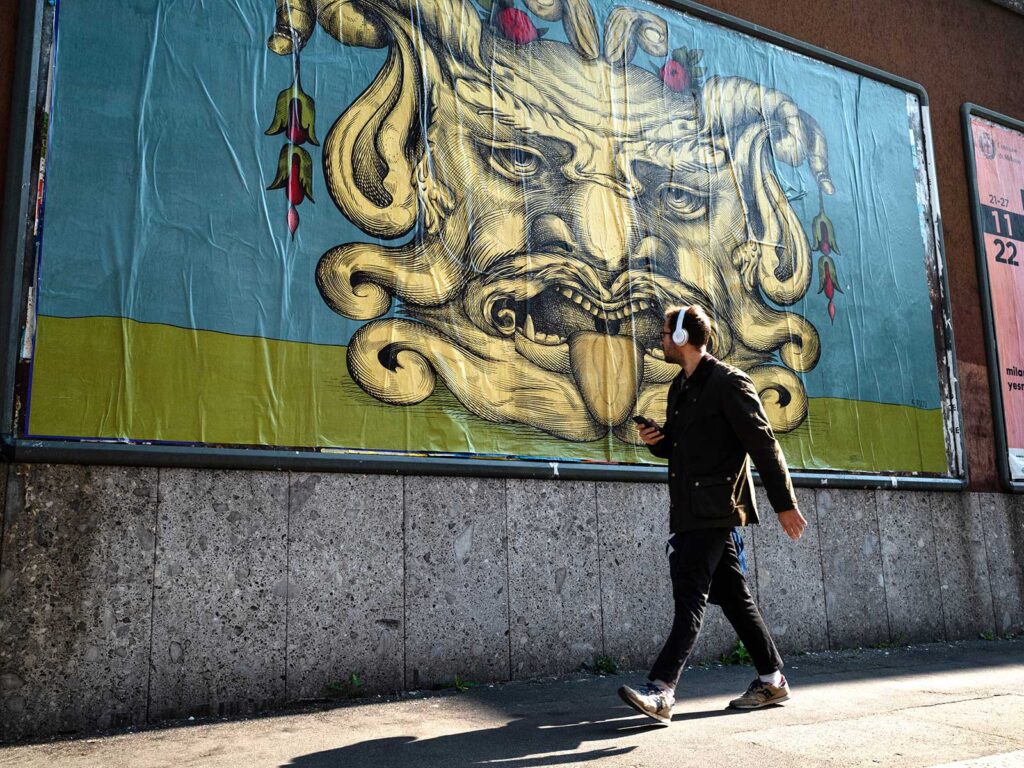
UNCLE è entusiasta di collaborare con lo street artist italiano Andrea Casciu. Le sue immagini audaci, fantastiche, a volte chimeriche, sempre intriganti, sono un piacere per gli occhi, ma è anche arte che può stuzzicare la curiosità degli spettatori a causa delle sue qualità all’apparenza soprannaturali. Splendidamente reso su molti muri urbani in tutta Italia e oltre, Casciu lancia un incantesimo visivo agli spettatori. Grafica audace, elementi figurativi chiaramente “leggibili” – volti, oggetti, animali e loro combinazioni – esercitano uno straordinario potere di attirare l’attenzione ma allo stesso tempo ci sono allusioni enigmatiche a storie, fiabe e miti. La chiarezza lineare netta, in bianco e nero, simile a una xilografia, è anche accompagnata da un uso giudizioso del colore. Una cosa è certa, non puoi ignorare il lavoro seducente e sorprendente di Casciu per strada.
Allora, cosa combina l’artista a Milano? Maschere giganti, ecco cosa. Paurose e sontuose, grottesche color oro ardente scuro, più grandi di qualsiasi passante, sbirciano dalle mura della città. Sin dai tempi antichi, la pratica di avere sculture grottesche a guardia della propria abitazione è stata diffusa in varie culture. Queste rappresentazioni, spesso intimidatorie, avevano lo scopo di tenere lontani gli spiriti ostili. Cioè, si credeva che avessero una funzione “apotropaica”, che tradotto dal greco significa “allontanare” e si riferisce a simboli, rituali e oggetti che dovrebbero respingere le influenze del male.
Per questo vengono utilizzate rappresentazioni fantasiose di vario genere (mostri, creature leggendarie, divinità, ecc.) a scopo protettivo e superstizioso.
Etruschi, Greci e Romani erano soliti adornare gli architravi di porte e finestre delle loro abitazioni con queste figure, fungendo da potenti guardiani in grado di creare una barriera contro eventuali forze malevole.
“La tradizione di utilizzare maschere apotropaiche/grottesche contro la malasorte ha viaggiato nei millenni, dimostrandosi uno dei retaggi pagani che sopravvivono ancora oggi. Nel medioevo, molti borghi si dotarono di enormi mascheroni che caratterizzavano il vertice dell’arco di entrata della città, inoltre ancora oggi teste apotropaiche sono numerosissime in portoni e finestre di case, palazzi e chiese.“
– Andrea Casciu
Il trio di personaggi simili a gargoyle su larga scala di Andrea Casciu che appaiono per le strade di Milano promette di essere un contributo favoloso, strano e meraviglioso al paesaggio urbano.
L’INTERVISTA DI UNCLE A ANDREA CASCIU
COSA TI FA ALZARE DAL LETTO LA MATTINA?
Mi rispecchio a pieno nel famoso detto “La mattina ha l’oro in bocca”, e quindi; sveglia presto, caffè e via, si inizia a lavorare. La mattina per me è molto importante perché lavorativamente produco parecchio.
QUALI SONO I TUOI PRIMI RICORDI DI QUANDO TI SEI SENTITO COMPLETAMENTE ASSORBITO O “PERSO” NELLE ARTI VISIVE?
Con tutta onestà non saprei di preciso, da ragazzetto ricordo un viaggio fatto a Barcellona in cui al Museo Mirò, rimasi rapito davanti una sua opera gigantesca fatta di tessuti e lana, a pensarci bene pareva un grande murale materico.
CHI E/O COSA DIRESTI HA AVUTO UN’INFLUENZA SIGNIFICATIVA SULLE TUE OPERE? UN’ARTISTA IN PARTICOLARE O QUALSIASI ALTRA CREATIVITÀ CHE TI ABBIA COLPITO.
Ci sono molti artisti che hanno influenzato il mio percorso artistico, andando per gradi il primo fu Picasso, poi arrivò Bacon, nell’aspetto grafico il grande Andrea Pazienza e dalle prime esperienze nate nelle lezioni di incisione arrivarono Stanis Dessy (grande incisore sardo), i fiamminghi e i tedeschi del Quattrocento e del Cinquecento, primo fra tutti Albrecht Dürer.
IL LINGUAGGIO VISIVO CHE UTILIZZI SPESSO RICORDA LA STAMPA XILOGRAFICA, QUAL È L’ATTRAZIONE DI QUESTA TECNICA PER TE?
L’attrazione principale per la xilografia arriva dal suo segno grafico, dalla sua semplicità visiva, dal colore; infatti sono fortemente attratto dal bianco e nero, è un’arte che richiede molta precisione e a mio parere questo la rende particolarmente ipnotica, sia nella realizzazione che nella visione dell’osservatore.
PUOI PARLARCI UN PO’ DEI TEMI PRINCIPALI DELLA TUA ARTE?
Penso che uno dei temi ricorrenti del mio lavoro arrivi dalle rappresentazioni delle metamorfosi, le trasformazioni fisiche della natura in uomo o animale e viceversa, sono fonte di grande ispirazione. Per me è fondamentale lo studio di antichi testi illustrati, come ad esempio i bestiari e l’arte medievale, che con il loro immaginario hanno dato una notevole importanza alle raffigurazioni di miti e leggende, con una grande riproduzione e interpretazione di esseri fantastici.
C’È UN ELEMENTO MITOLOGICO IN MOLTO DI CIÒ CHE PRODUCI, COME PENSI CHE QUESTO VENGA PERCEPITO DALLE PERSONE CHE VEDONO LE TUE OPERE?
Le persone sono molto attente, spesso per strada, mentre si dipinge, capita di confrontarsi con i passanti, e spesso questi danno un’interpretazione dell’opera che non ti aspetti, molti capiscono benissimo il messaggio o gli elementi che rappresento, anzi, vanno ad interpretare in maniera molto lucida tematiche per loro sconosciute.
E PER QUANTO RIGUARDA L’ALLEGORIA O LA NARRATIVA, POTRESTI DIRE QUALCOSA SULLE STORIE CHE STAI RACCONTANDO ATTRAVERSO LA TUA ARTE?
Un’allegoria a cui ormai lavoro da parecchi anni è la funzione apotropaica di determinati soggetti, che spesso vengono raffigurati come maschere con il compito e la capacità di tenere a distanza e respingere gli influssi e gli spiriti maligni.
Molte civiltà antiche erano solite adornare architravi di porte e finestre delle loro abitazioni con questi mascheroni grotteschi, una sorta di potenti guardiani in grado di creare una barriera contro eventuali forze ostili.
Da nord a sud queste figure grottesche sono presenti ovunque, eredità di antichi popoli che credevano nel potere positivo delle maschere.
COME VEDI LO SVILUPPO DELLA TUA ARTE NEGLI ANNI A VENIRE SIA IN STRADA CHE NEL TUO STUDIO?
Sinceramente non saprei, è un periodo molto intenso per il muralismo, molti si chiedono dove e come progredirà questa corrente, sicuramente si sta evolvendo, staremo a veder
Un grazie gigantesco da parte di Uncle ad Andrea Casciu per il suo tempo e le sue eccezionali opere d’arte pubbliche.


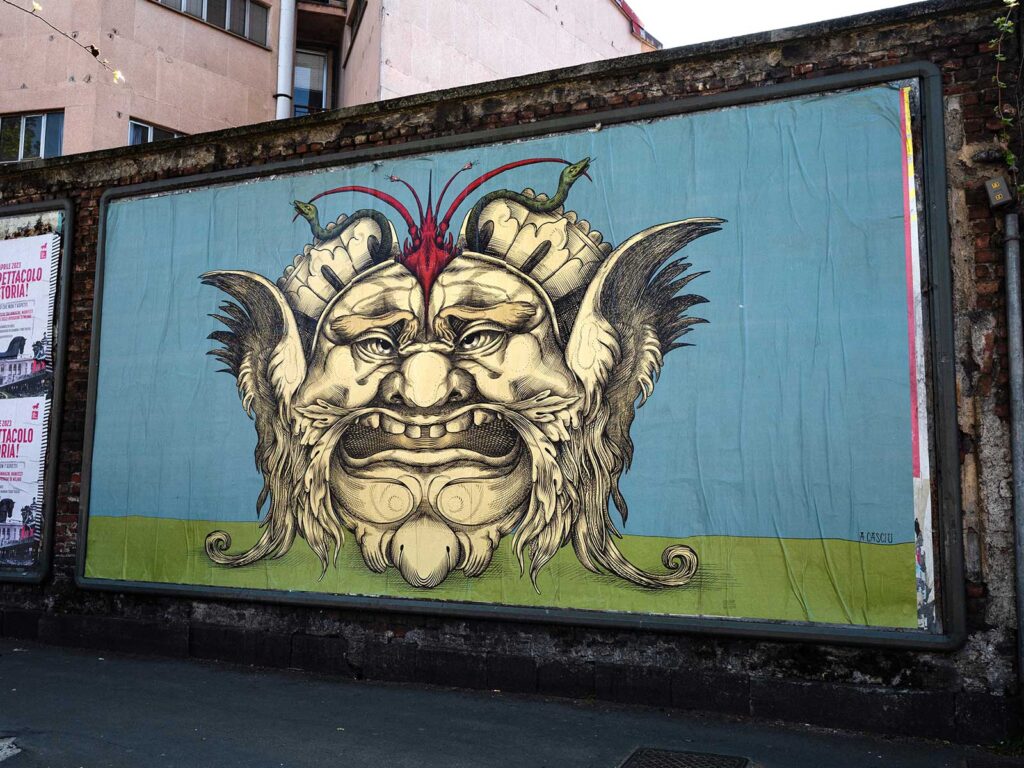
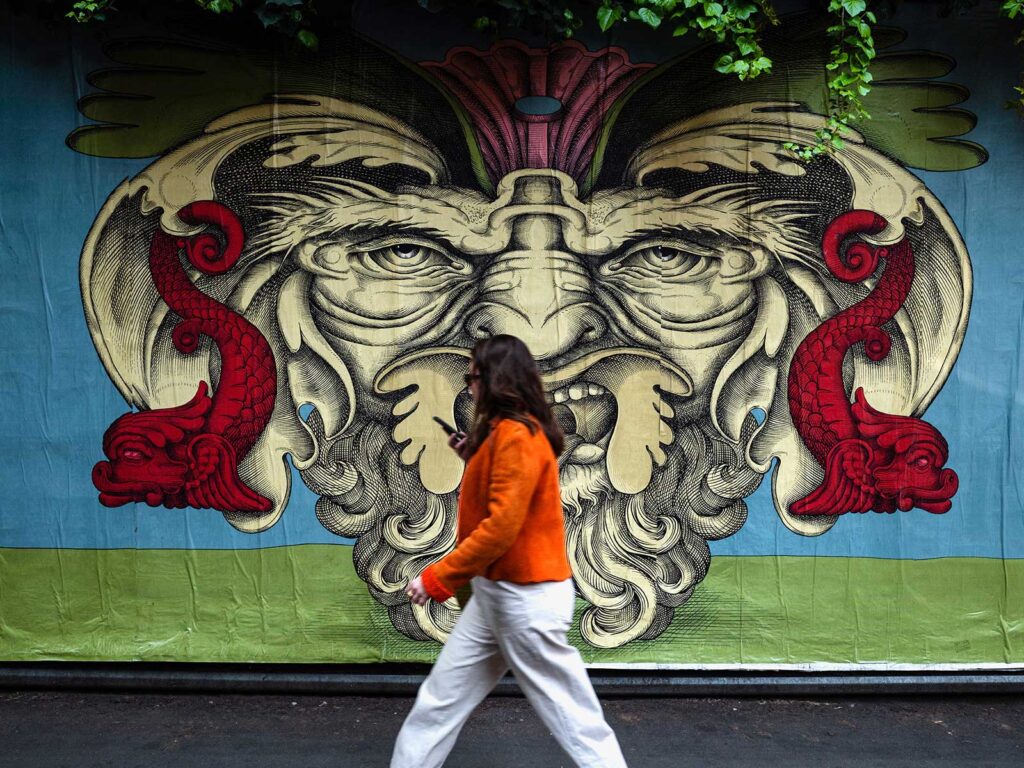
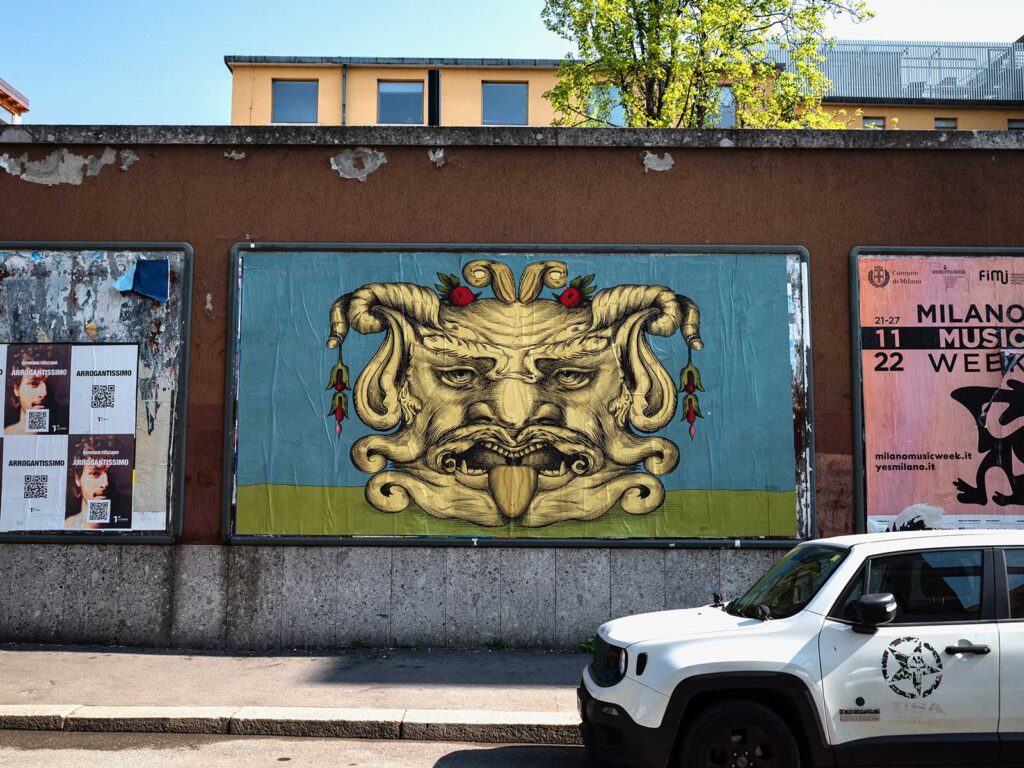
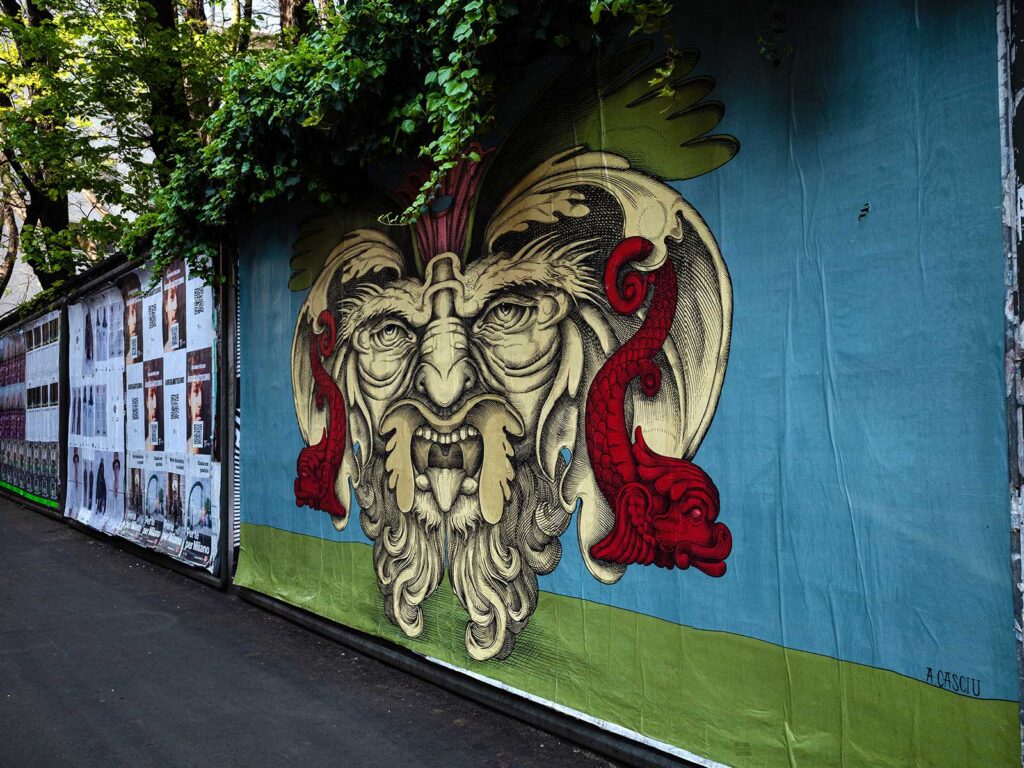
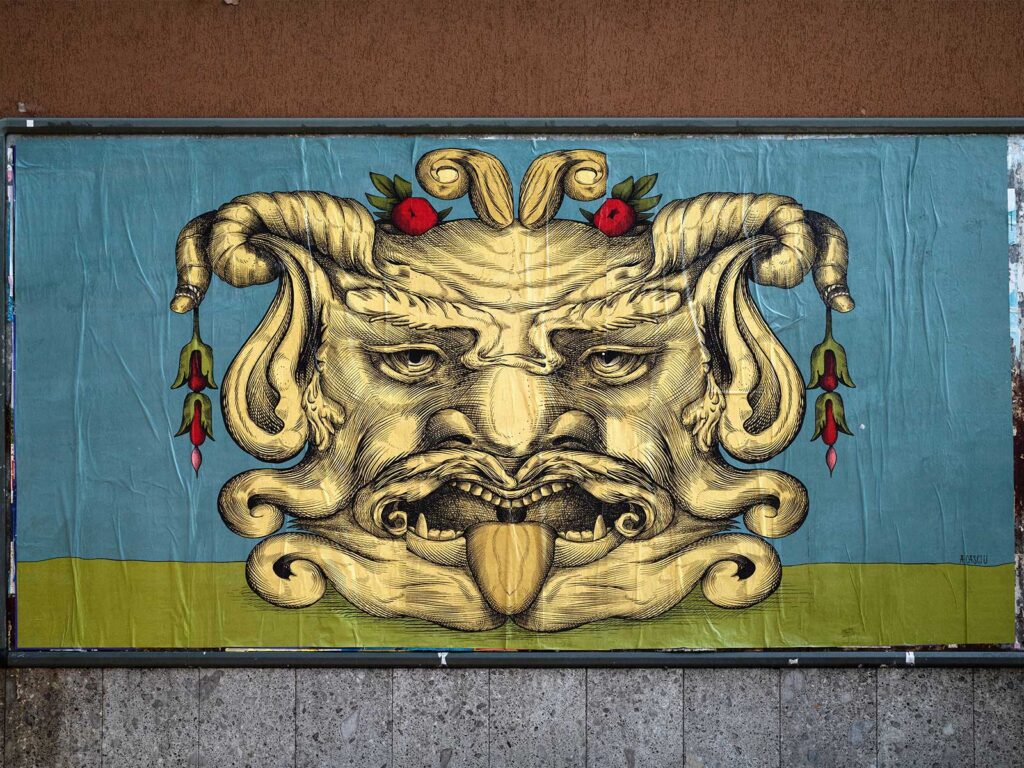
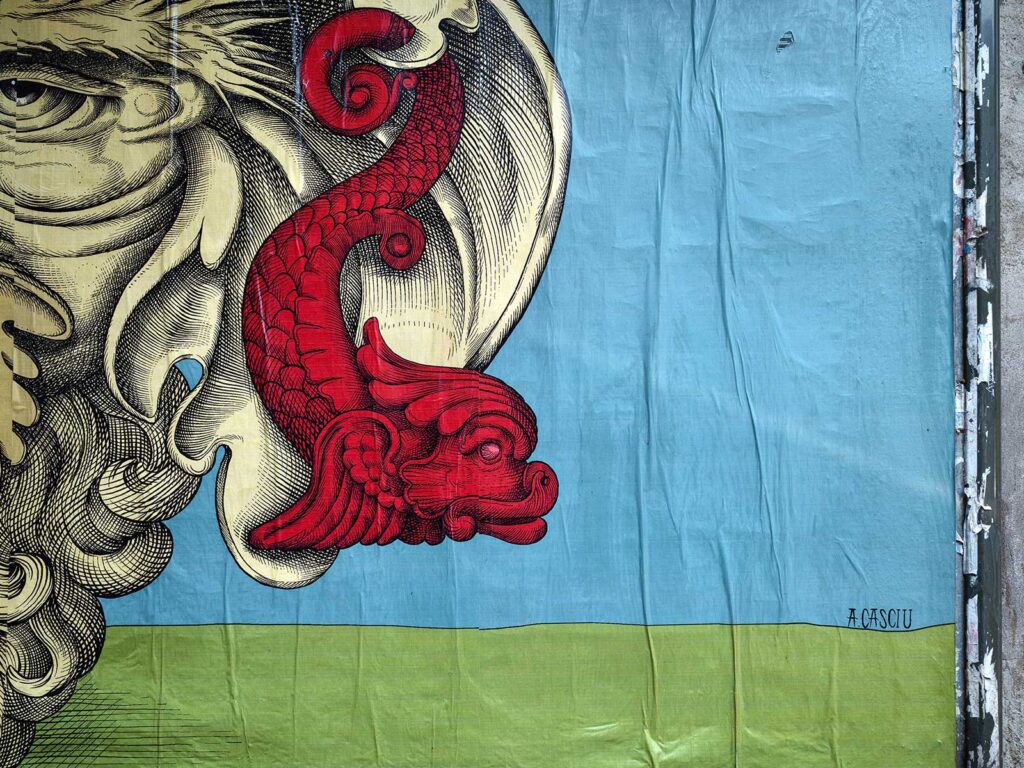

UNCLE are thrilled to be collaborating with Italian muralist and fine artist Andrea Casciu. His bold, fantastical, sometimes chimerical, always intriguing imagery affords both visual delight but it’s also work that can pique viewers’ curiosity on account of its seemingly supernatural qualities. Beautifully rendered on many an urban wall across Italy and beyond, Casciu casts a visual spell on viewers. Bold graphic, clearly ‘readable’ figurative elements – faces, objects, animals and combinations thereof – exert an extraordinary power to attract attention but at the same time there’s enigmatic allusions to stories, fairy tales and myth. The stark, black and white, woodcut-like linear clarity is also complimented by a judicious use of colour. One thing’s for sure, you can’t ignore Casciu’s enticing and striking work on the street.
So, what’s the artist up to in Milan? Giant masks, that’s what. Scary and sumptuous, dark burning gold-coloured grotesques, bigger than any passers-by, will peer out from city walls. Since ancient times, the practice of having grotesque carvings guarding one’s dwelling place has been widespread in various cultures. These, often intimidating representations, were intended to keep away hostile spirits. That is, they were believed have an ‘apotropaic’ function, which translated from the Greek means ‘to ward off’, and refers to symbols, rituals and objects that are supposed to repel evil influences.
This is why imaginative representations of various kinds (monsters, legendary creatures, gods, etc.) are used for protective and superstitious purposes.
Etruscans, Greeks and Romans used to adorn the lintels of doors and windows of their dwellings with these figures, acting as powerful guardians able to create a barrier against any malevolent forces.
“The tradition of using apotropaic/grotesque masks against bad luck has travelled through the millennia, proving to be one of the pagan legacies that still survive today. In the Middle Ages, the apex of many towns’ entrance arches featured prominent masks or grotesques to ward off evil. Still today numerous apotropaic heads can be seen in the doorways and windows of houses, palaces and churches: an architectural legacy of ancient peoples who believed in the positive power of masks.”
– Andrea Casciu
The trio of Andrea Casciu’s large scale gargoyle-like characters appearing on the streets of Milan promises to be a fabulous, weird and wonderful contribution to the cityscape.
WHAT GETS YOU OUT OF BED IN THE MORNING?
I embrace the famous saying, ‘The morning has gold in its mouth’. [An equivalent, perhaps less poetic English idiom is, ‘The early bird catches the worm’.] And so; I wake up early, coffee and off to work. The morning is very important for me because I produce a lot of work.
WHAT ARE YOUR EARLIEST MEMORIES OF WHEN YOU FELT COMPLETELY ABSORBED OR ‘LOST’ IN THE VISUAL ARTS?
In all honesty, I don’t know exactly. As a young boy, I remember a trip I made to Barcelona where, at the Miró Museum, I was enraptured by a gigantic work of his made of fabrics and wool, when I think about it, it looked like a large textured mural.
WHO AND/OR WHAT WOULD YOU SAY HAS HAD A SIGNIFICANT INFLUENCE ON YOUR WORK? A PARTICULAR ARTIST OR ANY OTHER CREATIVITY THAT HAS IMPRESSED YOU.
There are many artists who have influenced my artistic career, going step by step the first was Picasso; then came Bacon; from a graphic point of view the great Andrea Pazienza. And from the first experiences of engraving classes there was Stanis Dessy (a great Sardinian engraver); the Flemish and the Germans of the 15th and 16th centuries but first and foremost Albrecht Dürer.
THE VISUAL LANGUAGE YOU USE IS OFTEN REMINISCENT OF WOODCUT PRINTING, WHAT IS THE ATTRACTION OF THIS TECHNIQUE FOR YOU?
The main attraction for woodcuts comes from its graphic sign, its visual simplicity, its colour; in fact, I am strongly attracted to black and white, it is an art that requires a lot of precision and, in my opinion, this makes it particularly hypnotic, both in its making and in the viewer’s vision.
CAN YOU TELL US A LITTLE ABOUT THE MAIN THEMES OF YOUR ART?
I think that one of the recurring themes in my work comes from the representations of metamorphoses, the physical transformations of nature into man or animal and vice versa, are a source of great inspiration. For me, the study of ancient, illustrated texts, such as the bestiaries and medieval art, is fundamental, as their imagery gave great importance to depictions of myths and legends, with great reproduction and interpretation of fantastic beings.
THERE IS A MYTHOLOGICAL ELEMENT IN MUCH OF WHAT YOU PRODUCE, HOW DO YOU THINK THIS IS PERCEIVED BY PEOPLE WHO SEE YOUR WORK?
People are very attentive, often on the street, while you are painting, you happen to encounter passers-by, and they often give an interpretation of the work that you don’t expect, many understand the message or the elements that I represent very well, indeed, they go on to interpret in a very lucid way themes that are unknown to them.
WHAT ABOUT ALLEGORY OR NARRATIVE, COULD YOU SAY SOMETHING ABOUT THE STORIES YOU ARE TELLING THROUGH YOUR ART?
An allegory I have been working on for several years now is the apotropaic function of certain subjects, who are often depicted as masks with the task and ability to keep evil influences and spirits at a distance and repel them. Many earlier civilizations adorned the lintels of doors and windows of their dwellings with these grotesque masks, sort of powerful guardians able to create a barrier against any hostile possibilities. From north to south these figures can be found everywhere, the legacy of ancient peoples who believed in the positive power of masks.
HOW DO YOU SEE YOUR ART DEVELOPING IN THE YEARS TO COME, BOTH ON THE STREET AND IN YOUR STUDIO?
Honestly, I don’t know. It is a very intense period for muralism, many people wonder where and how this current will progress, it is certainly evolving, we will see how.
A huge thanks from UNCLE to Andrea Casciu for his time and outstanding public artworks.








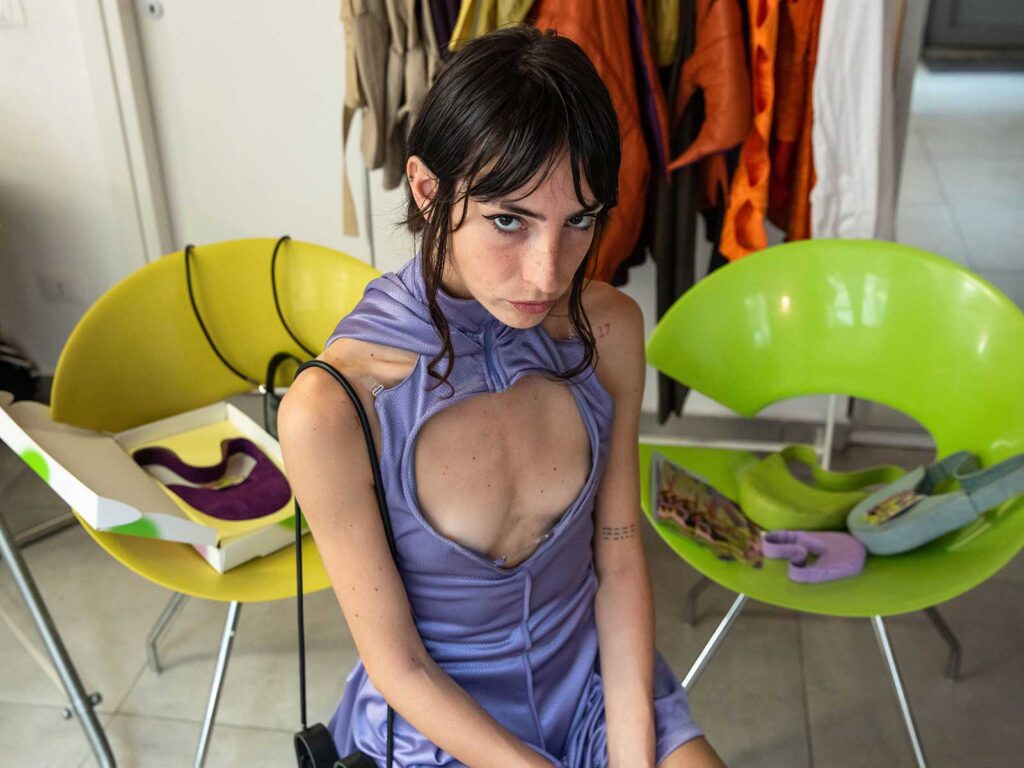
Milan has a new designer shaking up the emerging creative scene. With her dedicated approach to keeping her label sustainable and strictly made in Italy, Giorgia Andreazza represents everything positive about Milan’s next generation of talent. Born and raised in Italy, Andreazza got her start after moving to Milan to study fashion design at the New Academy of Fine Arts (NABA).
Going against the grain, Andreazza waited for no one when it came to launching her label. In fact, while most students release their first official collections as postgraduates, she debuted her first collection under her eponymous brand just a year into her studies. Yet despite her early start, she also managed to channel important messaging through her clothing, creating all her collections from entirely deadstock materials.
Her background also played an important part in her brand ethos. “Initially, my approach to the Made in Italy fashion industry came because of my family’s ties to it,” she explained. As the daughter of a textile shop owner, Andreazza has mastered the synergy of combining traditional Italian tailoring with revamped, dramatic and sensual silhouettes. “The label’s strong aesthetic is inspired by socio-cultural, environmental and political movements. Giorgiandreazza’s creations express the idea of an entity, not conforming or defined by a specific gender.” Breaking down the barriers of what is considered acceptable, Andreazza merges the old and the new, taking her influences from rave culture and 90s music and giving it a futuristic glow.
Most recently, Andreazza took Milan Fashion Week by storm, presenting her latest Spring Summer 2023 collection. Entitled ‘Drriinn Puppy’, she took pushed the barriers of what fashion can be to a new level, creating a collection around how fashion, art and music can coexist to create elevated pieces. Shown in a performance-art style presentation, each piece of clothing had the ability to create a sound and take Giorgiandreazza to new heights.
Off the back of her successful last presentation, Andreazza’s next steps are to take her proud Italian roots and talent to a more international market as she continues to expand her craft, noting that “the next step will be to consolidate this innovative concept and develop it in more than one direction”.
To celebrate the 400 posters of Andreazza’s collection we placed throughout her city, we also got to know more about her and her love for Milan below.
WHERE DO YOU FIND THE MOST INSPIRATION IN MILAN?
So much inspires me: everyday experiences; friends that bring back new ideas from their travels; evenings spent in places considered out of the norm and nights spent talking in bed with my boyfriend, making up surreal stories that then become solutions to real life problems.
In Milan I am inspired by what lies on the margins of the city, physically and metaphorically – monster truck shows, mini golf games at fun fairs, local neighbourhood festivals. Some would say these are the opposite of cool and inspiring. To me it is all about how you interpret those environments and experiences and transform them into something else.
WHAT DO YOU LOVE ABOUT MILAN?
I love Milan because it is where Giorgiaandreazza has started.
I love Milan because it has recognized and supported my vision and project.
I love Milan because I now feel at home here, truly accepted and fully integrated.
I love Milan because I am in Italy but, at the same time, I feel in close contact with the whole world.
I love Milan because, at times, by being exhausting, it pushes me to go abroad and experience different realities but then warmly welcomes me and my new ideas back.
I love Ortica, my neighbourhood, that with its creative energy has given birth to so many exciting encounters and artistic collaborations.
HOW WOULD YOU DEFINE YOUR LABEL?
All fabrics and materials used are deadstock from big brands and factories based in the North of Italy. Giorgiandreazza’s clothes are an expression of dynamism, a filtered observation of various art forms mixed with an attention to detail that is complex and borderline obsessive.
I love transformation and evolution and the result is a combination of deconstructed forms and shapes made with high quality Italian fabrics. For me, each piece must be truly special to the person wearing it and, for this reason, everything is totally handmade. Everything is made to order with a respect for a traditional made-to-measure tailoring seen through a more contemporary and sustainable lens.
WHAT’S NEXT FOR GIORGIAANDREAZZA?
The presentation of my new collection SS23 at Milan Fashion Week has been a huge step forward for both my growth as a designer and for my label. By collaborating with two music engineers, each piece in the collection has a ‘voice’ and you can hear sounds coming from the garments themselves. The next step will be to consolidate this innovative concept and develop it in more than one direction. Thanks to the great interest and support received at MFW, I am also planning to bring my label to a more international market.
HOW WAS YOUR FASHION JOURNEY IN MILAN SINCE YOU CAME TO STUDY?
My journey has been challenging, lived day by day with hesitations and fears that, at times, stopped me before I had properly started anything. My perception and interpretation of fashion hasn’t changed much since I first moved to Milan to study 8 years ago, but I now feel that I have a deeper understanding of it and made it more and more mine. My research process stems from my family’s tradition of bringing our garments and household items to flea markets. My vision of fashion therefore quickly becomes synonymous with a quest for the unique, for a hidden idea, whether I may be looking for it in flea markets or in deadstock fabric warehouses.
WHAT IS YOUR STARTING POINT WHEN DESIGNING A COLLECTION? WHAT INSPIRES YOU?
It all starts with emails titled ‘warehouse clearance’ from large factories in the North of Italy. Here I find deadstock fabric and materials of the highest quality for reasonable prices that I then proceed to study carefully. I discuss dying options with collaborators and I start to come up with graphics and print ideas to make these fabrics truly mine. What follows is some very ugly sketches that then become beautifully detailed drawings made with Pantone coloured pencils. The drawings are never quite finished – they keep on changing and they increase in numbers. I then make the pattern, put it on a mannequin and from there on ‘I love to play with my mistakes’. I make, I disassemble, I modify, I cut, I dismember and finally I get to something that is totally different from what I started with. When I am amazed at something I have not noticed or expected, only then, I would consider a piece finalised and ready.
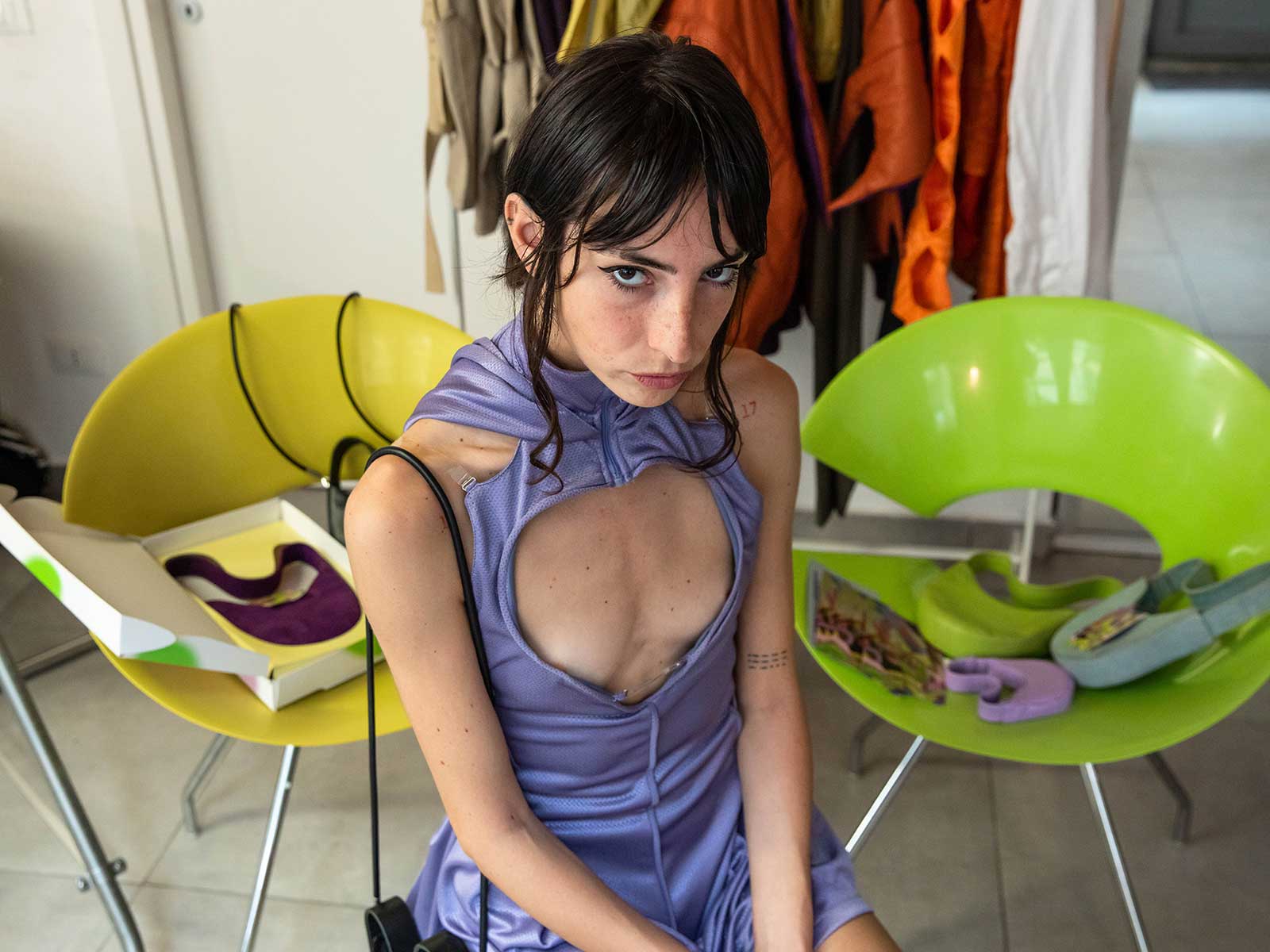
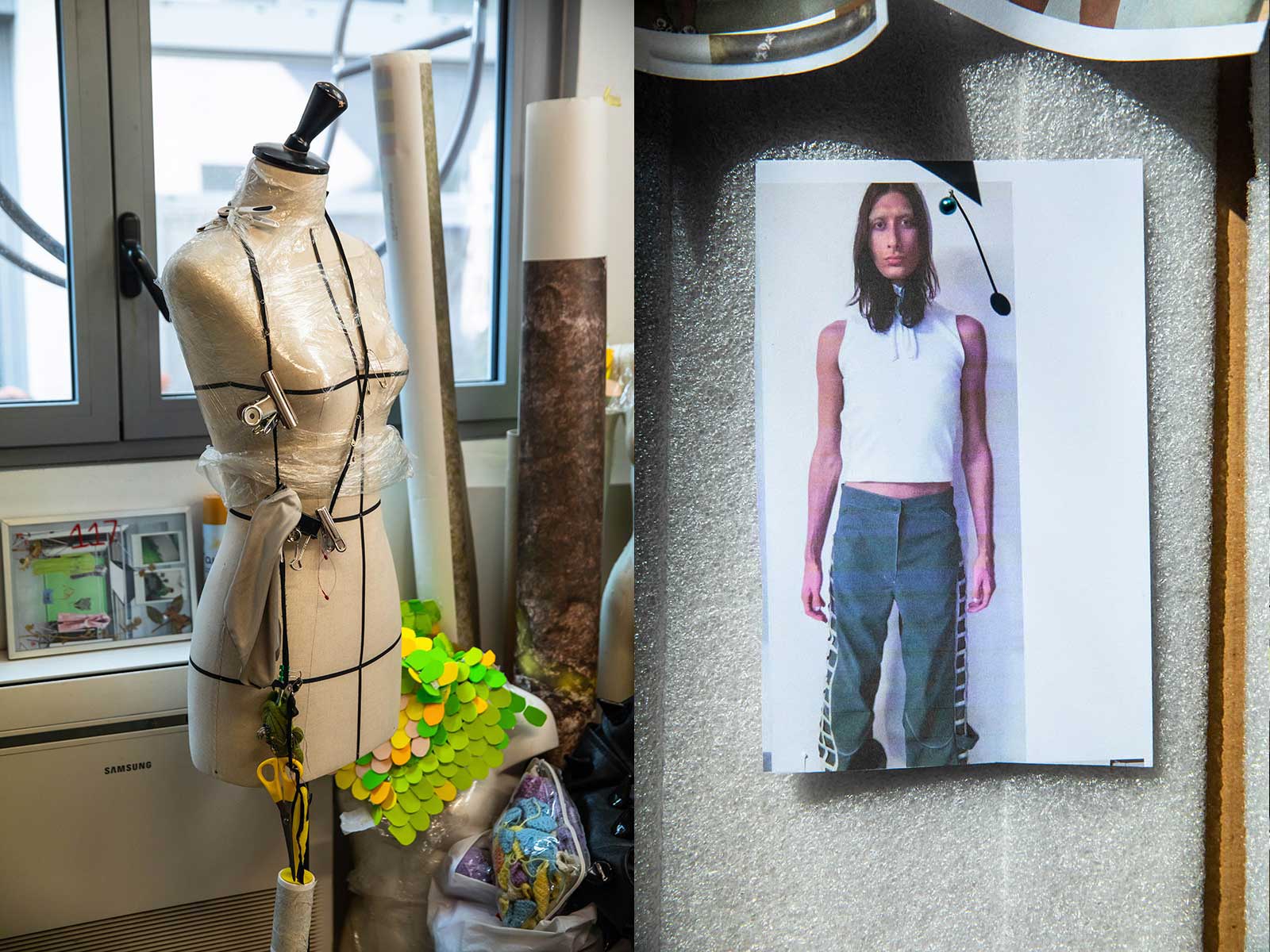
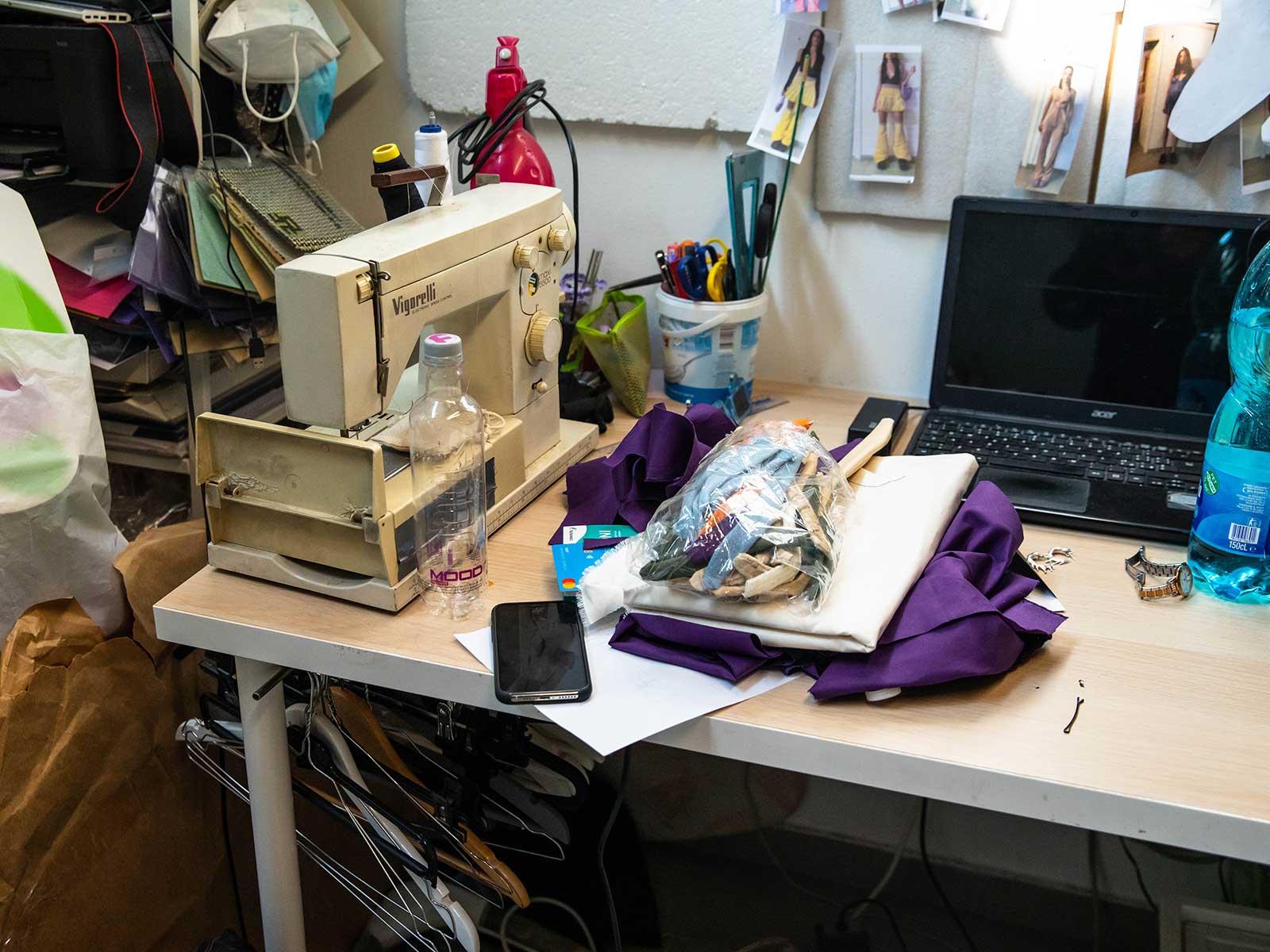
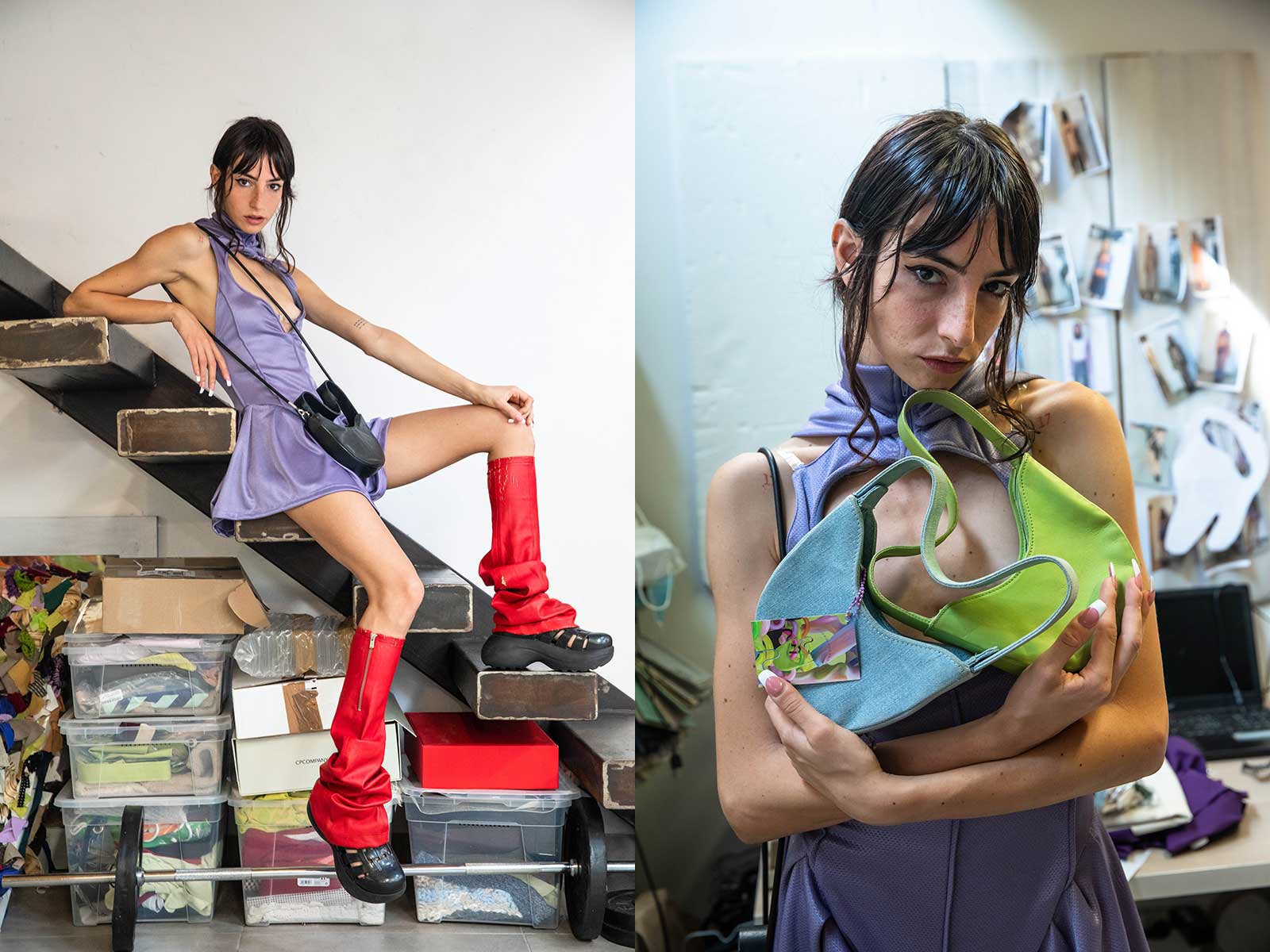

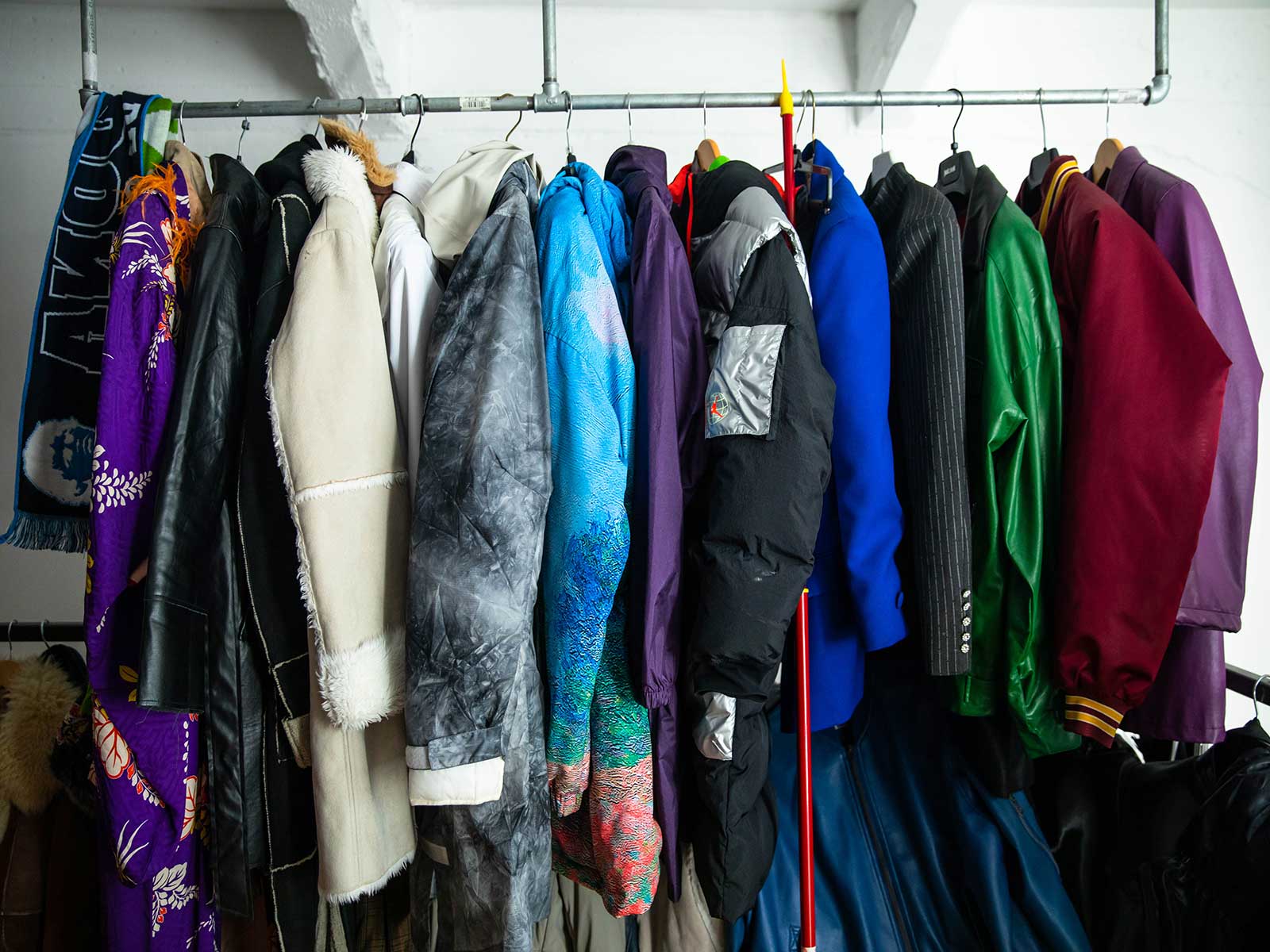
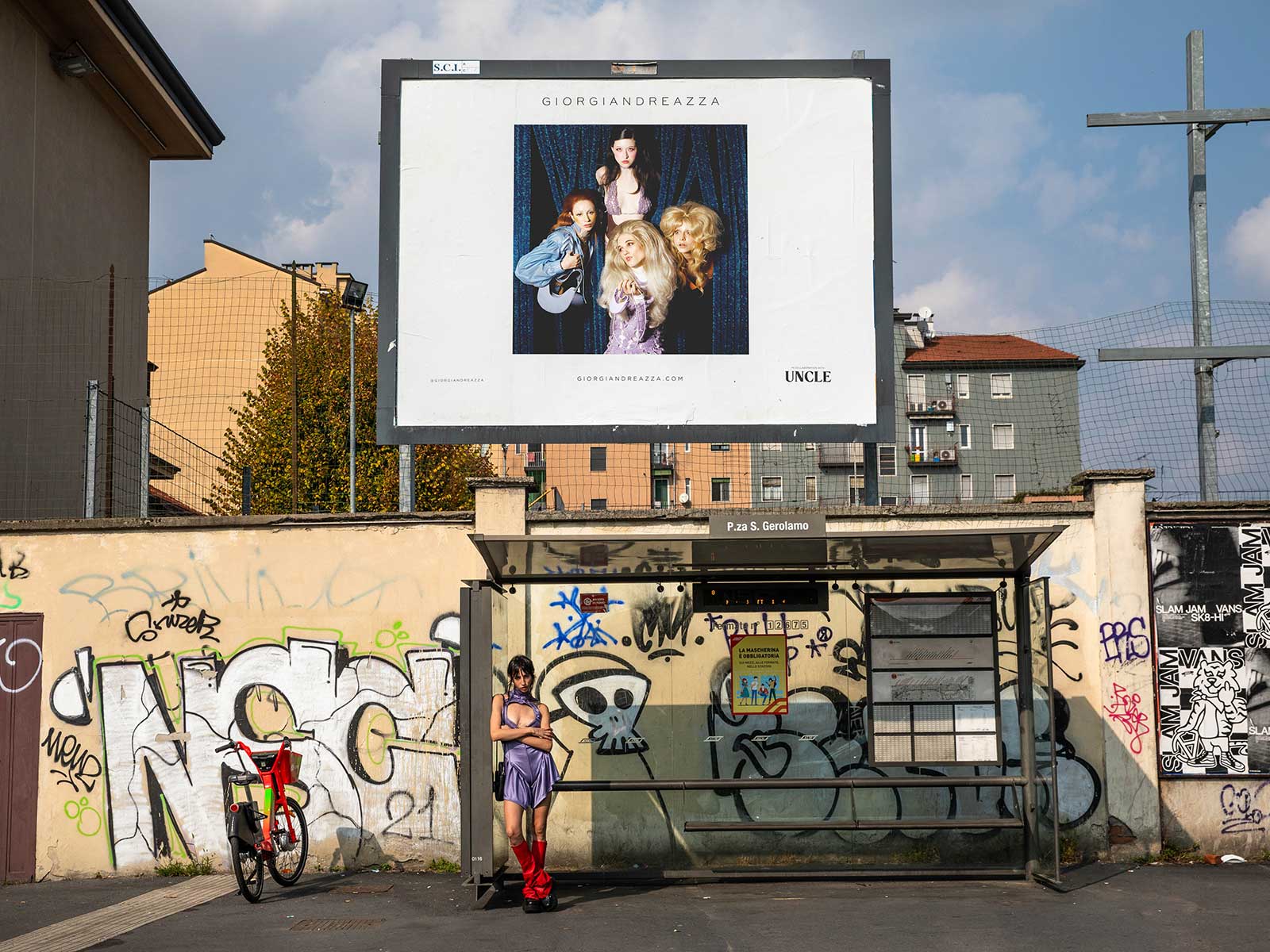

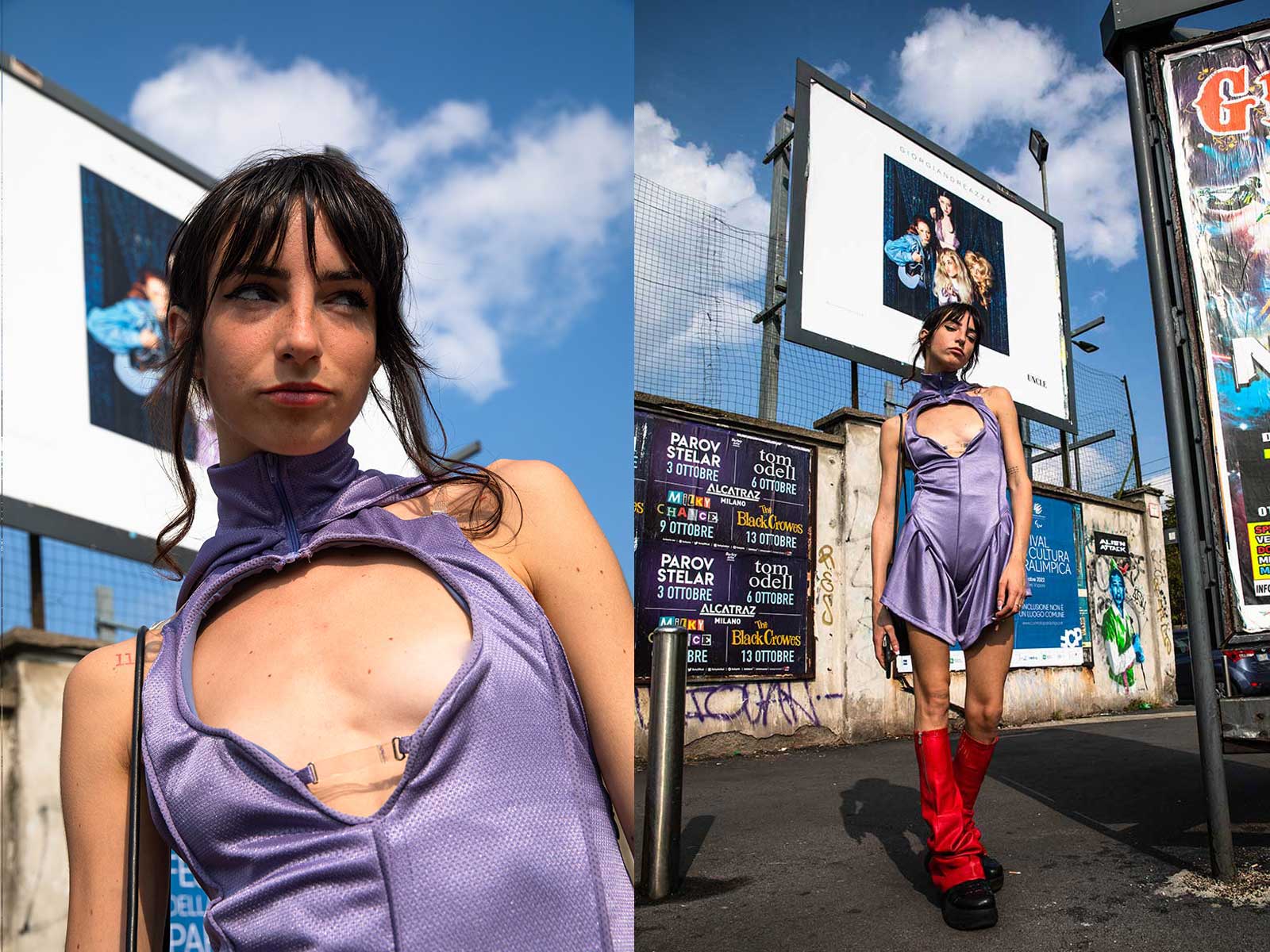
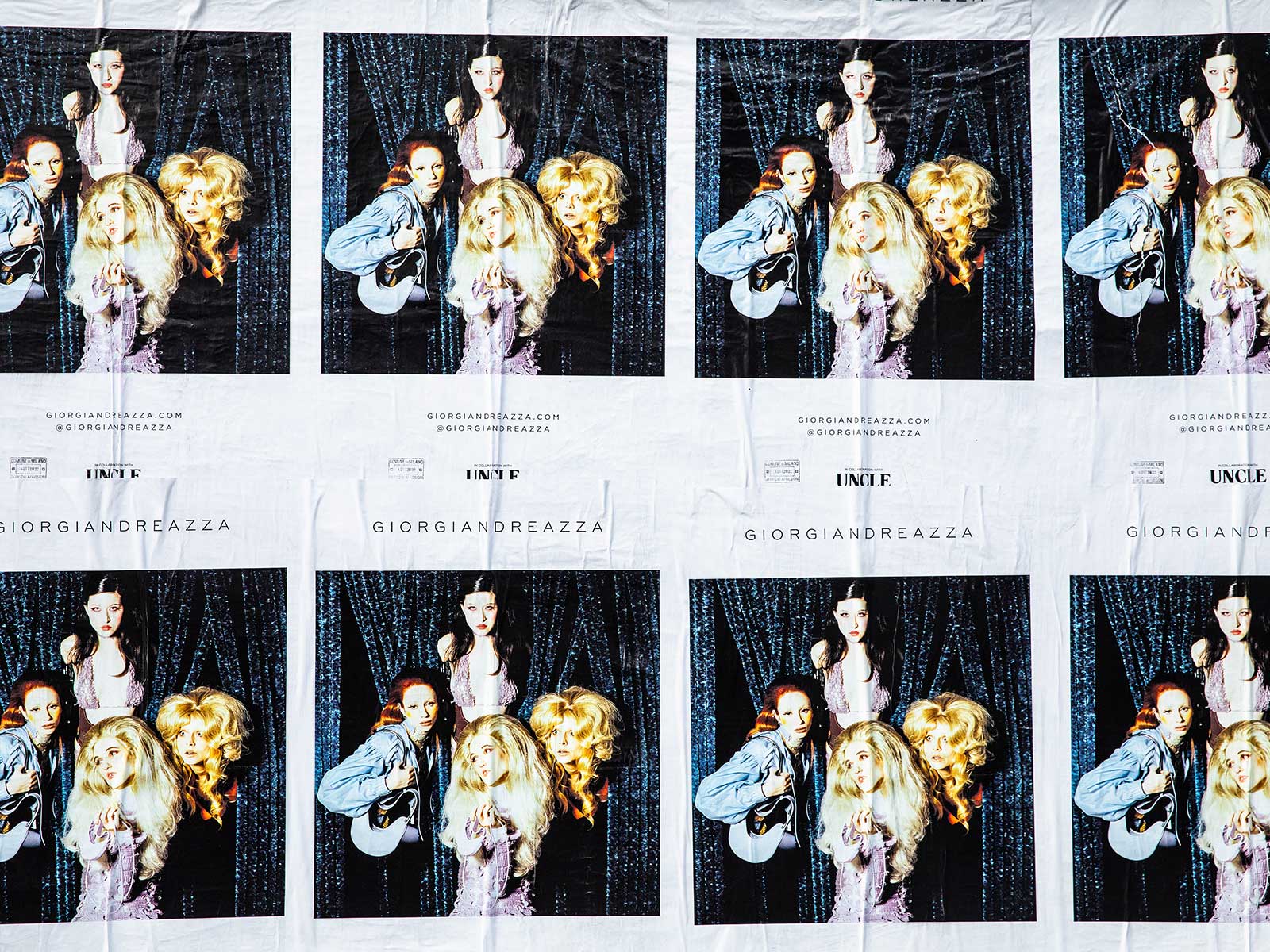
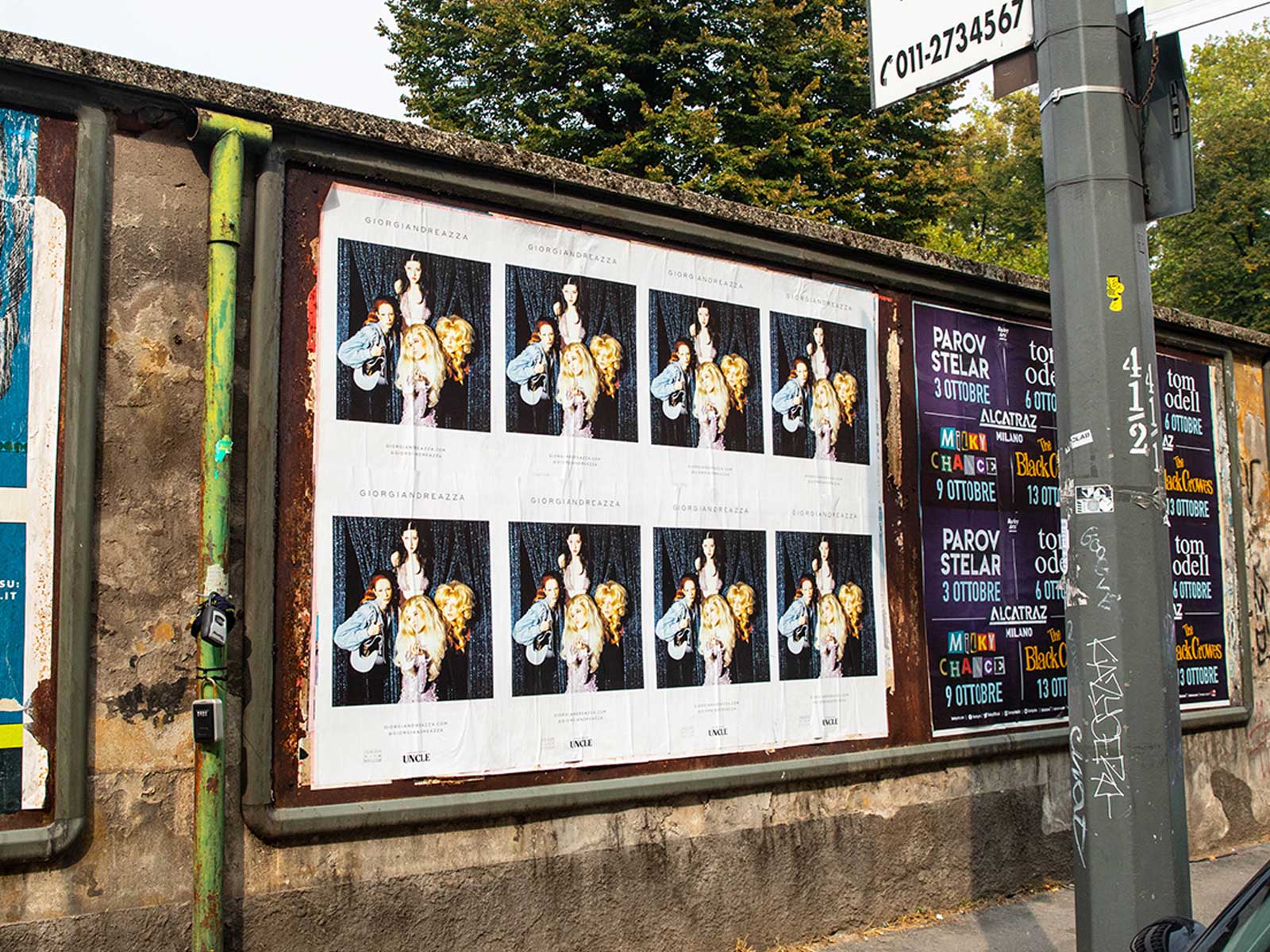
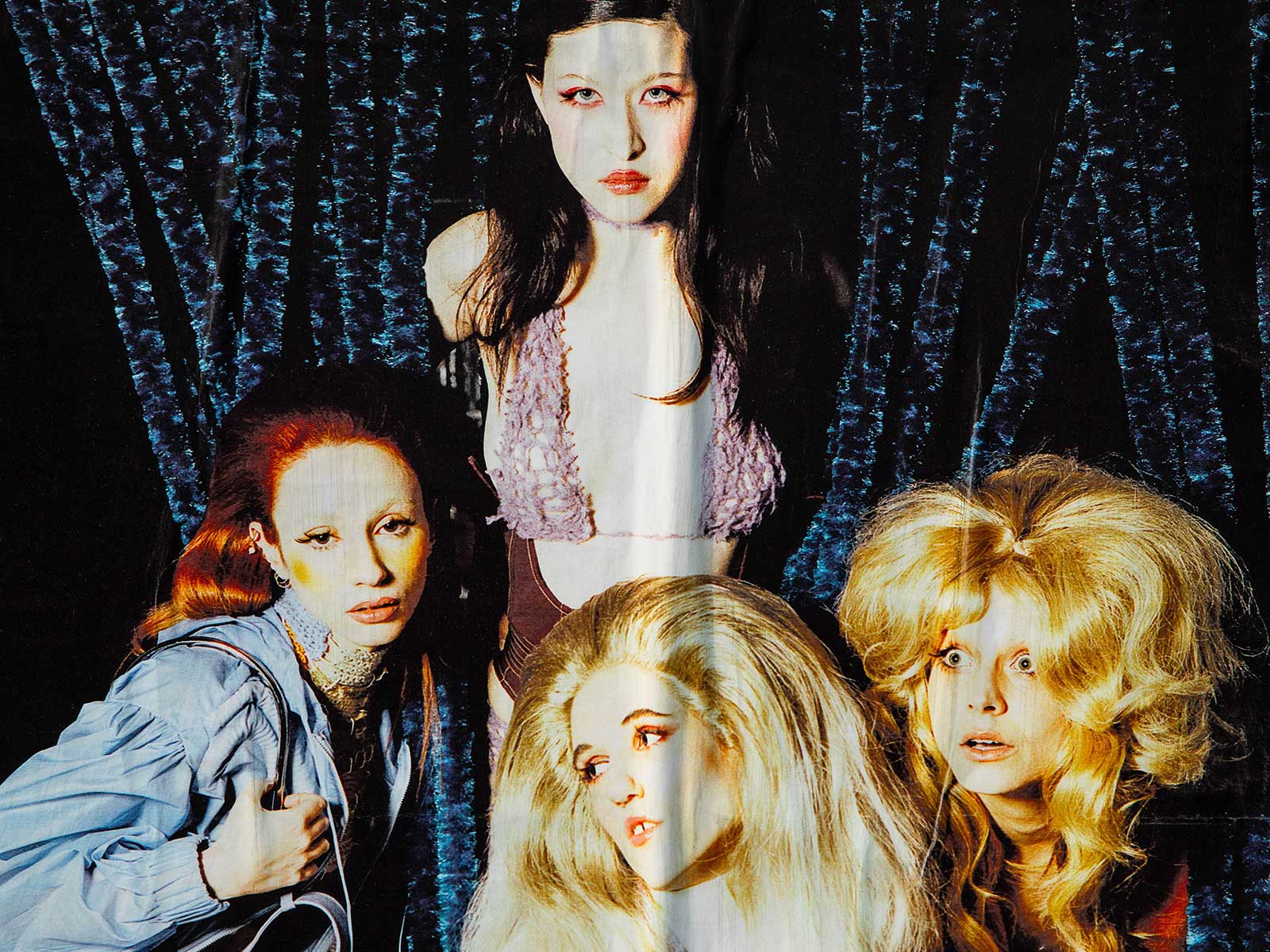

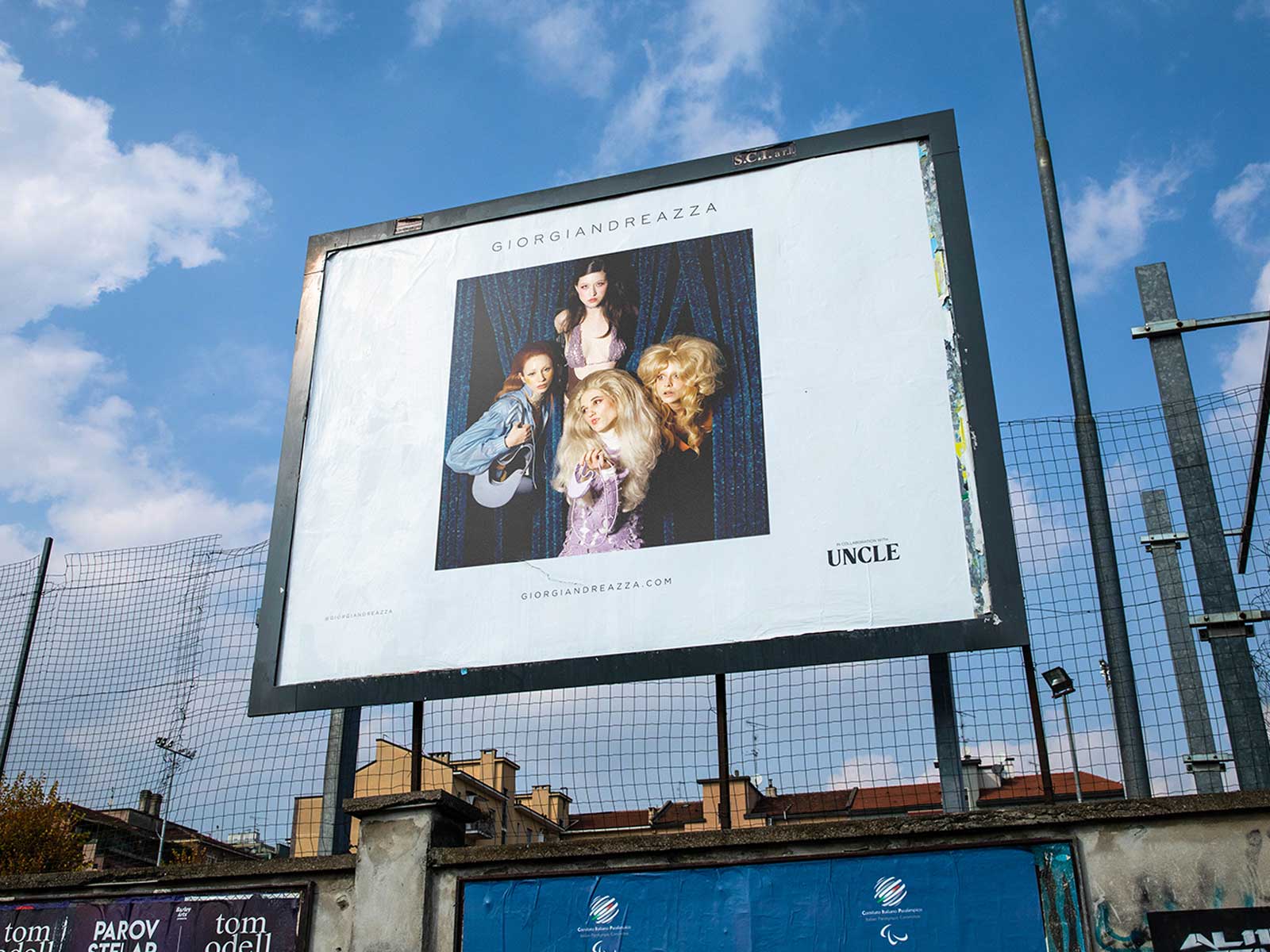
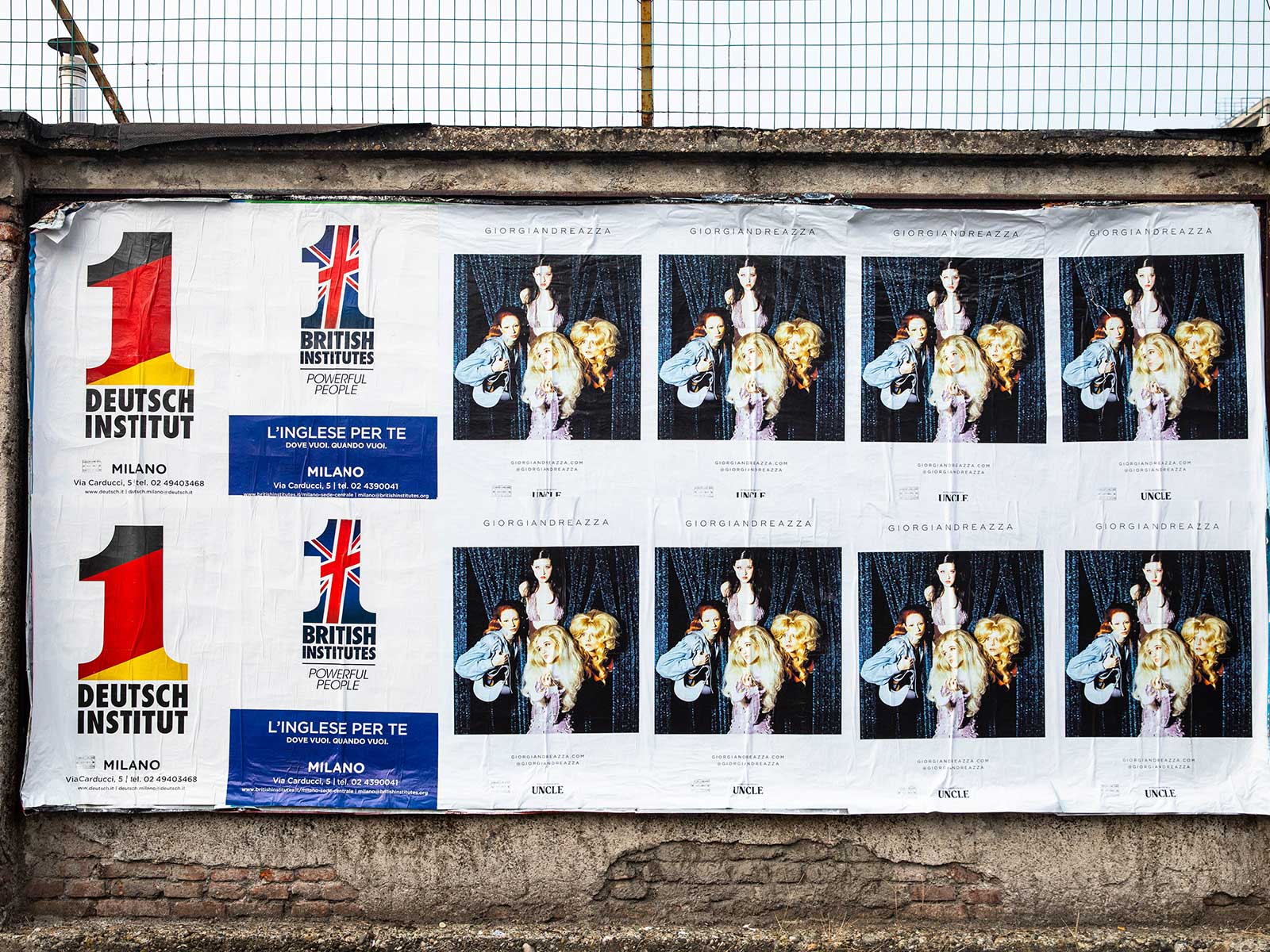

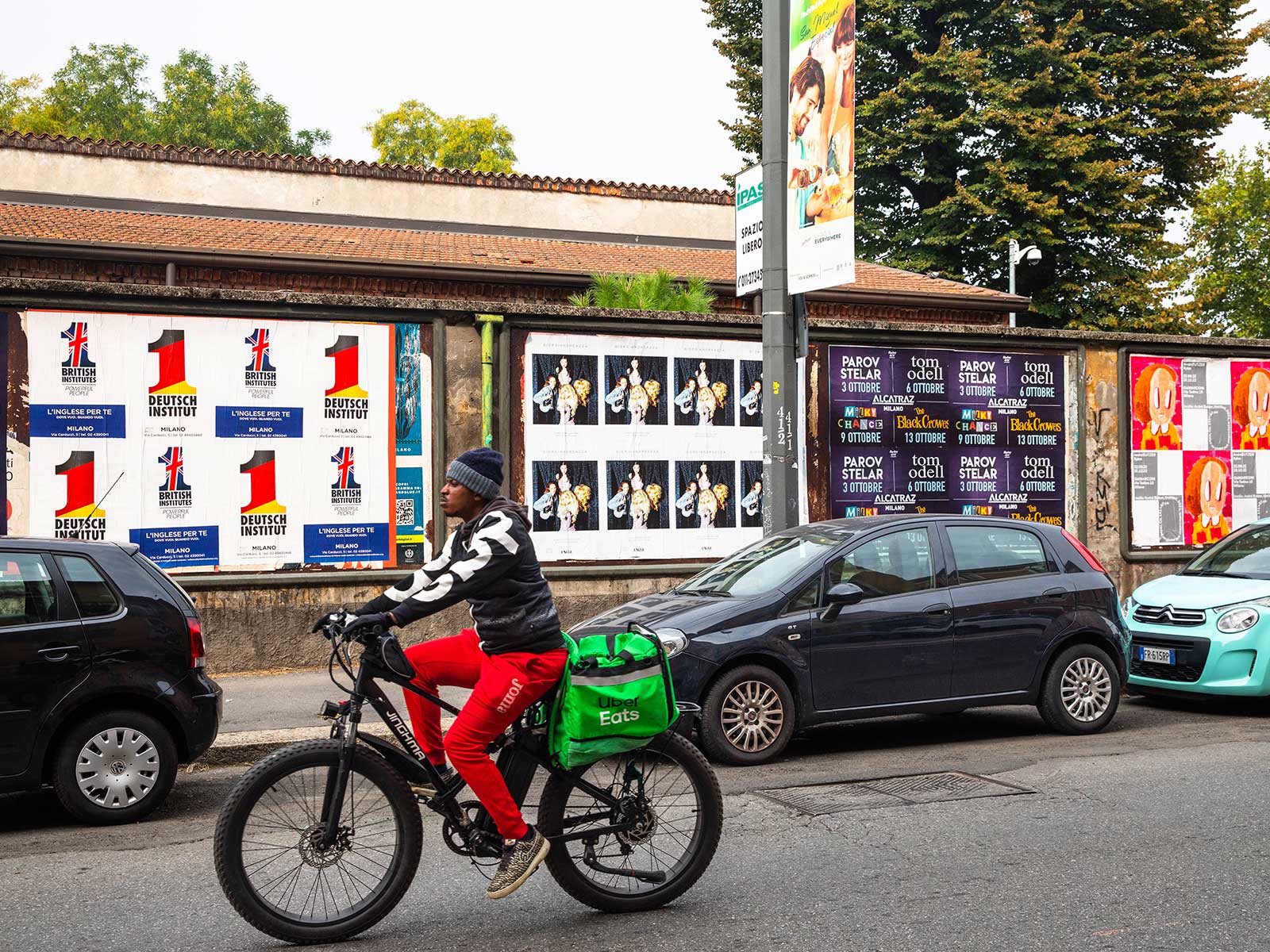

Milano ha una nuova designer che sta dando una smossa all’ emergente scena creativa. Con il suo approccio, volto a mantenere la sua etichetta sostenibile e rigorosamente Made in Italy, Giorgia Andreazza rappresenta tutto ciò che di positivo si può trovare nella nuova generazione di talenti milanesi. Nata e cresciuta in Italia, Andreazza ha iniziato la sua etichetta dopo essersi trasferita a Milano per studiare fashion design alla Nuova Accademia di Belle Arti (NABA).
Andando controcorrente, Andreazza non ha aspettato e, invece di lanciare la sua etichetta una volta terminati gli studi come si usa, ha fatto debuttare la sua prima collezione con il marchio omonimo appena terminato il primo anno di studi.
Nonostante questo suo inizio precoce, è riuscita a trasmettere messaggi importanti attraverso i suoi capi, creando tutte le sue collezioni usando esclusivamente materiali di scarto.
Anche le sue origini hanno un ruolo importante nell’identità del suo marchio. “Inizialmente, il mio approccio all’industria della moda Made in Italy è nato dai legami della mia famiglia “, ha spiegato. Come figlia del proprietario di un negozio di tessuti, Andreazza ha imparato la sinergia di combinare la tradizionale sartoria italiana con silhouettes rinnovate, drammatiche e sensuali. “L’estetica forte della mia etichetta risale a ispirazioni socioculturali, situazioni ambientali e movimenti politici. Le creazioni di Giorgiandreazza esprimono un’idea che descrive entità, non un sesso preciso”. Abbattendo le barriere di ciò che è considerato accettabile, Andreazza fonde il vecchio e il nuovo, traendo le sue influenze dalla cultura rave e dalla musica degli anni ’90 e dando loro un bagliore futuristico.
Più di recente, Andreazza ha preso d’assalto Milan Fashion Week, presentando la sua ultima collezione Primavera Estate 2023. Intitolata ‘Drriinn Puppy‘, ha spinto le barriere di ciò che la moda può essere a un nuovo livello, creando una collezione dove moda, arte e musica possono coesistere nel creare capi di altissima qualità. Nella collezione, presentata in stile performance art, ogni capo aveva la capacità di creare un suono e di portare Giorgiandreazza a raggiungere nuove vette.
Sulla scia di successo di questa ultima presentazione, il prossimo step di Andreazza sarà di portare le sue orgogliose radici e talento italiani in un mercato internazionale mentre continuerà ad espandere la sua arte in cui “il prossimo passo sarà consolidare questo concetto geniale di vestiti che producono suoni e proporlo in un linguaggio diverso”.
Per celebrare i 400 poster della collezione di Andreazza che abbiamo affisso in tutta la città, abbiamo anche avuto modo di saperne di più su di lei e sul suo amore per Milano qui di seguito.
DOVE TROVI L’ISPIRAZIONE A MILANO?
Trovo ispirazione dalle mie esperienze; dai miei amici che a loro volta viaggiano e riportano con sé idee; dalle serate nei posti non spesso così conformi; prendo ispirazione nel letto a parlare per ore con il mio ragazzo, inventiamo spesso storie surreali che si trasformano in soluzioni. Di Milano prendo ispirazione dai margini, frequento spettacoli di monster truck, vado al minigolf al Lunapark e alle sagre, dite che è un po’ da anziani basic? Beh, l’importante è poterle reinterpretare e rielaborare.
COSA AMI DI MILANO?
Amo Milano perché è la città che ha fatto sì che tutto ciò nascesse.
Amo Milano perché ha riconosciuto e supportato il mio progetto e visione.
Amo Milano perché mi sento ormai a casa, mi sento accettata e integrata.
Amo Milano perché sono in Italia ma sono a contatto con tutto il mondo allo stesso tempo.
Amo Milano perché mi fa stancare di Milano e mi spinge a fare esperienze all’ estero che mi fanno poi portare novità a Milano.
Amo la mia zona, Ortica, che con la sua energia artistica ha dato vita a mille incontri e collaborazioni.
COME DEFINIRESTI IL TUO MARCHIO?
Mi sono avvicinata al mondo della moda Made in Italy grazie alle mie radici familiari. L’estetica forte risale ad ispirazioni socioculturali, situazioni ambientali e movimenti politici
Le mie creazioni esprimono un’idea che descrive entità, non un sesso preciso. Tutti i tessuti e materiali provengono da stock rimanenze di grandi marche e fabbriche del nord Italia. Gli abiti si identificano con il dinamismo, spaziando dall’osservazione filtrata delle forme d’arte all’attenzione per i dettagli in modo complesso e maniacale. Amo il trasformismo e l’evoluzione e il risultato è un mix di forme destrutturate e tessuti italiani di alta qualità. È fondamentale per me dare valore aggiunto agli abiti; ogni modello infatti è completamente realizzato a mano, con produzione di famiglia come pezzo unico. Per questo gli abiti sono realizzati su ordinazione, nel rispetto del su misura, ma in versione più contemporanea.
QUALI SONO I PROSSIMI PASSI PER GIORGIANDREAZZA?
La presentazione della collezione ss23 durante Milan Fashion Week è stata uno step importante di crescita nel mio percorso dove finalmente il capo ha realmente voce. Ho creato con il supporto di due ingegneri del suono la possibilità di udire suoni dai vestiti stessi. Il prossimo step sarà quello di consolidare questo concetto geniale e proporlo in un linguaggio diverso. Poi, grazie al supporto, vorrei poter espandere le mie reti vendita per far sì che diventi sempre più un progetto internazionale.
QUAL È STATO IL TUO PERCORSO NEL MONDO DELLA MODA A MILANO DA QUANDO TI SEI TRASFERITA PER MOTIVI DI STUDIO?
È stata dura, vissuta giorno e per giorno, attimo per attimo con mille timori dove a volte ti fermavi prima ancora di iniziare. La mia percezione di moda da quando sono arrivata a Milano, circa otto anni fa per studiare, non è cambiata di molto ma l’ho solo consolidata e fatta sempre più mia. La mia ricerca nasce dalle abitudini familiari di portare i nostri capi e oggetti per la casa nei mercatini dell’usato. La mia visione di moda diventa in un secondo, nel cercare pezzi in mercatini di seconda mano, sinonimo di ‘unicità che ci contraddistingue’. Ora come allora quindi cerco tra mercatini, tra merce fallata e fine magazzino di grossi store per scovare nuove idee nascoste agli occhi di chi non osserva.
QUAL È IL TUO PUNTO DI PARTENZA QUANDO INIZI UNA NUOVA COLLEZIONE? COSA TI ISPIRA?
Inizia tutto con mail su mail di “sgombero magazzini” dalle grosse aziende per recuperare dei materiali e tessuti. Trovo nel nord Italia materiali di scarto di altissima qualità che per modifiche cifre prendo ed inizio ad analizzare. Contatto aziende per far tingere, studio grafiche e stampe per far diventare davvero miei questi tessuti di scarto. Il tutto diventa schizzi bruttissimi che in un secondo momento diventano disegni molto curati fatti a mano con colori a matita e Pantone e dove il numero di modelli è infinito e varia di continuo.
Poi inizio a fare cartamodello, metto sul manichino e da lì ‘amo giocare con i miei sbagli’. Inizio a fare per poi smontare, modificare, tagliare e smembrare, così si arriva finalmente a qualcosa di insolito. Quando mi stupisco di qualcosa che non ho visto, allora posso dire di aver chiuso un look, solo a quel punto sono ok.

